A professional resource for the design curious.


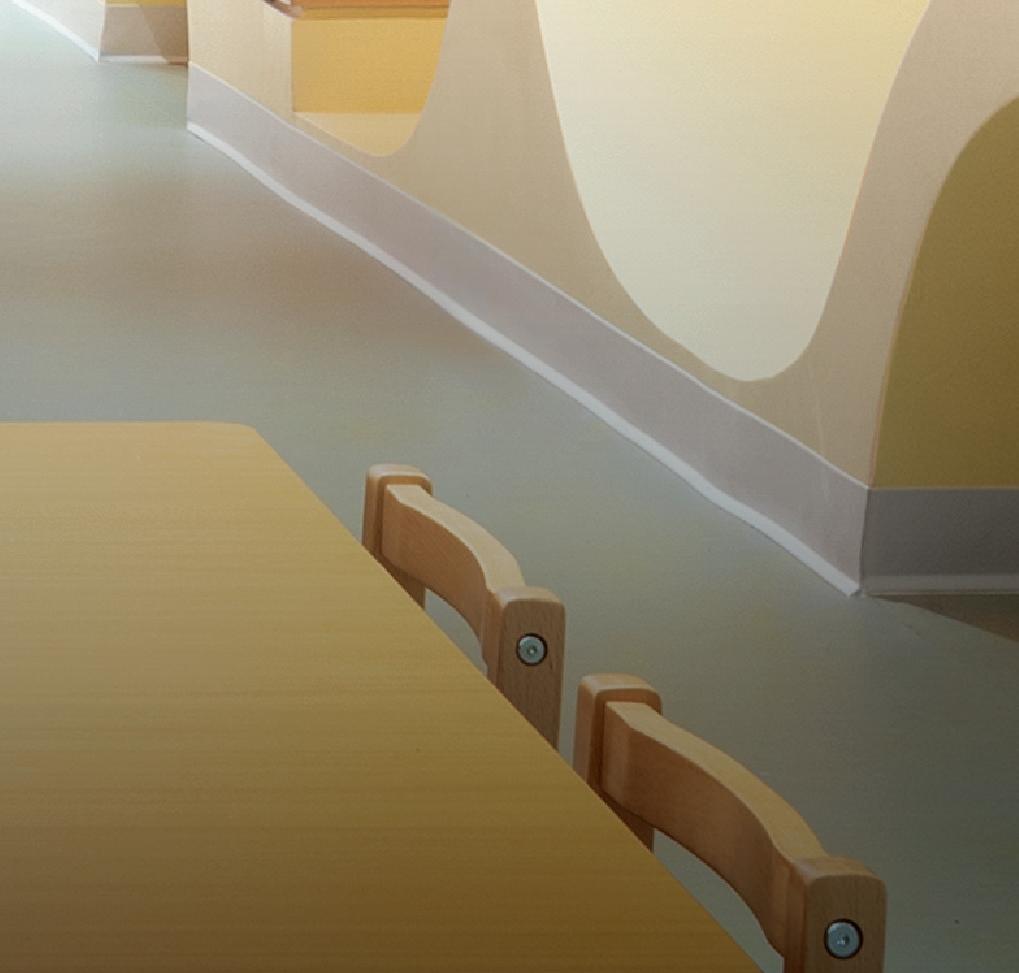
INDE.Awards O cial Shortlist 2020
INDESIGN Luminary Geo Warn University of Technology Sydney Central, mtstudio
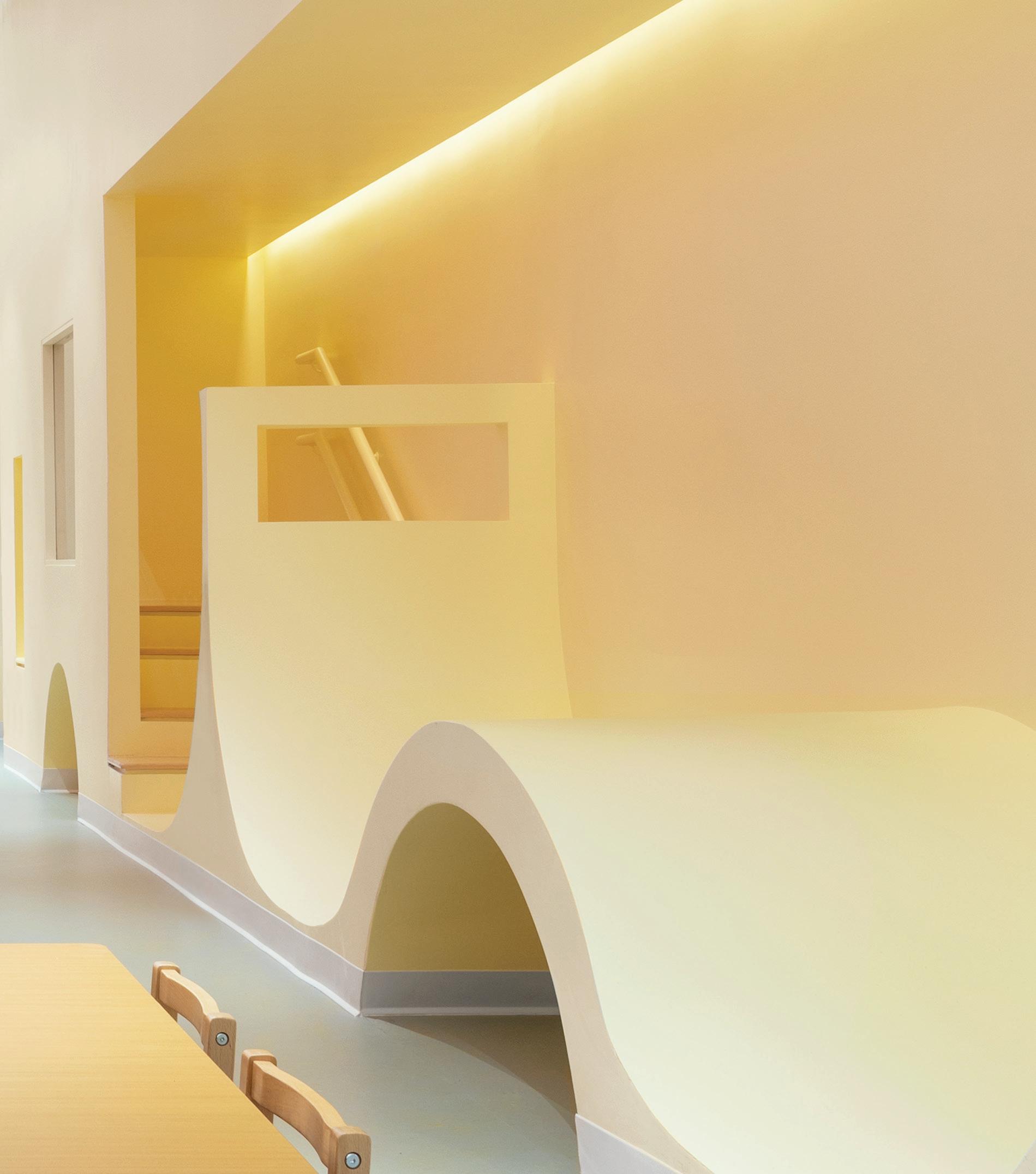
The Nest Childcare Centre, Davenport Campbell
Pembroke Middle School, Grieve Gillet Andersen
Indesign’s ‘Education on the Move’ Issue
INDESIGNLIVE.COM
Issue #81 / Australia $16.50 / New Zealand $17.50 / Singapore $12.95 / U.S. $21.99
9 > 771443 870000 81

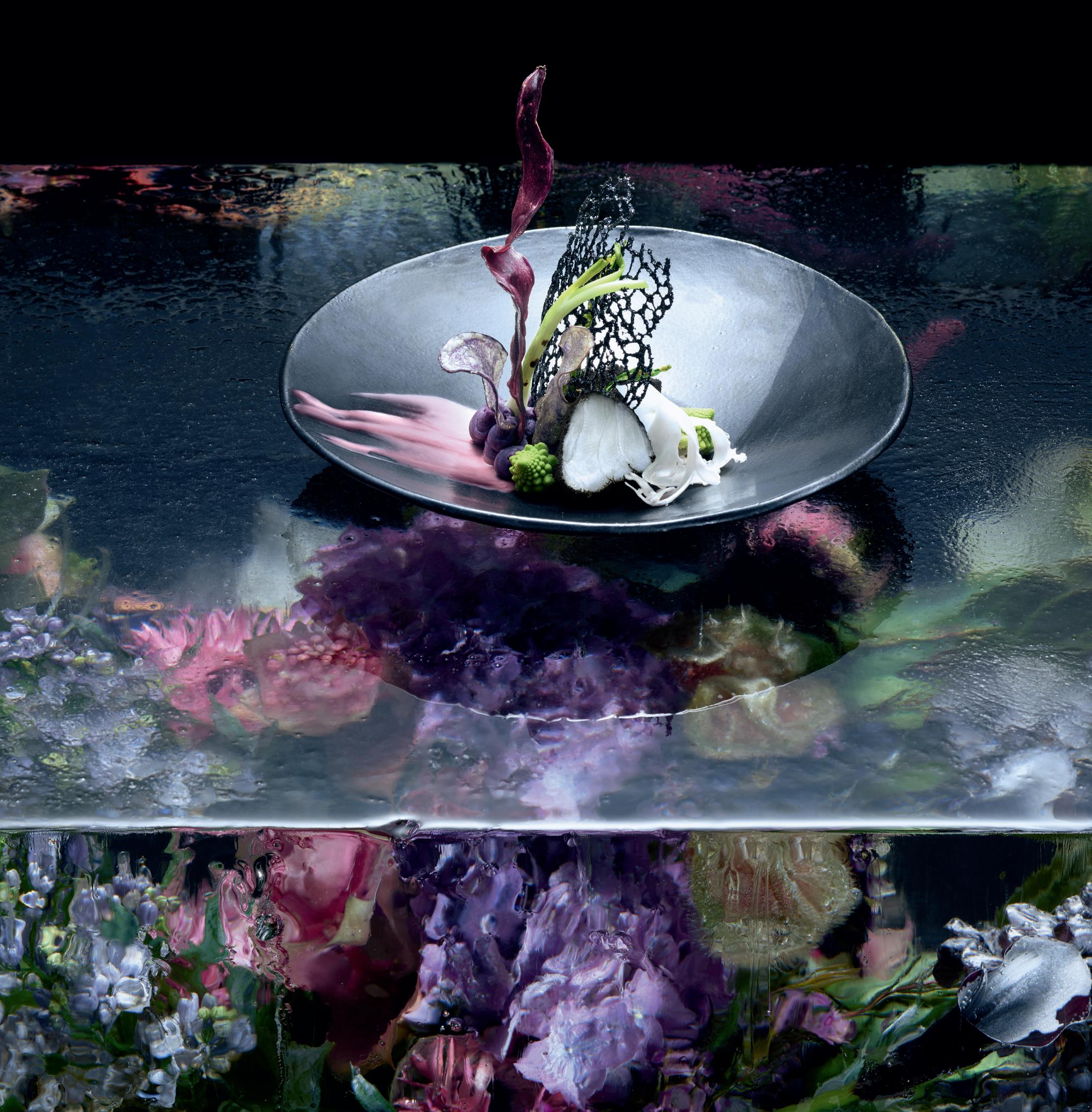
THE NEW GENERATION 7000 MIELE.COM.AU/GENERATION7000 Contact our Projects Specialists: VIC 03 9765 4311 NSW 02 8977 4289 QLD 07 3632 2437 SA 08 8352 9542 WA 08 9286 7836 NZ 09 360 3587 #LifeBeyondOrdinary REDEFINE PERFECTION TRP MI 8820 THE NEW GENERATION 7000 MIELE.COM.AU/GENERATION7000 Contact our Projects Specialists: VIC 03 9765 4311 NSW 02 8977 4289 QLD 07 3632 2437 SA 08 8352 9542 WA 08 9286 7836 NZ 09 360 3587 #LifeBeyondOrdinary REDEFINE PERFECTION

Introducing Lapalma Outdoor Collection
With a deep respect for nature and its effusion of shapes, materials and colours, Lapalma's latest collection offers new finishes suitable for outdoor environments.


Our masterpieces, require a master.

The difference is Gaggenau.
Create your masterpiece with ours. Then new combi-steam ovens and oven range open up a world that is waiting to be mastered. Every Gaggenau is distinctively designed, crafted from exceptional materials, offers professional performance, and has done so since 1683. Master steam: gaggenau.com.au

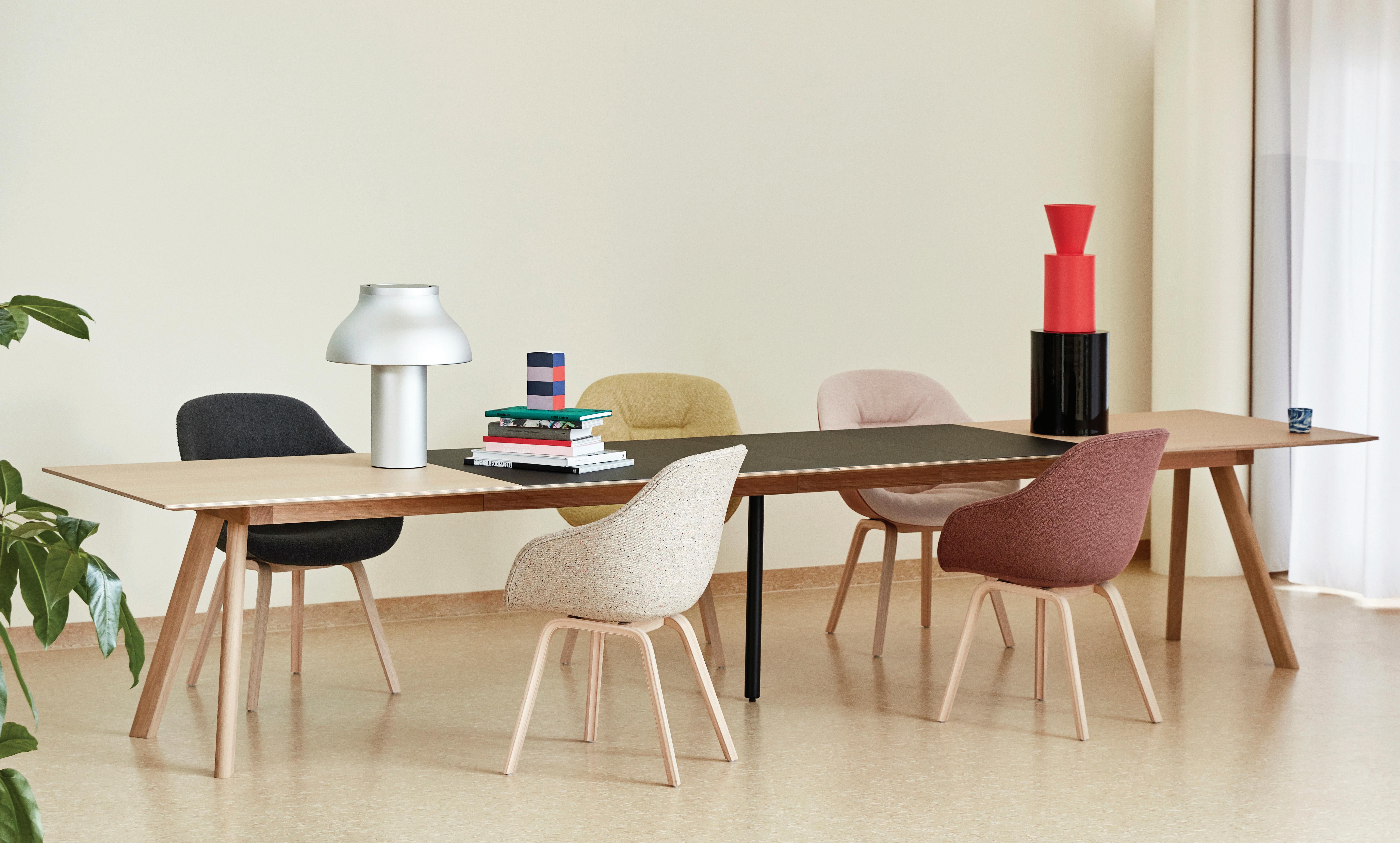

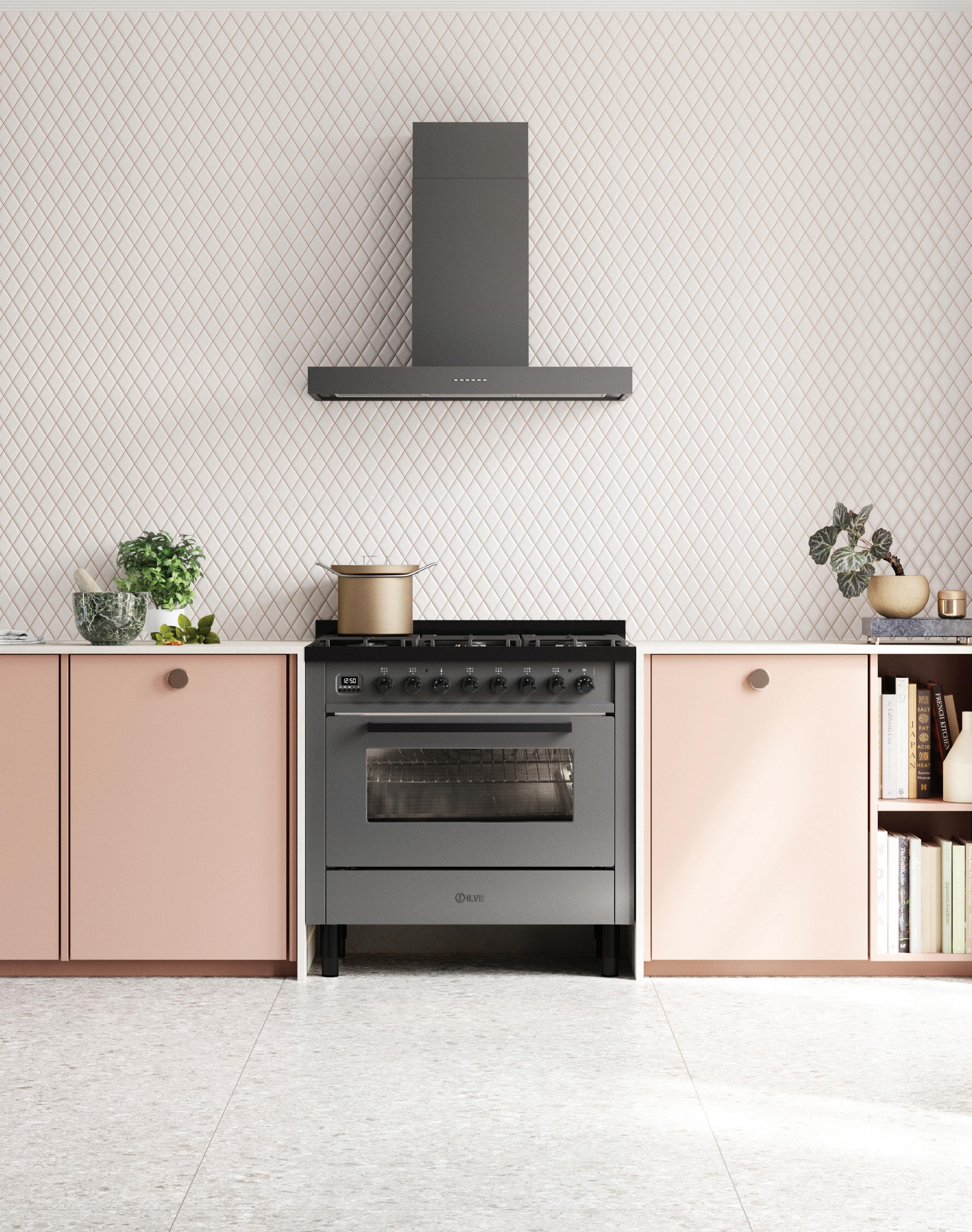



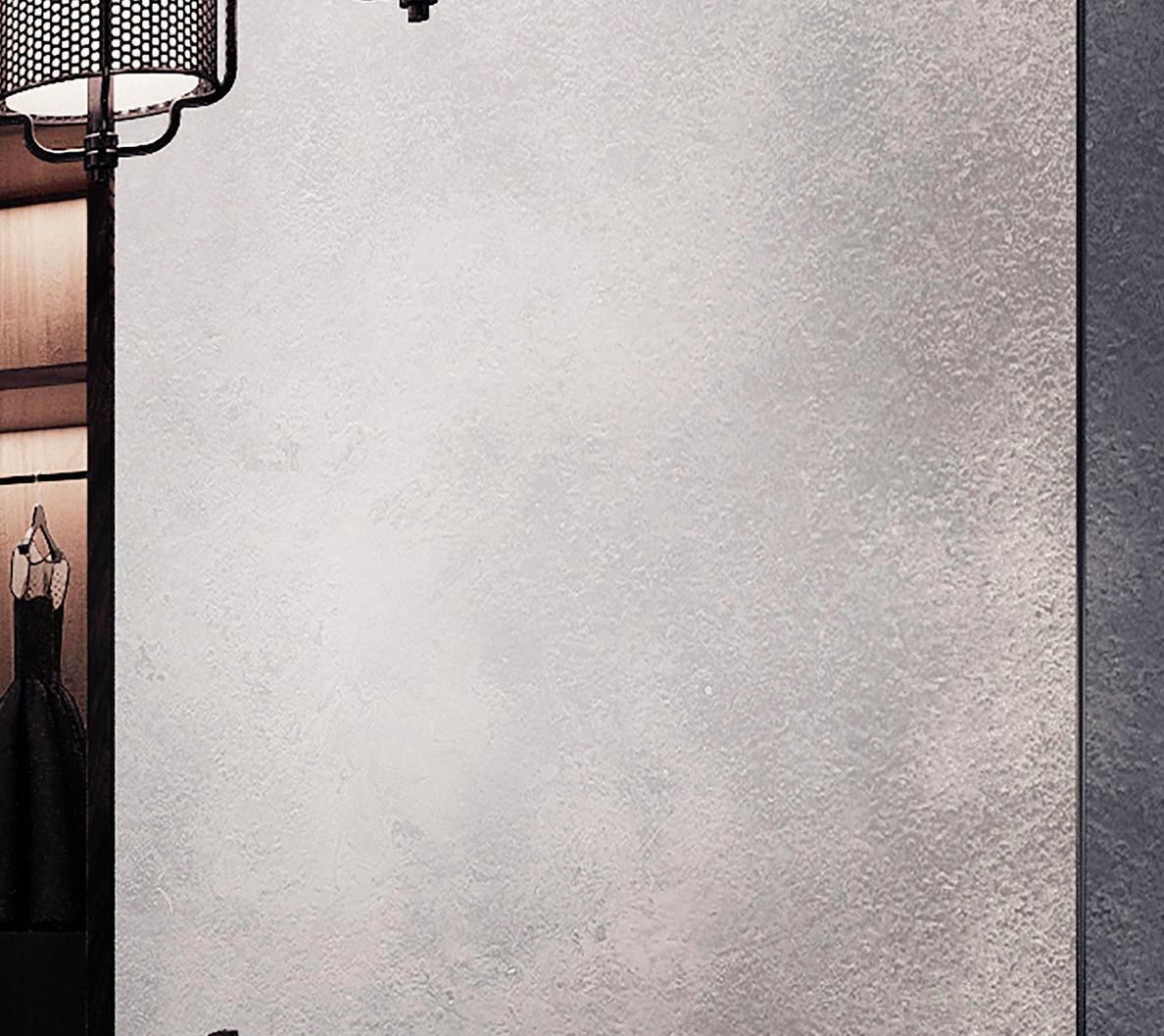
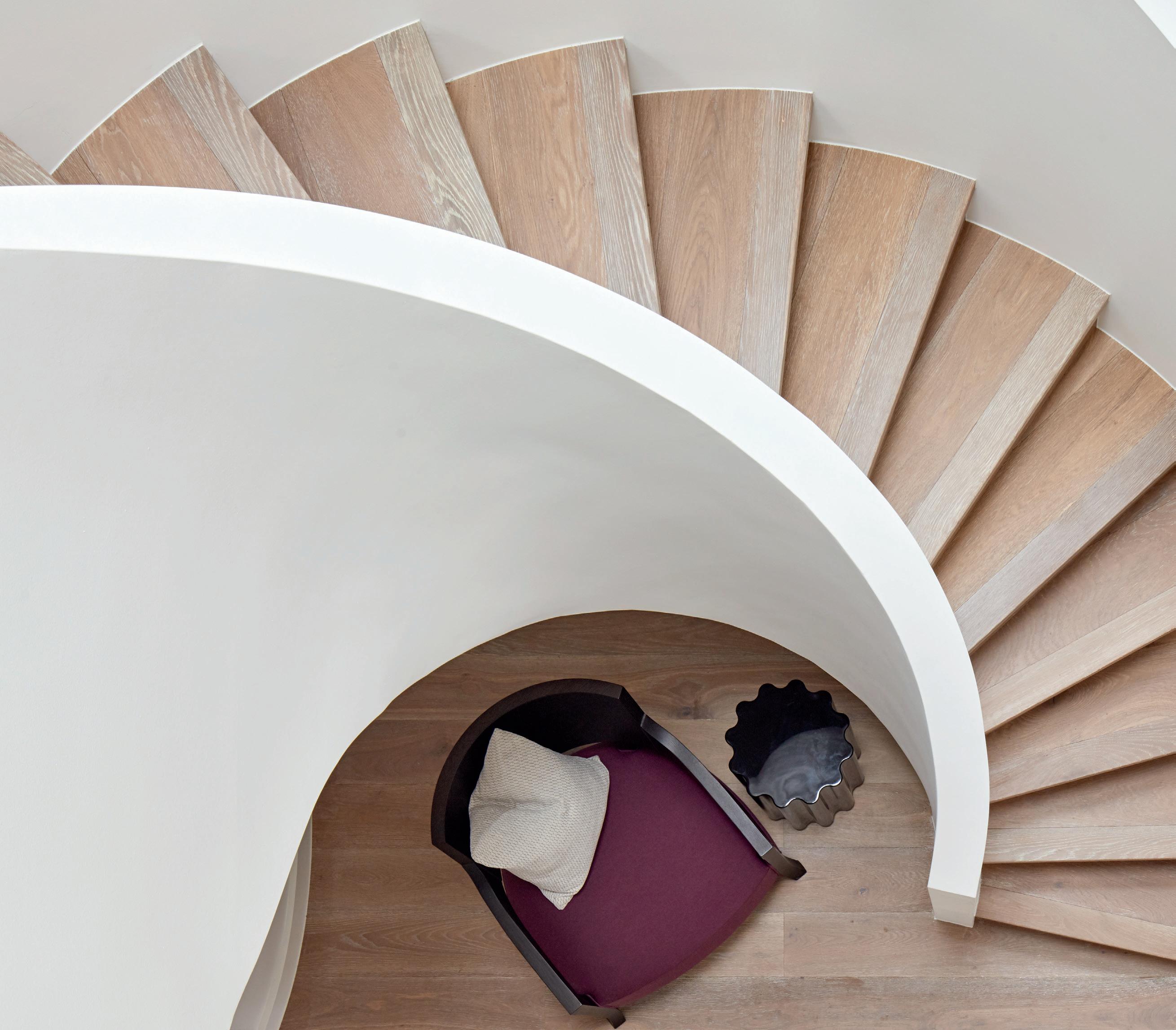








3 1 2 5 4
Authentic appeal. Premium performance.
to deliver the authentic
 The latest addition to the Laminex® Woodgrain range — three new decors designed
appeal of plywood, with the hardwearing performance of high-quality laminate.
The latest addition to the Laminex® Woodgrain range — three new decors designed
appeal of plywood, with the hardwearing performance of high-quality laminate.
Wardrobe joinery
Laminex Raw Birchply
Available in Natural and Chalk finish
Study wall lining
Laminex Smoked Birchply
Available in Natural and Chalk finish
Bedroom wall lining

Laminex Black Birchply

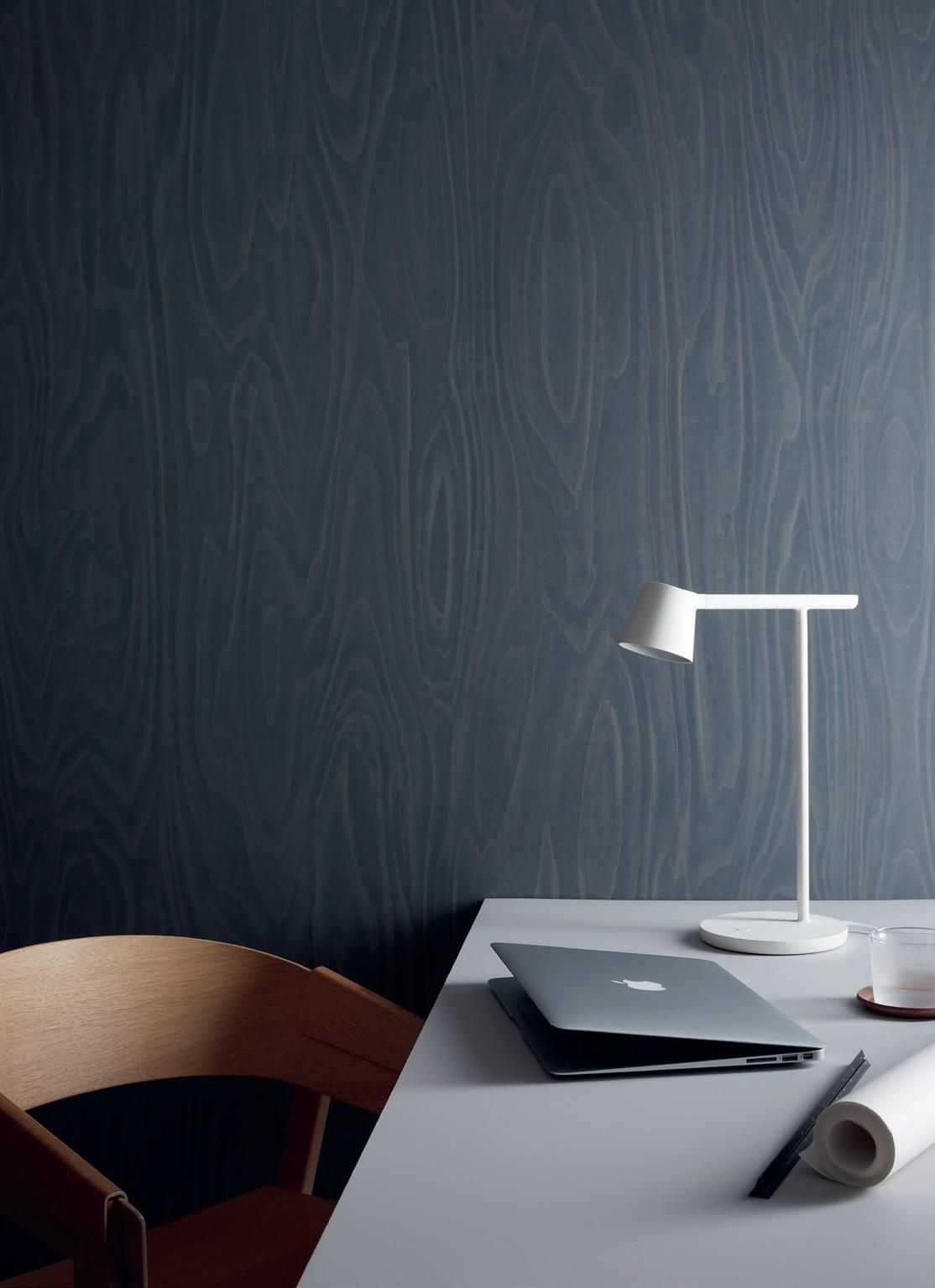
Available in Natural and Chalk finish
The benefits of plywood laminate
Plywood is beautiful, but it’s not suited to every application. That’s why Laminex has created a new-generation laminate that delivers the authentic appeal of rough-sawn plywood with the durability and longevity of high-quality laminate. These new decors are perfect for projects like commercial fit-outs and residential kitchens, where hardwearing, easy-to-clean surfaces are required.
The most obvious reasons for specifying plywood laminate are its resistance to water, scratches and stains, and its colour stability, which means that it won’t “yellow off” under exposure to light like real ply can. But it’s also much simpler to install – each panel comes pre-finished, so there’s no lacquering or staining required; it just has to be cut to size and edged. And the consistency of Laminex’s production process means that panels will match each other for tone and detail, whether they’re specified at the same time, or months apart.

For more information or to order a free sample visit laminex.com.au

‘The process of developing these new decors was all about achieving absolute realism.’
— Neil Sookee Laminex Product Design Manager

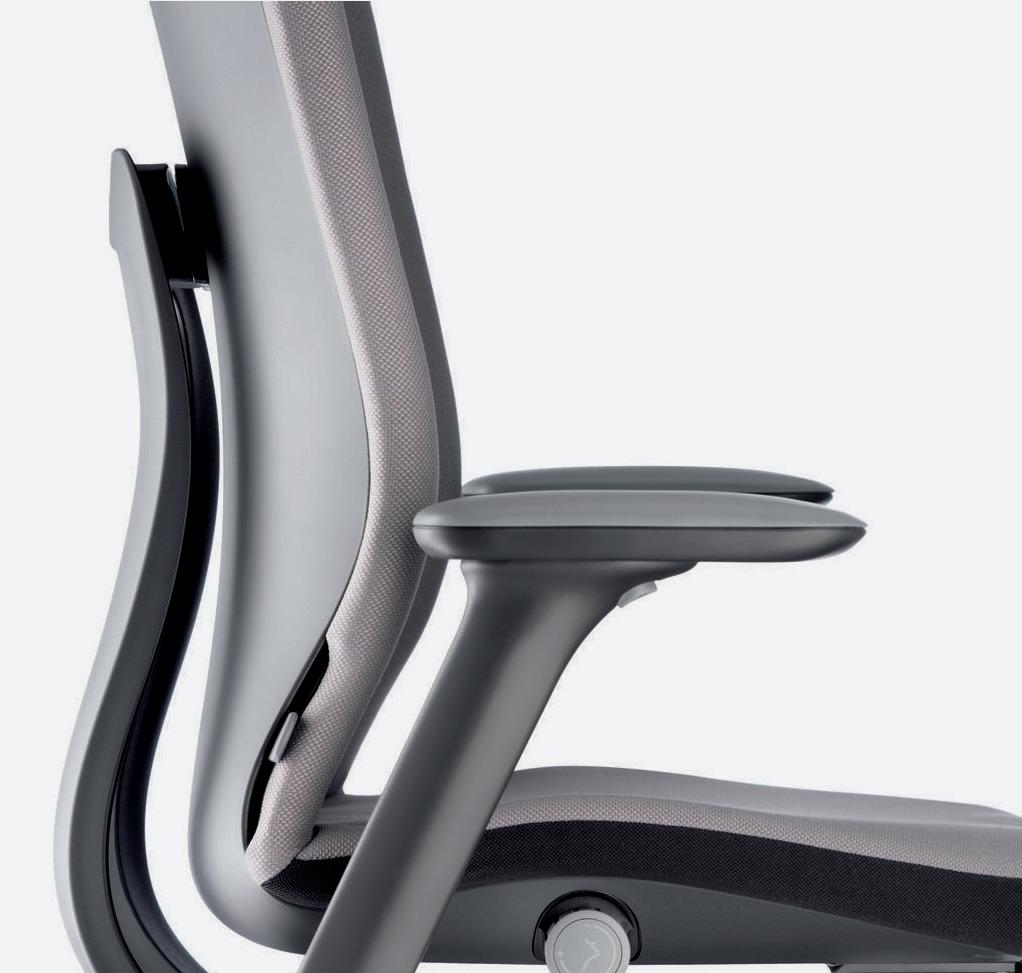








THE KITCHEN ESSENTIAL

All your drinking water needs, All-in-One beautifully designed system. Remove the need for multiple taps in your kitchen with a single, beautifully designed system that delivers boiling, chilled and sparkling filtered drinking water, as well as hot and cold unfiltered water for your sink.
The Zip HydroTap All-in-One offers every water option you need from one multi-functional tap and a single intelligent compact under-bench system. That’s why the Zip HydroTap will be the one and only hydration solution for your kitchen. Discover more at zipwater.com


THE WORLD’S MOST ADVANCED DRINKING WATER SYSTEM
ZIP HYDROTAP | PURE TASTING | INSTANT | BOILING | CHILLED | SPAR KLING
CEO and Founder
Raj Nandan raj@indesign.com.au
Managing Director
Kavita Lala kavita@indesign.com.au
Editor Alice Blackwood alice@indesign.com.au
Acting Editor Jan Henderson jan@indesign.com.au
Consulting Editor Paul McGillick
Indesignlive Editor
Neal Downward neal@indesign.com.au
Brand Director Colleen Black colleen@indesign.com.au
Brand Director
Dana Ciaccia dana@indesign.com.au
Business Development Manager

Brunetta Stocco brunetta@indesign.com.au

Production and Projects Manager

Brydie Shephard brydie@indesign.com.au
Production Assistant
Becca Knight becca@indesign.com.au
Accounts
Cassie Zeng cassie@indesign.com.au
Lead Designer Louise Gault louise@indesign.com.au


Designer Harry O’Donnell
Online Manager
Radu Enache radu@indesign.com.au
Web Developer Ryan Sumners ryan@indesign.com.au
Indesign Correspondents
Stephen Crafti (Melbourne)
Mandi Keighran (London)
Andrea Stevens (New Zealand)
Contributing Writers & Sub-Editors
Kim Aleksandrowicz
Leanne Amodeo
Stephen Crafti
Mandy Keighran
Paul McGillick
Sheree Proposch
Tess Ritchie
Gillian Serisier
Kirsty Sier
Max Thompson
Featured Photographers & Illustrators
Peter Bennetts
Steve Brown
Hannah Caldwell
Anne Claire de Breij
Nicole England
John Gollings
Riikka Kantinkoski
Masiar Pasquali
Johanna Seelemann
Griffin Simm
Dianna Snape
Rodrigo Vargas
Bo Wong
Head Office Level 1, 50 Marshall Street Surry Hills NSW 2010
(61 2) 9368 0150, (61 2) 9368 0289 (fax) indesignlive.com
Melbourne
1/200 Smith Street, Collingwood VIC 3066

Singapore
4 Leng Kee Road, #06–08,SIS Building, Singapore 159088 (65) 6475 5228, (65) 6475 5238 (fax) indesignlive.sg
Hong Kong Unit 12, 21st Floor Wayson Commercial Building, 28 Connaught Road West, Sheung Wan, Hong Kong indesignlive.hk
Join our global design community, become an Indesign subscriber!
To subscribe (61 2) 9368 0150 subscriptions@indesign.com.au indesignlive.com/subscriptions
Yearly subscription: Australia $55 (incl. GST) International AUD $110 Printed
INSTANT CONVENIENCE Zip HydroTap provides pure tasting filtered water with instant boiling, chilled and sparkling water. Discover more at zipwater.com
in Australia
is printed on paper that has been sourced from sustainable forests adhering to
chain of
environmental standards. All rights reserved. No part of this publication may be reproduced, stored in a retrieval system, transmitted in any form or by any other means, electronic, mechanical, photocopying, recording or otherwise. While every effort has been made to ensure the accuracy of the information in this publication, the publishers assume no responsibility for errors or omissions or any consequences of reliance on this publication. The opinions expressed in this publication do not necessarily represent the views of the editor, the publisher or the publication. Contributions are submitted at the sender’s risk, and Indesign Publishing cannot accept any loss or damage. Please retain duplicates of text and images. Indesign magazine is a wholly owned Australian publication, which is designed and published in Australia. Indesign is published quarterly and is available through subscription, at major newsagencies and bookshops throughout Australia, New Zealand, South East Asia and the United States of America. This issue of Indesign magazine may contain offers or surveys which may require you to provide information about yourself. If you provide such information to us we may use the information to provide you with products or services you have. We may also provide this information to parties who provide the products or services on our behalf (such as fulfillment organisations). We do not sell your information to third parties under any circumstances, however these parties may retain the information we provide for future activities of their own, including direct marketing. We may retain your information and use it to inform you of other promotions and publications from time to time. If you would like to know what information Indesign Media Asia Pacific holds about you please contact Nilesh Nandan (61 2) 9368 0150, (61 2) 9368 0289 (fax), subscriptions@indesign.com.au, indesignlive.com Extended Digital Extended Print Extended Events Indesign Family Strategic Partners INDESIGNLIVE.COM INDESIGN IS BROUGHT TO YOU BY
Indesign
PEFC
custody and ISO14001
These last months have been an unprecedented time of challenge and change throughout Australia and the world. Who could have predicted this time last year life as we now know it? However we can take heart and strength from our family, friends and colleagues and this is the time to look to the future.

Having joined the Indesign team as acting editor in February, I have been encouraged and inspired by my colleagues and especially my publisher who has shown leadership, innovative thinking and a passion in support of the architecture and design community and care for his staff. There are many plans in the pipeline and it is inevitable that new ways of thinking about and presenting design will emerge to become a new normal. As things have changed around us, rest assured that Indesign is on track presenting what we all love, design at its best.


Now more than ever it is important to nurture our children and look to their future so it is timely that this issue focuses on Education. There are essays to provoke thought and projects to inspire as we feature the new education paradigm in all its manifestations.
With much excitement we also present the shortlist for the 2020 INDE.Awards. A record number of entries were received this year and there is a veritable feast of projects and practices showcased in this shortlist. We look forward to the announcement of the winners and highly commended but we will applaud every entrant as we celebrate together on 14 August, the date of our gala.
Of course Saturday InDesign is also a highlight on the design calendar and will be happening on 29 August in Melbourne. This will be the ideal opportunity to partake of the very best product and retail offerings that the city has to offer so note the date. With so much happening it’s difficult to keep up but rest assured Indesign will be with you every step of the way.
INDESIGNLIVE.COM 22 FROM THE EDITOR & PUBLISHER
indesignlive.com /indesignlive @indesignlive @indesignlive 250,950+ readers engaged across print, digital and social... Raj
On The Cover SolBe Learning Centre by
Nandan CEO and Founder, Indesign Media Asia Pacific
Jan Henderson Acting Editor, Indesign
Supernormal.
Photo: Trent Bell Erratum
Correction
on page 118 of Indesign #80. With apologies, the photography credit should read Christopher Frederick Jones
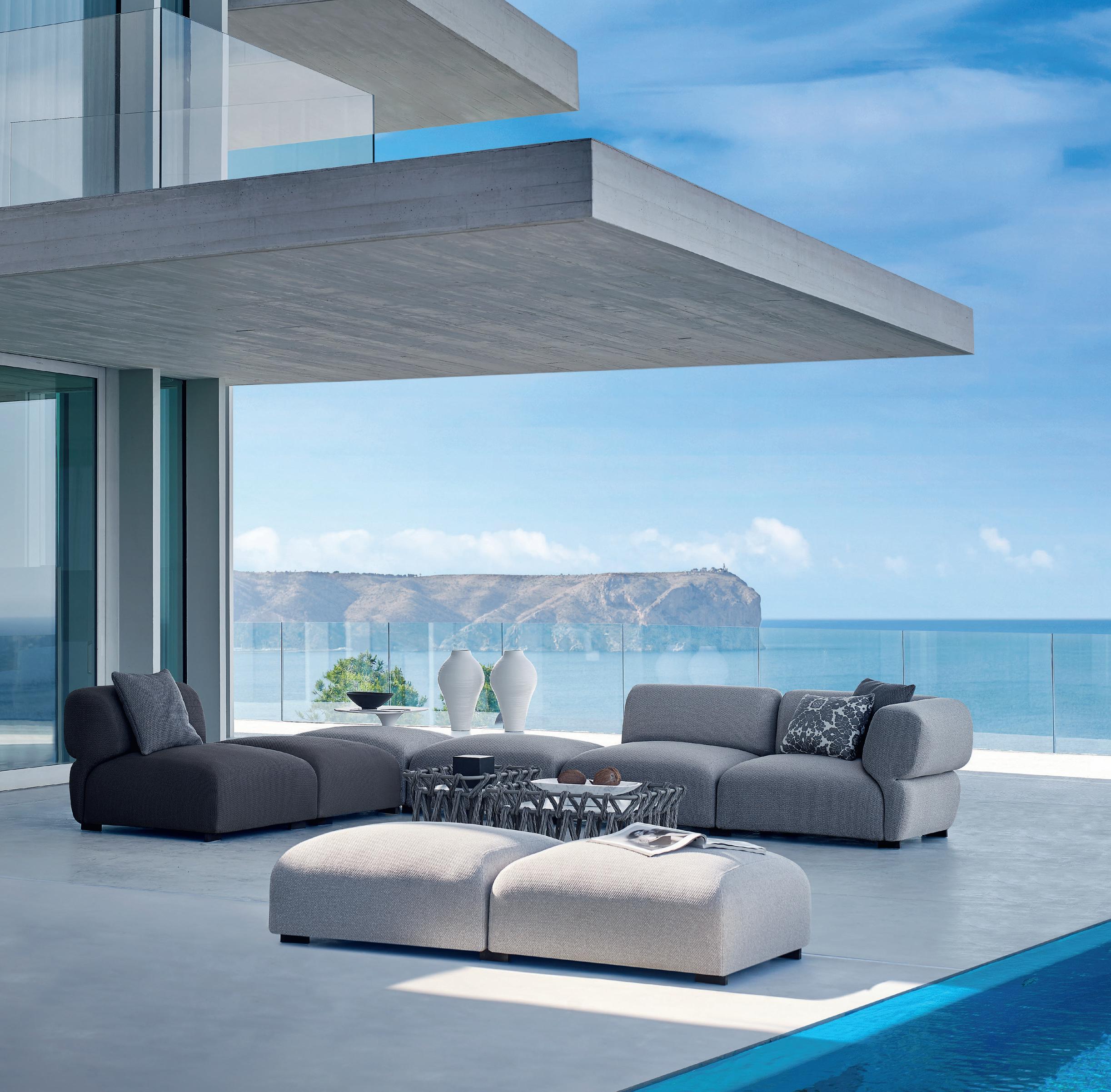 Kim Aleksandrowicz Client Engagement
Kim Aleksandrowicz Client Engagement
WMK Architecture
Having been engaged in the architecture and design industry for more than 15 years, Kim’s work is driven by a belief that successful design is to serve and support the people at it’s centre. Her cross-disciplinary experience provides for a unique understanding of client’s needs. Kim is responsible for guiding the critical briefing and discovery phases for major commercial projects across WMK Melbourne’s portfolio.
A Digital Readiness
Page 140
Introducing the Voices of Indesign –
The Design Intelligence Issue Education on the Move
Sheree is an architect with more than 20 years experience specialising in education, research and health architecture. Her Australian work includes the Life Sciences Precinct and Fishermans Bend Campuses – both major projects for the University of Melbourne. With an artist’s eye and a business brain Sheree sees architecture as a balanced combination of design, science and commerce.
Precincts & STEMM
Page 130
Amodeo Writer, Editor and Media Consultant
Leanne Amodeo is a writer, editor and media consultant. She contributes regularly to international publications and exhibition catalogues on architecture, design and visual art and is a former editor of Monument and inside magazines.

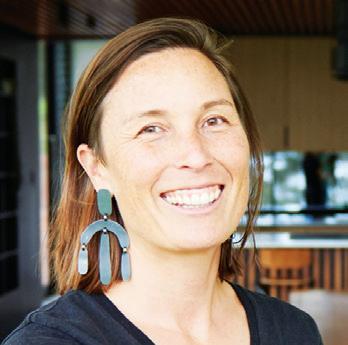



Design For Learning
Page 124
Playtime
Page 133
Collaboration For The Future
Page 142
Paul McGillick Writer, Editor, Public Speaker McGillick Consulting

Paul McGillick’s career as a writer and curator has extended from architecture and design to the visual and performing arts. His 18 books include five on the architecture of SouthEast Asia. For more than 12 years he was Editorial Director at Indesign Media where he edited Indesign magazine and was founding editor of Habitus magazine. He wrote numerous articles for these magazines and has contributed essays on industrial design, urban design and Australian architecture to many books, as well as editing a monograph on the architecture of the National Gallery of Australia.
Team Player Page 72
Reinventing The Campus Page 90
Bo Wong is a photographer who works collaboratively to visually communicate projects with integrity and careful consideration. She shoots for both public and private clients and recently launched her podcast, Soul Traders, for creative freelancers. Bo also runs workshops for architects and artists to better shoot their own work. Portrait photography Roger D’Souza.
Team Player Page 72
Over the past 20 years Gillian has worked in the art and design industry as writer, editor, consultant and correspondent. Most recently Gillian has been co-editor of Inside Interior Design Review for the past six years with a preceding six years as Sydney Editor. During this time, Gillian has written critically on Australia’s preeminent community, from architects and interior designers to product and furniture designers, artists and makers. –
The Birds’ Nest Page 106
–
Sheree Proposch Principal Hassell
–
Leanne
–
–
Bo Wong Photographer
–
Gillian Serisier Writer, Editor, Consultant and Correspondent
INDESIGNLIVE.COM 24 CONTRIBUTORS
Introducing Zen, embossed acoustic wall panels.


enquiries @ wovenimage.com +61 1800 888 650 w ovenimage.com
INDE.AWARDS
2020 Shortlist
29-46
IN SHORT
The ultimate industry cheat sheet.
49-65
IN FAMOUS
Big thinkers and creative gurus.
71-83
INDESIGN Luminary Geoff Warn, Stephen Crafti, FAMOUS FACE Formafantasma
IN SITU
Provocative, innovative and inspiring design.
87-117
University of Technology Sydney (UTS) Central by fjmtstudio.
Burwood Brickworks by NH Architecture, interiors by Russell & George in collaboration with NH Architecture
The Nest Childcare Centre by Davenport Campbell -
Richmond Highschool, Melbourne by Hayball
IN DEPTH
Education on the move.
121-143
Featuring
Pembroke Middle School by Grieve Gillet Andersen
SolBe Learning Centre by Supernormal
MLC School Senior Centre by BVN
Special edition editor Leanne Amodeo -
With special comment from Hassell
WMK Architecture
Max Thompson
-
-
INDESIGNLIVE.COM 26 CONTENTS
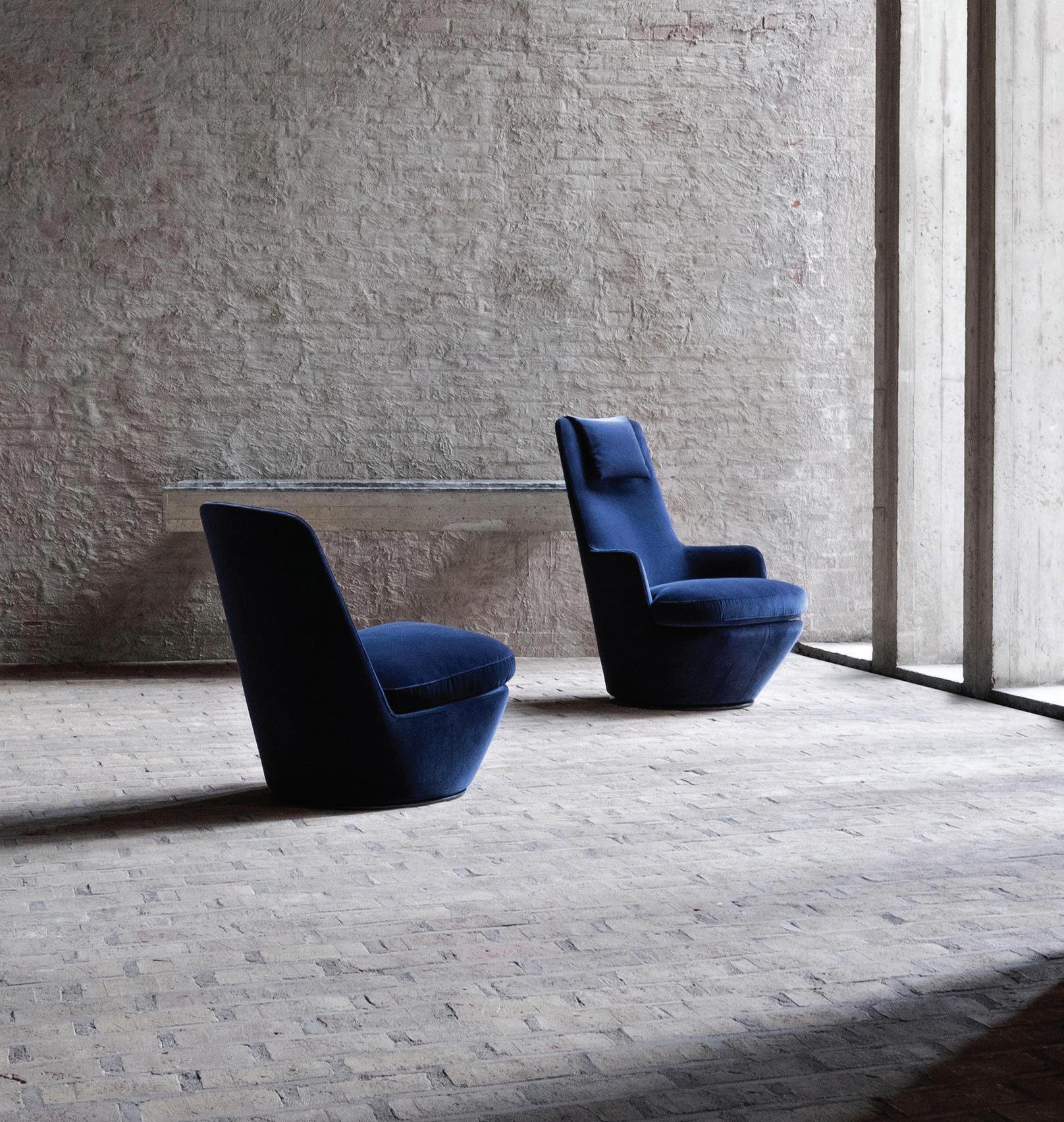
SYDNEY 5/50 Stanley Street Darlinghurst +61 2 9358 1155 MELBOURNE 11 Stanley Street Collingwood +61 3 9416 4822
Pre and Hi Turn Lounge
Chairs
by Bensen, Canada

Presenting the most progressive architecture and design in the Indo-Pacific.




INDE.Awards


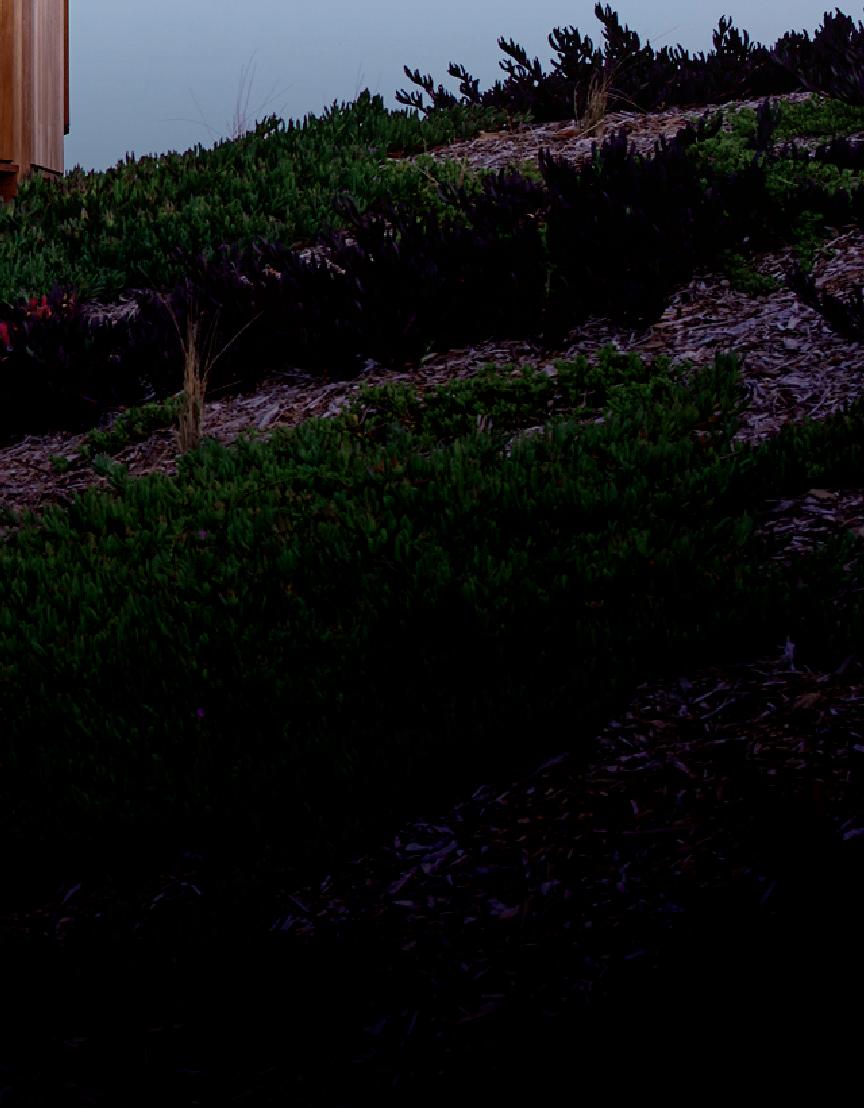
Official Shortlist 2020
























INDE.Awards 2020 Jury














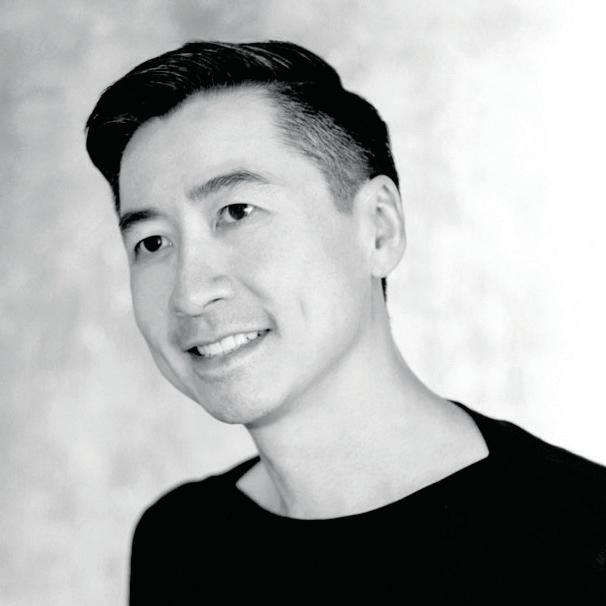
This year has been a challenging one however the brightest light on the horizon is the 2020 INDE.Awards. We received a record-breaking 473 entries, an increase of ten per cent from 2019, and the calibre, diversity and creativity of design has been truly outstanding.
Submissions poured in from 14 locations around the Indo-Pacific region and our two special categories for 2020, Best of the Decade Living Space and Best of the Decade Work Space, received an exceptional collection of projects.
It goes without saying that the projects, objects, practices and people that have entered the 2020 INDE.Awards is a dynamic group representing the very best in architecture and design that our region has to offer. Thank you to everyone who entered and congratulations to the shortlist.
Our sincere thanks to our esteemed jury, who worked tirelessly to consider all submissions and select the shortlist presented in this issue.
James Calder Global Director, User Strategy ERA-co AUSTRALIA
Chan Ee Mun Architect WOHA SINGAPORE
Eleena Jamil Principal Eleena Jamil Architect MALAYSIA
Jan Utzon Architect Utzon Architects DENMARK
Josh Comaroff Design Consultant Lekker Architects SINGAPORE
Andrea Trimarchi and Simone Farresin, Founders Formafantasma NETHERLANDS
Luke Yeung Principal Architectkidd THAILAND
Paul McGillick Writer, Editor, Public Speaker McGillick Consulting AUSTRALIA
Shashi Caan Founding Partner SC COLLECTIVE USA/UK
Raj Nandan Founder & CEO Indesign Media Asia Pacific AUSTRALIA/SINGAPORE
Sue Carr Founder & Principal Director Carr AUSTRALIA
Leone Lorrimer National Practice Leader GHDWoodhead AUSTRALIA
Praveen Nahar Director India National Institute of Design INDIA
Budiman Hendropurnomo Director Denton Corker Marshall (Jakarta Studio) INDONESIA
Koichi Takada Principal Koichi Takada Architects AUSTRALIA
INDEAWARDS.COM 30
Page 29: St Andrews Beach House by Austin Maynard Architects, The Living Space INDE.Awards 2019 Shortlist, photo: Derek Swalwell.
Our Partners







The INDE.Awards would not be possible without the support of our valued partners and we would like to thank each and every one of these exceptional companies for their valued contribution this year.
The growth of the INDE.Awards is testament to the partnerships that we enjoy with our supporters and the architecture and design communities across the Indo-Pacific region. In 2020, like no other year, our Awards program has helped to unite us all in the quest for great design and this is truly something to celebrate.
Thank you.

Platinum Partner The Design Studio Partner The Prodigy Partner The Luminary Partner The Multi-Residential BuildingPartner The Object Partner Trophy Partner The Living Space Partner The Wellness Space Partner The Influencer Partner Best of the Decade The Work Space Best of the Decade The Living Space The Workspace Partner The Building Partner The Shopping Space Partner The Social Space Partner The Learning Space Partner Strategic Partners INDE.AWARDS SHORTLIST 31
Best of the Decade | The Living Space
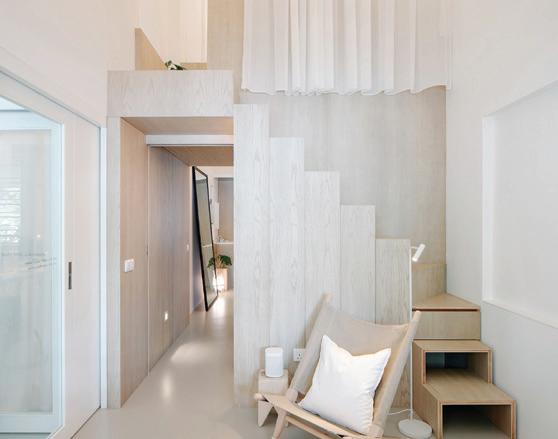






As the place in which we live and play the importance of great residential design is paramount. The Best of the Decade I The Living Space recognises outstanding design resolution, attention to detail, creativity and innovation that ensures this project is an icon of our time.




Proudly partnered by
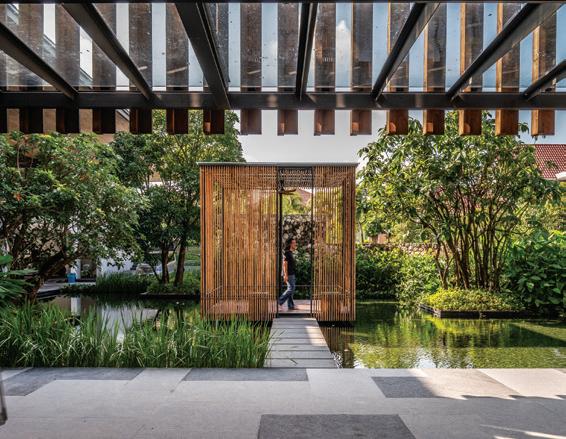 Photography, from top left: Doan Thanh Ha, Nguyen Tien Thanh, Katherine Lu, John Gollings, Creative Clicks, Sharrin Rees, Ameen Deen, Khoo Guo Jie, Rory Gardiner, Derek Swalwell, Mahesh Mendis, Peter Bennetts.
Blooming Bamboo Home H&P Architects VIETNAM
House68 DCA with EDI MALAYSIA
Redfern Warehouse Ian Moore Architects AUSTRALIA
Brick Cave H&P Architects VIETNAM
Indigo Slam Smart Design Studio with Khai Liew AUSTRALIA
St Vincent’s Place B.E Architecture AUSTRALIA
Clovelly Apartment James Garvan Architecture AUSTRALIA
Planter Box House formzero MALAYSIA
Studio Dwelling Palinda Kannangara Architects SRI LANKA
Croft House James Stockwell Architect AUSTRALIA
PROJECT #13 STUDIO WILLS + Architects SINGAPORE
Photography, from top left: Doan Thanh Ha, Nguyen Tien Thanh, Katherine Lu, John Gollings, Creative Clicks, Sharrin Rees, Ameen Deen, Khoo Guo Jie, Rory Gardiner, Derek Swalwell, Mahesh Mendis, Peter Bennetts.
Blooming Bamboo Home H&P Architects VIETNAM
House68 DCA with EDI MALAYSIA
Redfern Warehouse Ian Moore Architects AUSTRALIA
Brick Cave H&P Architects VIETNAM
Indigo Slam Smart Design Studio with Khai Liew AUSTRALIA
St Vincent’s Place B.E Architecture AUSTRALIA
Clovelly Apartment James Garvan Architecture AUSTRALIA
Planter Box House formzero MALAYSIA
Studio Dwelling Palinda Kannangara Architects SRI LANKA
Croft House James Stockwell Architect AUSTRALIA
PROJECT #13 STUDIO WILLS + Architects SINGAPORE
INDEAWARDS.COM 32
Tower House Austin Maynard Architects AUSTRALIA
Best of the Decade | The Work Space

The workplace has undergone an ambitious evolution to become a high-functioning environment that is social, cultural and community-driven. This award honours a project and place that has redefined the very meaning of how and where we work.
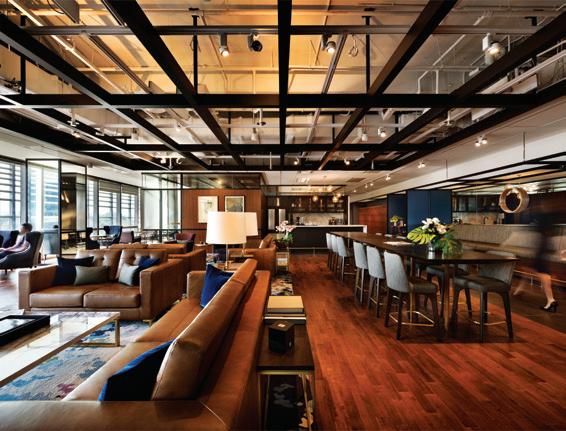
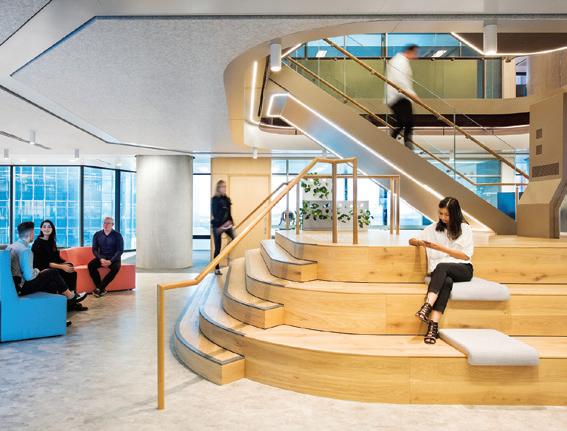
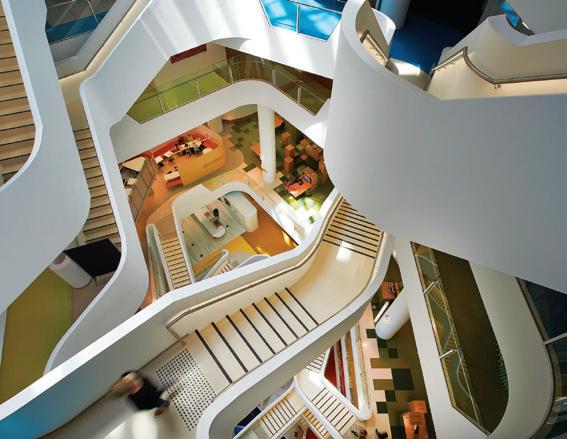

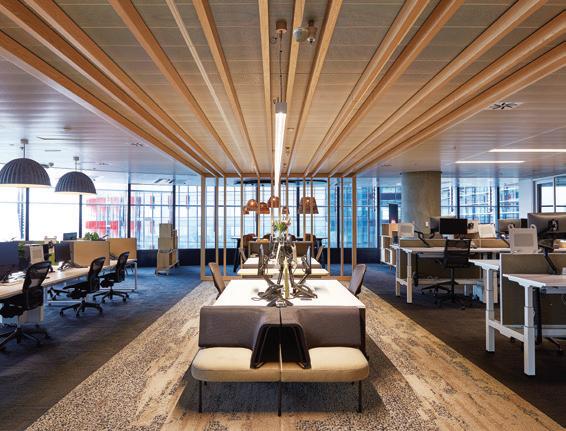




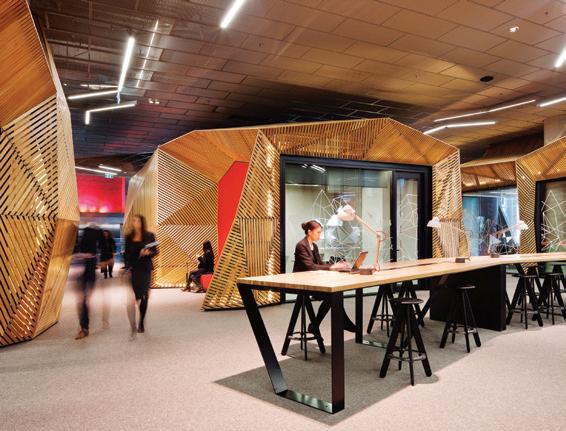
Proudly partnered by
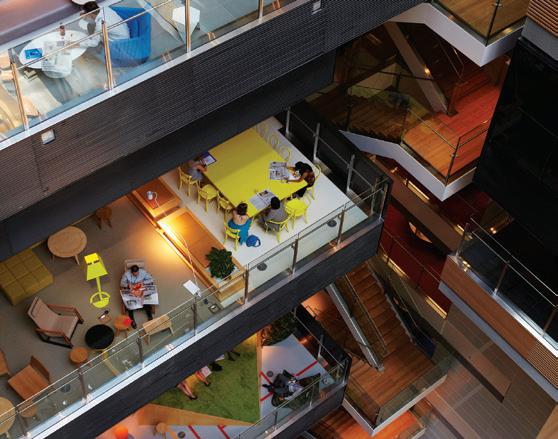 Photography, from top left: Earl Carter, Richard Glover, Nicole England, Earl Carter, Shannon McGrath, Shannon McGrath, Peter Clarke, Nicole England, Owen Raggett, Nicole England, Paul Martin, E.K. Yap.
ANZ Centre - Interior Hassell with Lendlease Design AUSTRALIA
NAB 700 Bourke Street Woods Bagot AUSTRALIA
PwC Experience Centre Siren Design Group (Singapore) SINGAPORE
Carpe Diem Community, International Towers, Tower Two Geyer with International Towers AUSTRALIA
Paspaley Pearls Richards Stanisich AUSTRALIA
PwC Melbourne Client Collaboration Floors Futurespace AUSTRALIA
CBA Axle South Eveleigh Woods Bagot AUSTRALIA
PDG Studio Tate AUSTRALIA
Space & Time Russell & George AUSTRALIA
Medibank Place - Interior Hassell with K.P.D.O., Chris Connell Design, Russell & George AUSTRALIA
PwC Barangaroo Sydney Client Collaboration Floors Futurespace AUSTRALIA
Photography, from top left: Earl Carter, Richard Glover, Nicole England, Earl Carter, Shannon McGrath, Shannon McGrath, Peter Clarke, Nicole England, Owen Raggett, Nicole England, Paul Martin, E.K. Yap.
ANZ Centre - Interior Hassell with Lendlease Design AUSTRALIA
NAB 700 Bourke Street Woods Bagot AUSTRALIA
PwC Experience Centre Siren Design Group (Singapore) SINGAPORE
Carpe Diem Community, International Towers, Tower Two Geyer with International Towers AUSTRALIA
Paspaley Pearls Richards Stanisich AUSTRALIA
PwC Melbourne Client Collaboration Floors Futurespace AUSTRALIA
CBA Axle South Eveleigh Woods Bagot AUSTRALIA
PDG Studio Tate AUSTRALIA
Space & Time Russell & George AUSTRALIA
Medibank Place - Interior Hassell with K.P.D.O., Chris Connell Design, Russell & George AUSTRALIA
PwC Barangaroo Sydney Client Collaboration Floors Futurespace AUSTRALIA
INDE.AWARDS SHORTLIST 33
The Great Room at One George Street Hassell SINGAPORE
Proudly partnered by

Presenting four design icons whose influence enhances the landscape of our region.
“I’ve put my consideration in designing buildings that are climateconscious and incorporate traditional elements organically.”
Andra Matin Principal, Andramatin INDONESIA
“I am a firm believer in the potential of design to affect positive societal change.”
 Juan Du
Juan Du


Principal, The University of Hong Kong, Urban Ecologies Design Lab,
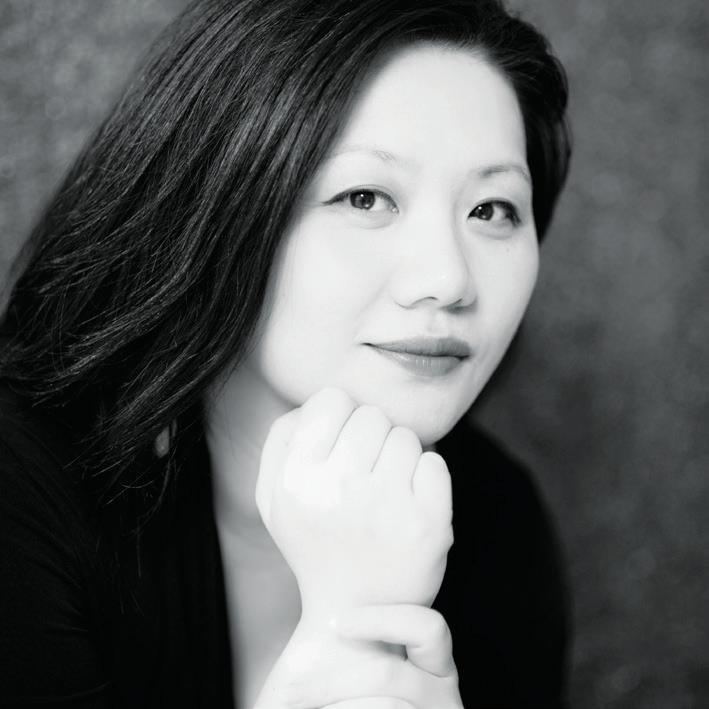
HONG
IDU_Architecture
 KONG
KONG

“We design with a communal spirit and similarly believe contribution to the industry is essential.”






 Kirsten Stanisich &
Kirsten Stanisich &







“The design of refined products which are of value to people is always my overarching intent.”


Jonathan
Richards Directors, Richards Stanisich AUSTRALIA




 Ross Gardam Founder, Ross Gardam Studio AUSTRALIA
Ross Gardam Founder, Ross Gardam Studio AUSTRALIA






INDEAWARDS.COM 34
Proudly partnered by
Celebrating the new trailblazers of the design world in the Indo-Pacific region.

“Progressiveness is the ability for us to cross boundaries, to work together collectively as a region.”

Goy Zhenru, Dessy Anggadewi and Sam Loetman
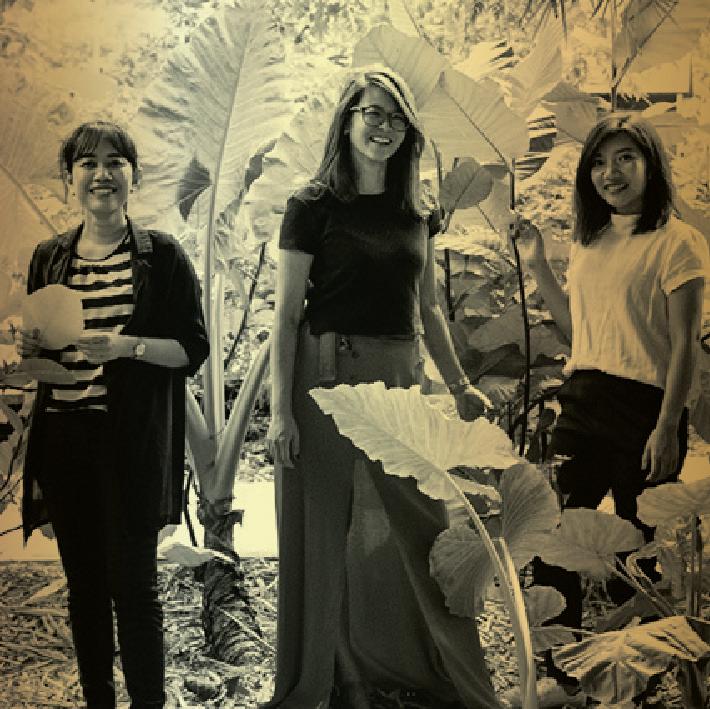

Goy Architects SINGAPORE
“We’re motivated to demonstrate that architecture and design has a crucial place in rural and regional Australia.”
 Aaron Nicholls &
Aaron Nicholls &





Phillip Nielsen


 Regional Design Service AUSTRALIA
Regional Design Service AUSTRALIA
“We create spaces with our unique points of view.”



 David Flack & Mark Robinson Flack Studio AUSTRALIA
David Flack & Mark Robinson Flack Studio AUSTRALIA


“We value good honest unpretentious solutions to everyday life, and not creating trend-driven design outcomes.”












Rafael Arsono & Margareta Miranti
Rafael Miranti Architects INDONESIA

INDE.AWARDS SHORTLIST 35
The Building
The Building recognises the region’s most progressive and original architecture that responds to place and reflects the cultural surround.





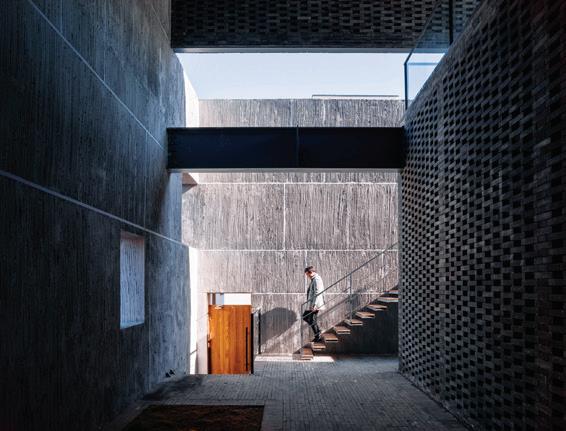
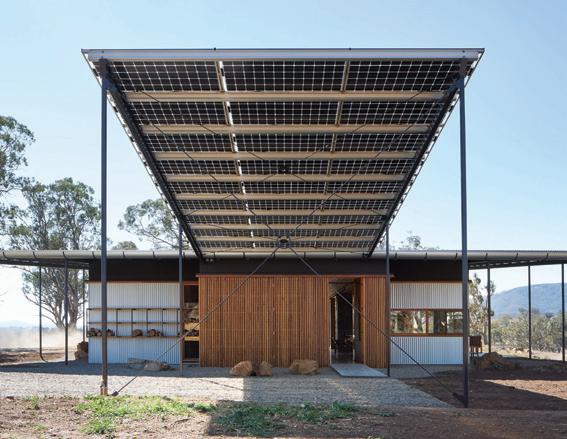

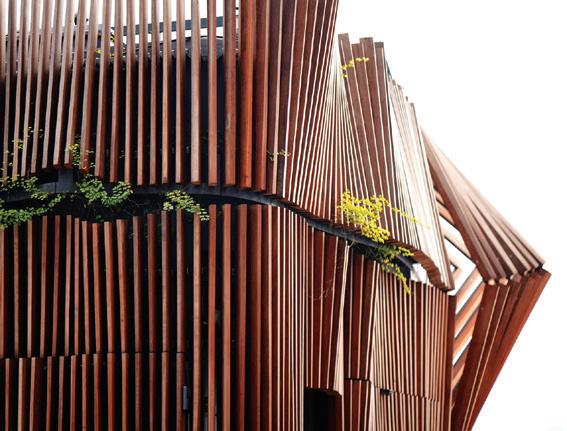


Proudly partnered by
 Photography, from top left: Dianna Snape, Haiting Sun, LAAB Architects, Tom Roe, Patrick Reynolds, Katherine Lu, Peter Bennetts, Derek Swalwell, Hui Zhang, W Workspace, Barton Taylor, Murray Fredericks.
Burwood Brickworks NH Architecture with Russell & George AUSTRALIA
Nelson School of Music Irving Smith Architects with Ian Bowman, Architect & Conservator NEW ZEALAND
Renovation of Tianjin Tractor Factory Archiland with Tianjin Architecture Design Institute CHINA
Garden as Before –Gallery and Studio of WYS office PROJECT CHINA
North Bondi House James Garvan Architecture with Lisa Tackenburg Interior Design AUSTRALIA
Samsen STREET Hotel Chat Architects THAILAND
Habour Kiosk LAAB Architects with Ronald Lu & Partners HONG KONG
Parks Victoria Albert Park Office & Depot Harrison and White with Archier AUSTRALIA
Up Side Down Akubra House Alexander Symes Architect AUSTRALIA
Marrickville Library BVN AUSTRALIA
Point Nepean Residence B.E Architecure AUSTRALIA
Photography, from top left: Dianna Snape, Haiting Sun, LAAB Architects, Tom Roe, Patrick Reynolds, Katherine Lu, Peter Bennetts, Derek Swalwell, Hui Zhang, W Workspace, Barton Taylor, Murray Fredericks.
Burwood Brickworks NH Architecture with Russell & George AUSTRALIA
Nelson School of Music Irving Smith Architects with Ian Bowman, Architect & Conservator NEW ZEALAND
Renovation of Tianjin Tractor Factory Archiland with Tianjin Architecture Design Institute CHINA
Garden as Before –Gallery and Studio of WYS office PROJECT CHINA
North Bondi House James Garvan Architecture with Lisa Tackenburg Interior Design AUSTRALIA
Samsen STREET Hotel Chat Architects THAILAND
Habour Kiosk LAAB Architects with Ronald Lu & Partners HONG KONG
Parks Victoria Albert Park Office & Depot Harrison and White with Archier AUSTRALIA
Up Side Down Akubra House Alexander Symes Architect AUSTRALIA
Marrickville Library BVN AUSTRALIA
Point Nepean Residence B.E Architecure AUSTRALIA
INDEAWARDS.COM 36
Welcome to the Jungle House CplusC Architectural Workshop AUSTRALIA
The Work Space
The Work Space celebrates design that incorporates form and function, style and finesse in a work place.










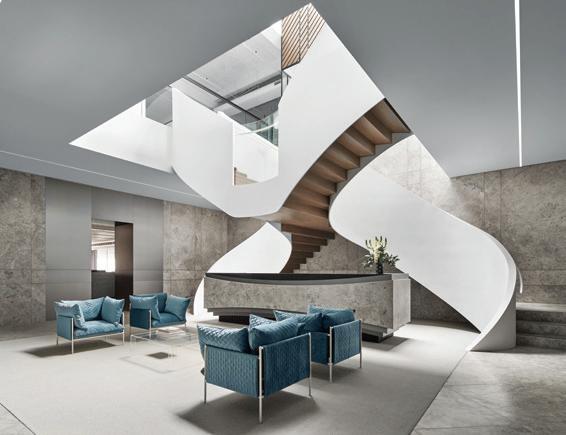

Proudly partnered by


 Photography, from top left: Peter Bennetts, KyleYu
Photo Studio, Peter Clarke, Nicole England, Peter Clarke, Spaceshift Studio/Kesiree Wongwan, Brett Boardman, Nicole England, Dion Robeson, Steve Brown Photography, E.K. Yap, Earl Carter.
Albert Park Office & Depot Harrison and White with Archier AUSTRALIA
Hallmarc Offices Collins Street Hallmarc with Malcolm Elliott Architecture AUSTRALIA
South Terrace Mezzanine House Philip Stejskal Architecture AUSTRALIA
Anti Chamber Chain10 Architecture & Interior Design Institute TAIWAN
IDIN Architects Office IDIN Architects THAILAND
The Launch Pad The Studio* Collaborative AUSTRALIA
Australian Unity Bates Smart AUSTRALIA
Munupi Art Centre Workshop Kaunitz Yeung Architecture with Di Emme Creative Solutions AUSTRALIA
The Work Project - Asia Square Hassell SINGAPORE
CBA Axle South Eveleigh Woods Bagot AUSTRALIA
Norton Rose Fulbright Sydney Carr AUSTRALIA
Photography, from top left: Peter Bennetts, KyleYu
Photo Studio, Peter Clarke, Nicole England, Peter Clarke, Spaceshift Studio/Kesiree Wongwan, Brett Boardman, Nicole England, Dion Robeson, Steve Brown Photography, E.K. Yap, Earl Carter.
Albert Park Office & Depot Harrison and White with Archier AUSTRALIA
Hallmarc Offices Collins Street Hallmarc with Malcolm Elliott Architecture AUSTRALIA
South Terrace Mezzanine House Philip Stejskal Architecture AUSTRALIA
Anti Chamber Chain10 Architecture & Interior Design Institute TAIWAN
IDIN Architects Office IDIN Architects THAILAND
The Launch Pad The Studio* Collaborative AUSTRALIA
Australian Unity Bates Smart AUSTRALIA
Munupi Art Centre Workshop Kaunitz Yeung Architecture with Di Emme Creative Solutions AUSTRALIA
The Work Project - Asia Square Hassell SINGAPORE
CBA Axle South Eveleigh Woods Bagot AUSTRALIA
Norton Rose Fulbright Sydney Carr AUSTRALIA
INDE.AWARDS SHORTLIST 37
Treasury Wine Estates Melbourne Carr AUSTRALIA
The Social Space
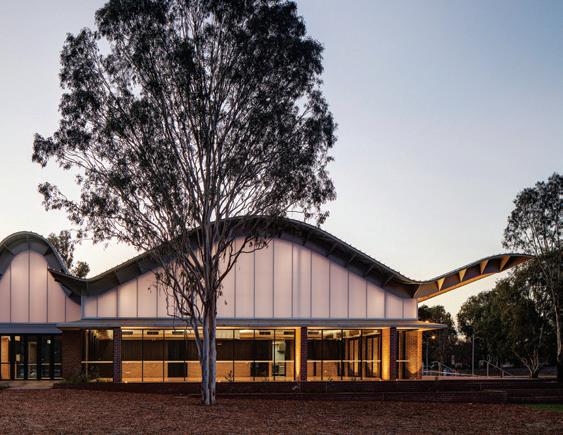





The Social Space recognises the hospitality and food and beverage places that, through fine design, bring us together and enrich our lives.
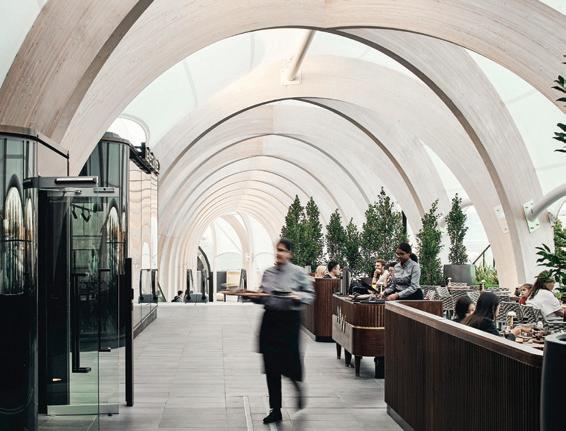
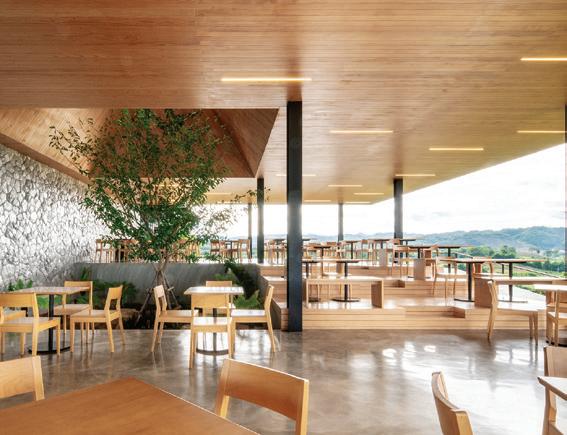
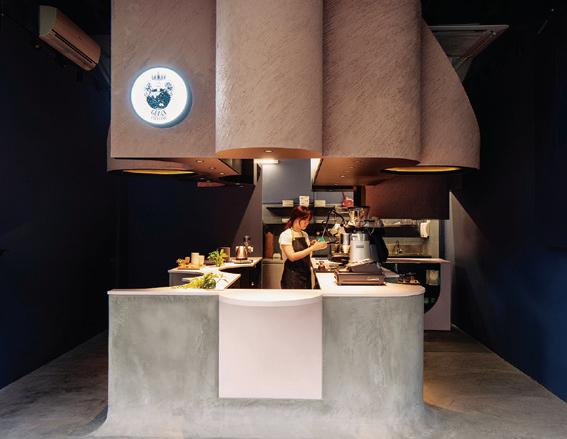


Proudly partnered by
 Photography, from top left: Robert Kleiner Photography, Depth of Field, Peter Bennetts, Arch Exist, Ben Hosking, Ben Hosking, W Workspace, Zhao Yilong/Chen Lin, Fabian Ong, Peter Bennetts, Khoo Guo Jie, Brett Boardman.
Alila Villas Koh Russey STUDIOGOTO CAMBODIA
For Our Country Edition Office and Daniel Boyd AUSTRALIA
Sukasantai Farmstay Goy Architects INDONESIA
Choui Fong Tea Cafe IDIN Architects THAILAND
In Absence Edition Office and Yhonnie Scarce AUSTRALIA
The Link at Chadstone Make Architects with Cera Stribley AUSTRALIA
Di Stasio Citta Hassell AUSTRALIA
Little Shelter Hotel Department of Architecture Co. THAILAND
Voids Cafe – Grace Espresso Studio SKLIM SINGAPORE
Fang Tang Hotel A9Architects CHINA
Mountain House in Mist Shulin Architectural Design CHINA
Photography, from top left: Robert Kleiner Photography, Depth of Field, Peter Bennetts, Arch Exist, Ben Hosking, Ben Hosking, W Workspace, Zhao Yilong/Chen Lin, Fabian Ong, Peter Bennetts, Khoo Guo Jie, Brett Boardman.
Alila Villas Koh Russey STUDIOGOTO CAMBODIA
For Our Country Edition Office and Daniel Boyd AUSTRALIA
Sukasantai Farmstay Goy Architects INDONESIA
Choui Fong Tea Cafe IDIN Architects THAILAND
In Absence Edition Office and Yhonnie Scarce AUSTRALIA
The Link at Chadstone Make Architects with Cera Stribley AUSTRALIA
Di Stasio Citta Hassell AUSTRALIA
Little Shelter Hotel Department of Architecture Co. THAILAND
Voids Cafe – Grace Espresso Studio SKLIM SINGAPORE
Fang Tang Hotel A9Architects CHINA
Mountain House in Mist Shulin Architectural Design CHINA
INDEAWARDS.COM 38
Woodcroft Neighbourhood Centre Carter Williamson Architects AUSTRALIA
The Shopping Space
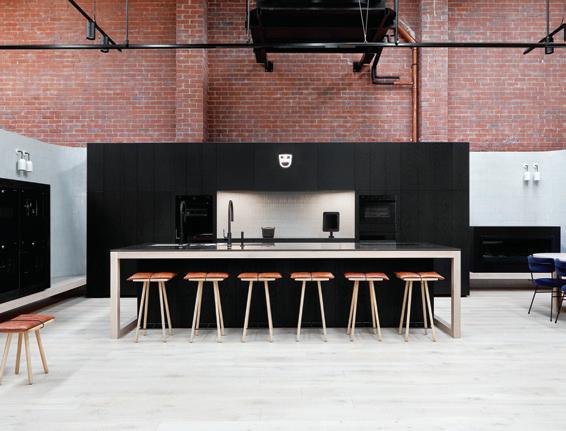

The Shopping Space celebrates the changing retail landscape that incorporates imaginative design and outstanding amenity, service and display.
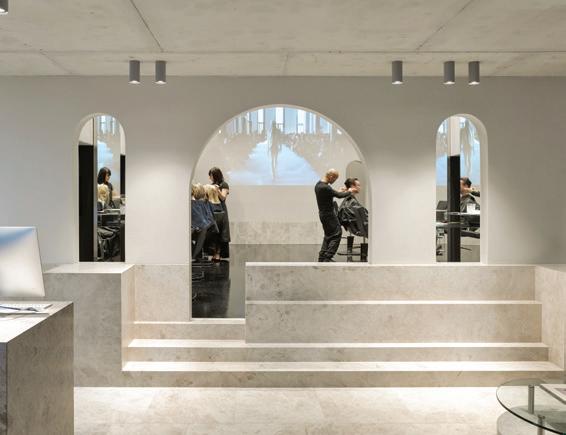



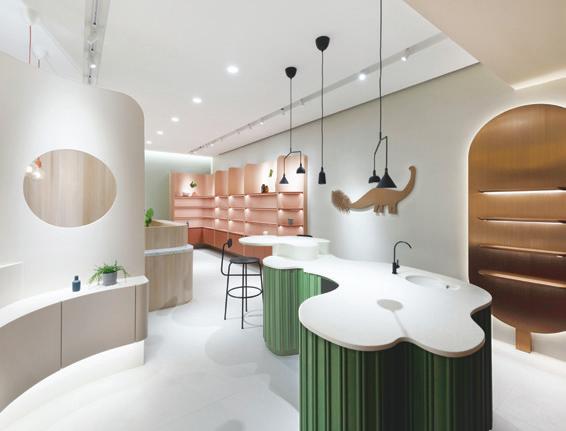
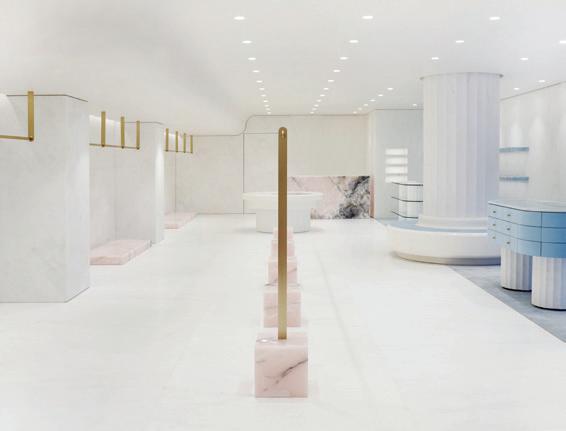


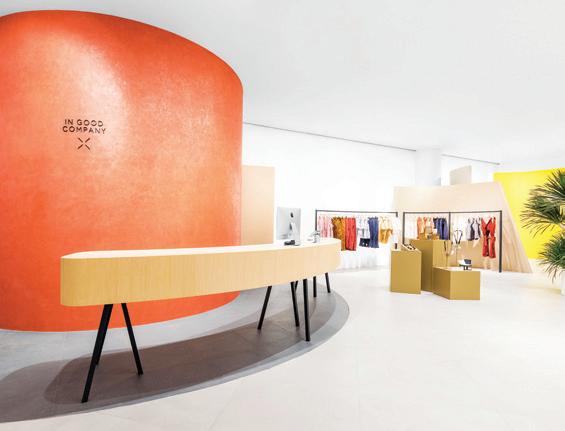
Proudly partnered by
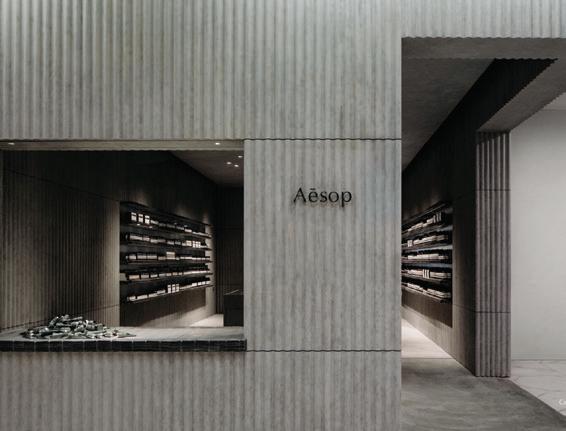 Photography, from top left: Studio Periphery, Bean Buro, Anthony Richardson, Sui Sicong, Daniel Chia, K11 MUSEA/LAAB Architects/Edmon Leong/Henry TC/ DCinemati, Traianos Pakioufakis, Christopher Frederick Jones, Thomas Seear-Budd, Steven Ko, Traianos Pakioufakis, Dave Kulesza.
AESOP 1 UTAMA FARM MALAYSIA
In Good Company Jewel Changi Airport Store Produce SINGAPORE
Superette International DesignOffice NEW ZEALAND
Beautysaur Organics / “Eclectic Bodies” Bean Buro HONG KONG
K11 MUSEA LAAB Architects with KBF and AB concept HONG KONG
The Green M.R.Studio CHINA
Chiseled Hair Melbourne Elvin Tan with OLSK AUSTRALIA
Ozlana Flagship Pattern Studio AUSTRALIA
Urbnsurf Precinct Pattern Studio with MJA Architects AUSTRALIA
Guiniang Experience Store Ippolito Fleitz Group CHINA
Salon X Papas Hogg & Lamb AUSTRALIA
Photography, from top left: Studio Periphery, Bean Buro, Anthony Richardson, Sui Sicong, Daniel Chia, K11 MUSEA/LAAB Architects/Edmon Leong/Henry TC/ DCinemati, Traianos Pakioufakis, Christopher Frederick Jones, Thomas Seear-Budd, Steven Ko, Traianos Pakioufakis, Dave Kulesza.
AESOP 1 UTAMA FARM MALAYSIA
In Good Company Jewel Changi Airport Store Produce SINGAPORE
Superette International DesignOffice NEW ZEALAND
Beautysaur Organics / “Eclectic Bodies” Bean Buro HONG KONG
K11 MUSEA LAAB Architects with KBF and AB concept HONG KONG
The Green M.R.Studio CHINA
Chiseled Hair Melbourne Elvin Tan with OLSK AUSTRALIA
Ozlana Flagship Pattern Studio AUSTRALIA
Urbnsurf Precinct Pattern Studio with MJA Architects AUSTRALIA
Guiniang Experience Store Ippolito Fleitz Group CHINA
Salon X Papas Hogg & Lamb AUSTRALIA
INDE.AWARDS SHORTLIST 39
VZUG Showroom Carole Whiting Interiors and Design with Cera Stribley AUSTRALIA
The Wellness Space
The Wellness Space showcases the changing face of spaces that are designed to promote and enhance health and wellbeing through a sensitive and sustained resolution.






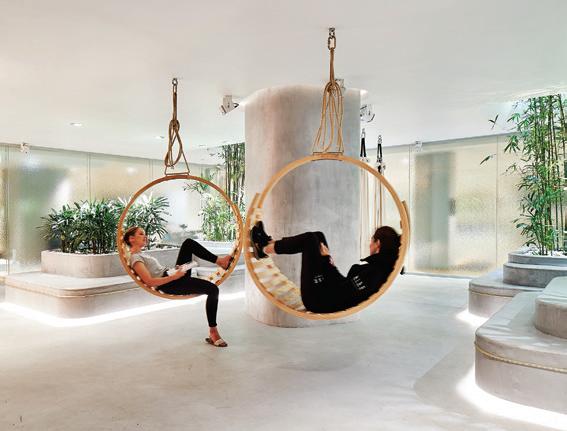
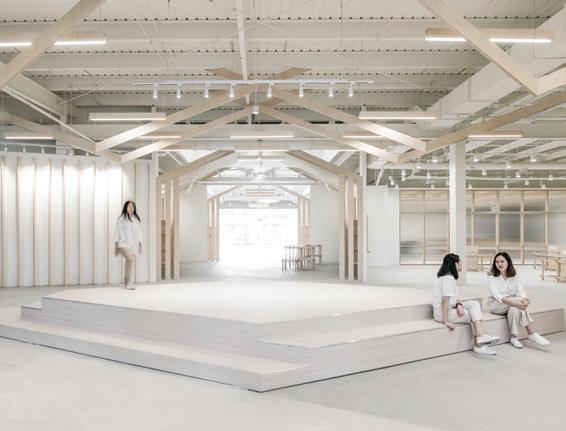
Proudly partnered by
Gandel Wing, Cabrini Malvern
Royal Melbourne Hospital Stroke and Neurology Unit ClarkeHopkinsClarke AUSTRALIA


Rebuilding Neuropsychiatry Hospital Wooyo Architecture
EKH
walu-win Wellness Centre Kaunitz Yeung Architecture AUSTRALIA
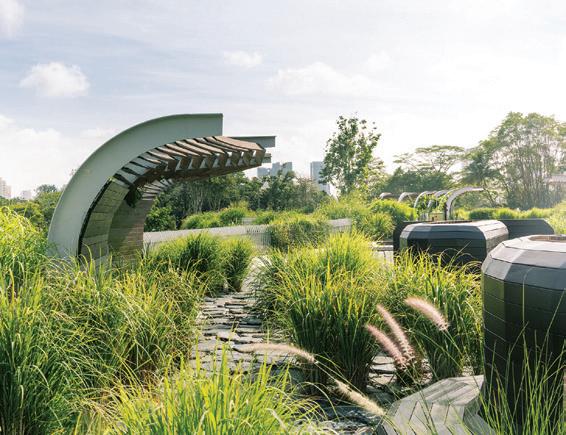
RISE at 101 Collins Street
Wellness Retreat at Habarana Palinda
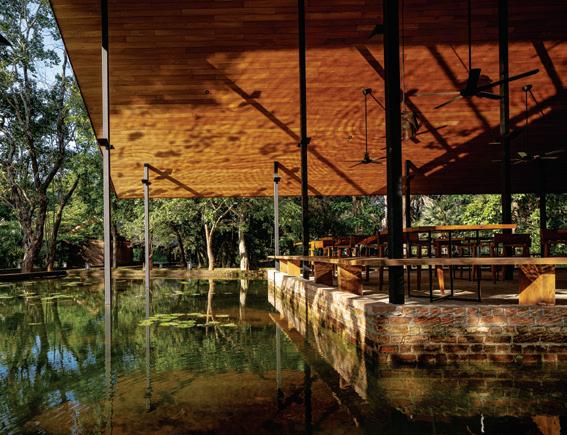 Photography, from top left: Finbarr Fallon, Nicholas Wilkins, Luc Remond, Ketsiree Wongwan, Peter Clarke, Lillie Thompson, Ethan Li, Shannon McGrath, Rhiannon Slatter, Brett Boardman, Andrewphuaphotos, Mahesh Mendis.
Photography, from top left: Finbarr Fallon, Nicholas Wilkins, Luc Remond, Ketsiree Wongwan, Peter Clarke, Lillie Thompson, Ethan Li, Shannon McGrath, Rhiannon Slatter, Brett Boardman, Andrewphuaphotos, Mahesh Mendis.
SINGAPORE
Active SG Park Jurong Lake Gardens Zarch Collaboratives
Tzu Chi Humanistic Youth Activity Center Grey Canopy with Kyoob Architects SINGAPORE
Gray Puksand AUSTRALIA
Basecamp Power Yoga Studio 11:11 with Cheshire Architects NEW ZEALAND
Bates Smart AUSTRALIA
Chifley Lifestyle Gray Puksand AUSTRALIA
Holism Retreat Studio Tate AUSTRALIA
Children Hospital Integrated Field with S:CSB THAILAND
TAIWAN
Kannangara Architects SRI LANKA
INDEAWARDS.COM 40
The Object


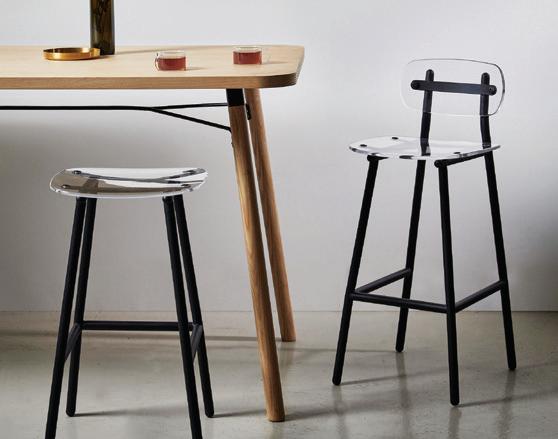
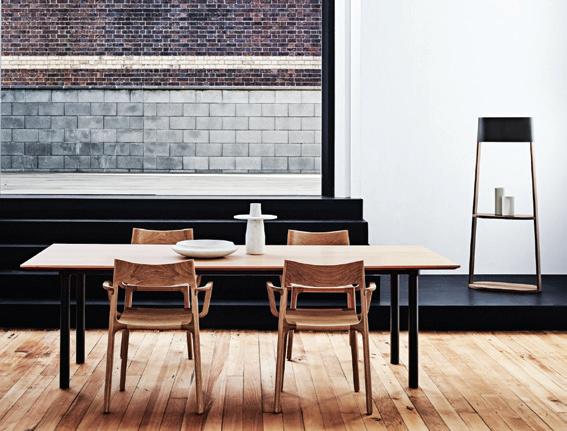
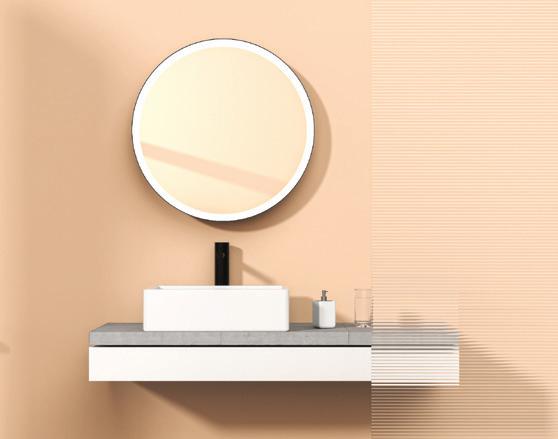





The Shopping Space celebrates the changing retail landscape that incorporates imaginative design and outstanding amenity, service and display.

Proudly partnered by
 Photography, from top left: Mr.P Studios, Mike Baker, David Curzon – DC photographic designs, Pete Daly, Earl Carter, Simone Fiorini, Haydn Cattach, Mike Baker Photography, Haworth, Mike Baker, Haydn Cattach, Dennis Cheung.
Avion Keith Melbourne Studio AUSTRALIA
Horizon Vase Chris Connell Design AUSTRALIA
Sakuru Haworth through CoCreate with Gavin Harris AUSTRALIA
Edo Wall Lamp Collection ISM OBJECTS AUSTRALIA
Jeanette Range Tom Fereday Design for SPO1 AUSTRALIA Stack Zachary Hanna for nau AUSTRALIA
ERGO ARMALUGI AUSTRALIA
Place Lounge Collection Ross Gardam AUSTRALIA
Tait Scape Collection Adam Goodrum for Tait AUSTRALIA
Fenster Collection by GibsonKarlo for DesignByThem DesignByThem AUSTRALIA
Puffalo Didier AUSTRALIA
Photography, from top left: Mr.P Studios, Mike Baker, David Curzon – DC photographic designs, Pete Daly, Earl Carter, Simone Fiorini, Haydn Cattach, Mike Baker Photography, Haworth, Mike Baker, Haydn Cattach, Dennis Cheung.
Avion Keith Melbourne Studio AUSTRALIA
Horizon Vase Chris Connell Design AUSTRALIA
Sakuru Haworth through CoCreate with Gavin Harris AUSTRALIA
Edo Wall Lamp Collection ISM OBJECTS AUSTRALIA
Jeanette Range Tom Fereday Design for SPO1 AUSTRALIA Stack Zachary Hanna for nau AUSTRALIA
ERGO ARMALUGI AUSTRALIA
Place Lounge Collection Ross Gardam AUSTRALIA
Tait Scape Collection Adam Goodrum for Tait AUSTRALIA
Fenster Collection by GibsonKarlo for DesignByThem DesignByThem AUSTRALIA
Puffalo Didier AUSTRALIA
INDE.AWARDS SHORTLIST 41
Triplex Stool Studio RYTE HONG KONG
The Influencer
The Influencer celebrates design that is truly iconic. Whether a person, project or product the result is irrefutable, the influencer sets the agenda for the region and the world.
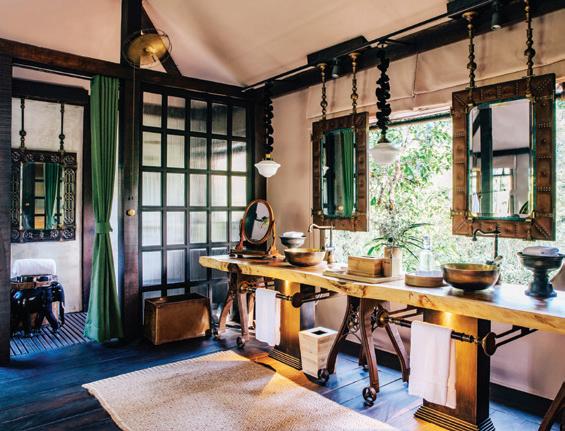
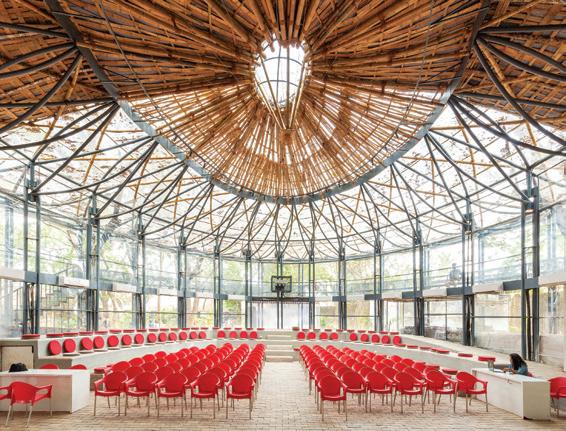
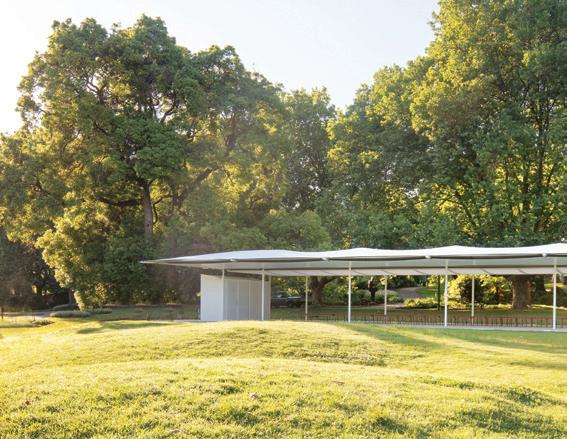






Proudly partnered by
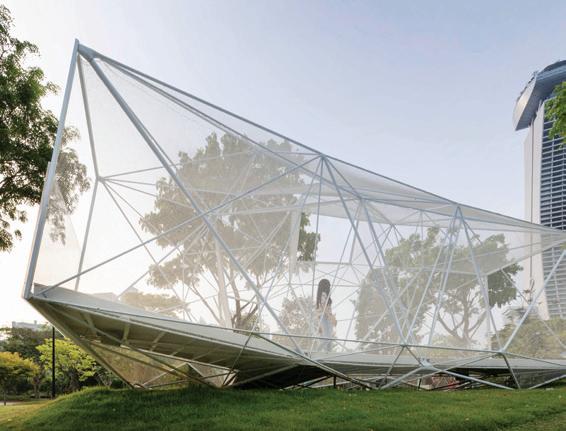 Photography, from top left: Fabian Ong, Peter Bennetts, Nicole England, Suryan & Dang, Jovian Lim, John Gollings, Stefano Scata, Krishna Aditya, Fabian Ong, Murray Fredericks.
AIRMESH AIRLAB @SUTD SINGAPORE
Love Bonito Wynk Collaborative SINGAPORE
Sukasantai Farmsatay Goy Architects THAILAND
Burwood Brickworks Russell & George with NH Architecture AUSTRALIA
MPavilion Glenn Murcutt AUSTRALIA
CBA Axle South Eveleigh Woods Bagot AUSTRALIA
Riverbend, Bambu Indah IBUKU INDONESIA
Welcome to the Jungle House CplusC Architectural Workshop AUSTRALIA
KOODAARAM: The KochiMuziris Biennale Pavilion Anagram Architects with B L Manjunath & Studio Wood INDIA
Photography, from top left: Fabian Ong, Peter Bennetts, Nicole England, Suryan & Dang, Jovian Lim, John Gollings, Stefano Scata, Krishna Aditya, Fabian Ong, Murray Fredericks.
AIRMESH AIRLAB @SUTD SINGAPORE
Love Bonito Wynk Collaborative SINGAPORE
Sukasantai Farmsatay Goy Architects THAILAND
Burwood Brickworks Russell & George with NH Architecture AUSTRALIA
MPavilion Glenn Murcutt AUSTRALIA
CBA Axle South Eveleigh Woods Bagot AUSTRALIA
Riverbend, Bambu Indah IBUKU INDONESIA
Welcome to the Jungle House CplusC Architectural Workshop AUSTRALIA
KOODAARAM: The KochiMuziris Biennale Pavilion Anagram Architects with B L Manjunath & Studio Wood INDIA
INDEAWARDS.COM 42
Shinta Mani Wild BENSLEY CAMBODIA
The Design Studio
The Design Studio honours a practice that has forged its own particular identity and is creatively setting new standards in architecture or design.




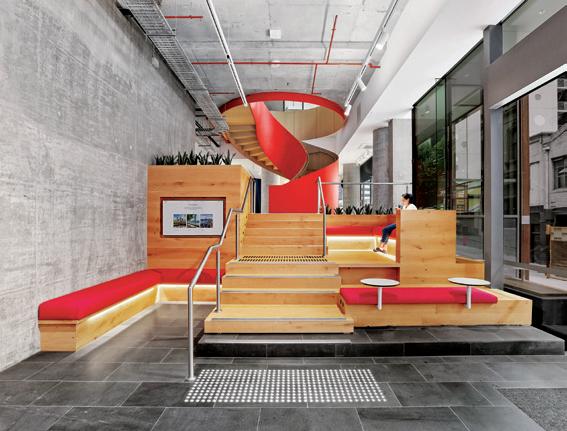






Proudly partnered by
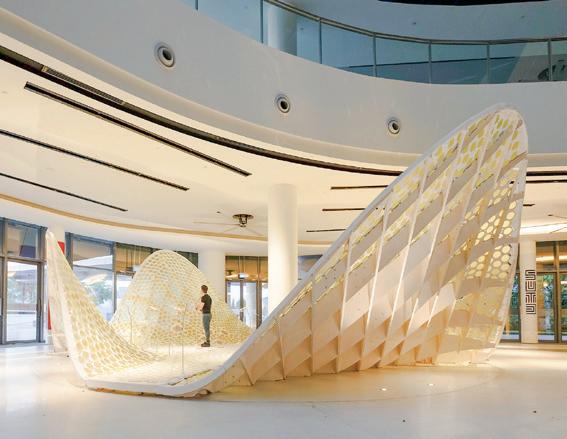 Photography, from top left: Fabian Ong, Anson Smart/Felix Forest/Tom Ferguson, Krishna Adithya, Armelle Habib, Emily Bartlett Photography, Penny Lane, Zhi Geng, Otto Ng, Eric Dinardi/Sefval Mogalana/Realrich Sjarief, Felix Forest, studioplusthree, Kris Paulsen.
AIRLAB-Singapore SINGAPORE
Cera Stribley AUSTRALIA
RAW Architecture - Realrich Architecture Workshop INDONESIA
Alexander &CO. AUSTRALIA
Foolscap Studio AUSTRALIA
Russell & George AUSTRALIA
BENSLEY THAILAND & INDONESIA
Interval Architects CHINA studioplusthree AUSTRALIA
Biasol Studio AUSTRALIA
LAAB Architects HONG KONG
Photography, from top left: Fabian Ong, Anson Smart/Felix Forest/Tom Ferguson, Krishna Adithya, Armelle Habib, Emily Bartlett Photography, Penny Lane, Zhi Geng, Otto Ng, Eric Dinardi/Sefval Mogalana/Realrich Sjarief, Felix Forest, studioplusthree, Kris Paulsen.
AIRLAB-Singapore SINGAPORE
Cera Stribley AUSTRALIA
RAW Architecture - Realrich Architecture Workshop INDONESIA
Alexander &CO. AUSTRALIA
Foolscap Studio AUSTRALIA
Russell & George AUSTRALIA
BENSLEY THAILAND & INDONESIA
Interval Architects CHINA studioplusthree AUSTRALIA
Biasol Studio AUSTRALIA
LAAB Architects HONG KONG
INDE.AWARDS SHORTLIST 43
Taylor Cullity Lethlean AUSTRALIA
The Living Space
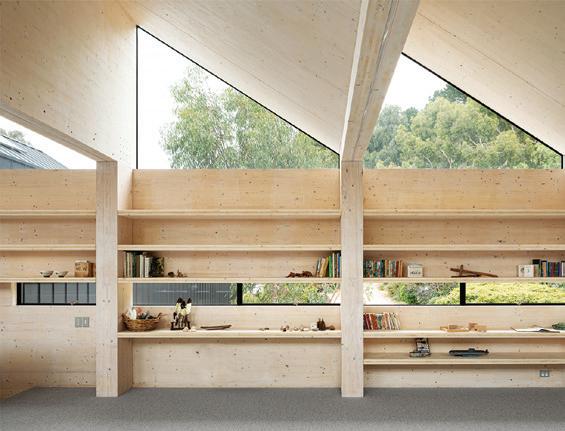

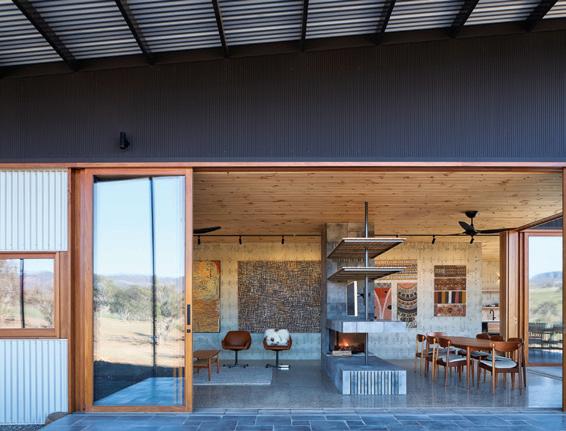
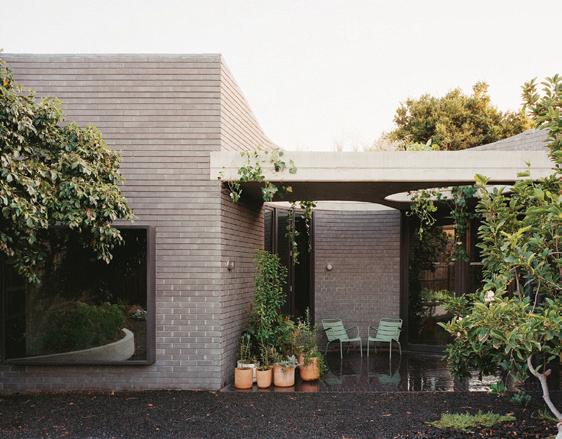
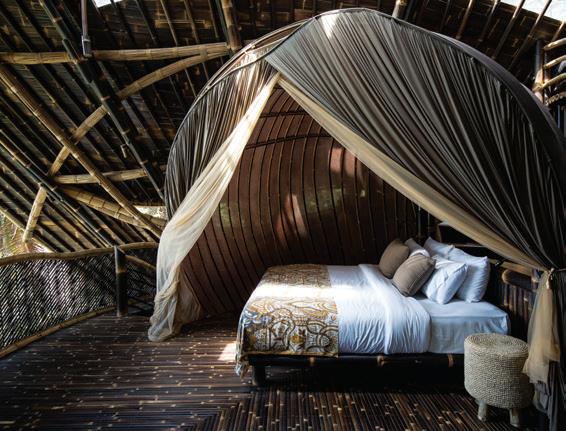

The Living Space honours the most inspirational residential design from the region that sits sensitively within its place and presents outstanding resolution of style and function.
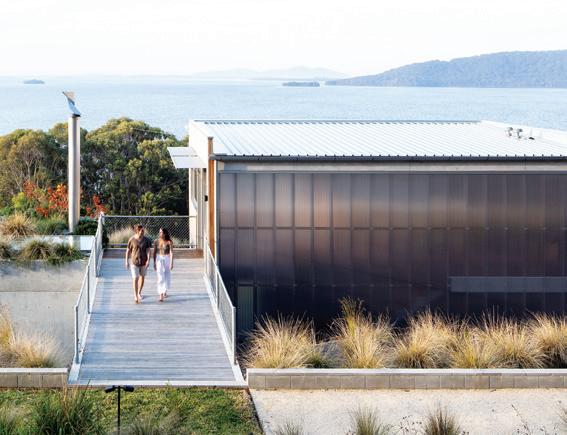



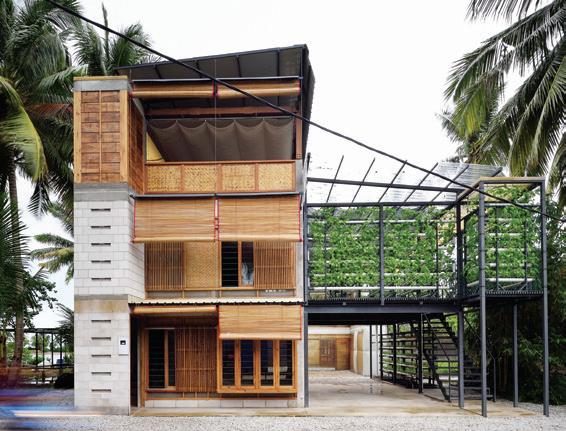
Proudly partnered by
 Photography, from top left: Tian Fangfang, Tom Ross, Rory Gardiner, Dianna Snape, Tommaso Riva, Tom Ross, Carlina Teteris, Tatjana Plitt, Derek Swalwell & Andy Macpherson, Sharyn Cairns, Barton Taylor, Brett Boardman.
A U-shaped room Atelier tao+c CHINA
Eclipse House, Green Villag IBUKU INDONESIA
Mermaid Beach Residence B.E Architecture AUSTRALIA
Bardolph Gardens Breathe Architecture AUSTRALIA
Edgar’s Creek House Breathe Architecture AUSTRALIA
Three Stories North Splinter Society Architecture AUSTRALIA
Clinker Brick House Studio Bright AUSTRALIA
Expandable House Future Cities Laboratory, SingaporeETH Centre INDONESIA
Up Side Down Akubra House Alexander Symes Architect AUSTRALIA
CLT House FMD Architects AUSTRALIA
Laurel Grove Kirsten Johnstone Architecture AUSTRALIA
Photography, from top left: Tian Fangfang, Tom Ross, Rory Gardiner, Dianna Snape, Tommaso Riva, Tom Ross, Carlina Teteris, Tatjana Plitt, Derek Swalwell & Andy Macpherson, Sharyn Cairns, Barton Taylor, Brett Boardman.
A U-shaped room Atelier tao+c CHINA
Eclipse House, Green Villag IBUKU INDONESIA
Mermaid Beach Residence B.E Architecture AUSTRALIA
Bardolph Gardens Breathe Architecture AUSTRALIA
Edgar’s Creek House Breathe Architecture AUSTRALIA
Three Stories North Splinter Society Architecture AUSTRALIA
Clinker Brick House Studio Bright AUSTRALIA
Expandable House Future Cities Laboratory, SingaporeETH Centre INDONESIA
Up Side Down Akubra House Alexander Symes Architect AUSTRALIA
CLT House FMD Architects AUSTRALIA
Laurel Grove Kirsten Johnstone Architecture AUSTRALIA
INDEAWARDS.COM 44
Wallis Lake House Matthew Woodward Architecture AUSTRALIA
The Learning Space
The Learning Space celebrates an environment that embraces the future and enhances the way we learn and connect in today’s world.
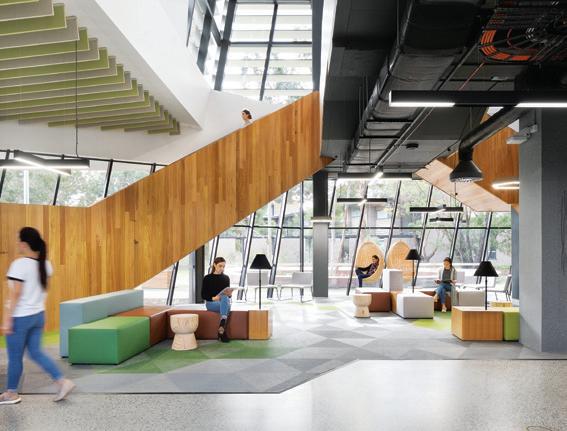
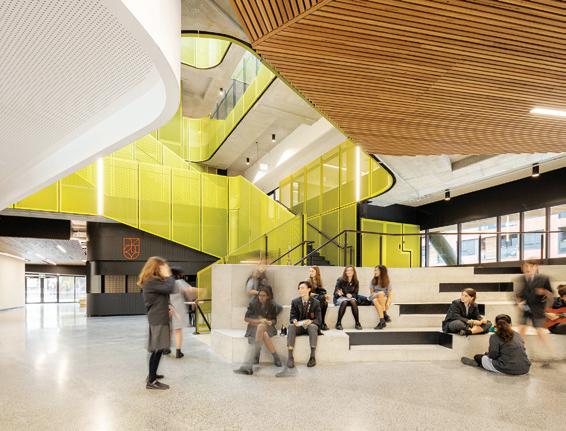
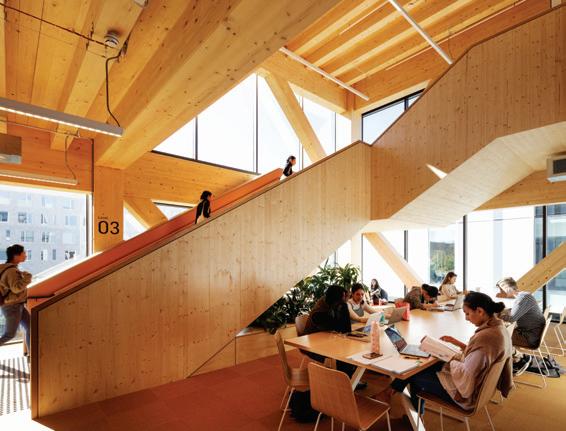


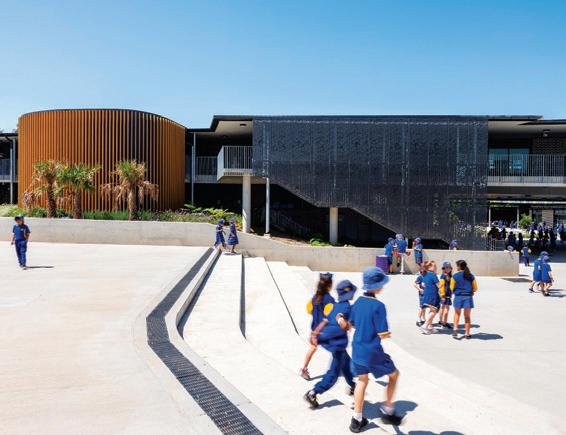


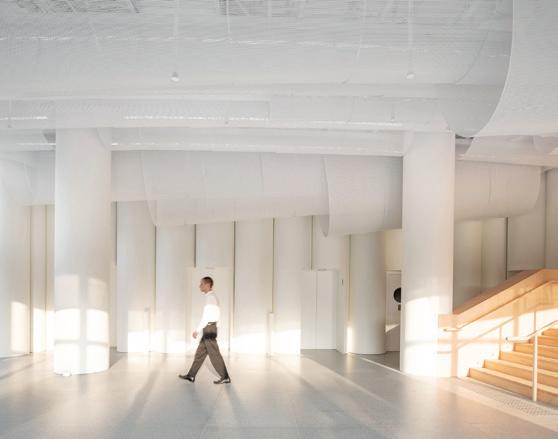

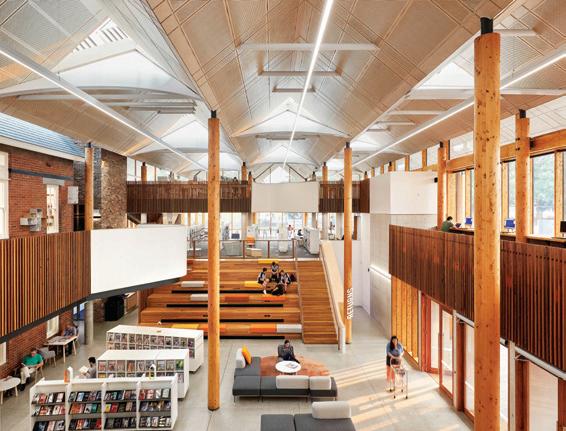
Proudly partnered by
 Photography, from top left: W Workspace, Tom Ferguson, Edmon Leong, John Gollings, Tom Roe, John Gollings, Finbarr Fallon, Henry Lam, Trevor Mein, John Gollings, Fiona Bao, Emily Bartlett.
Architecture Library, Chulalongkorn University Department of ARCHITECTURE Co. THAILAND
Marrickville Library BVN AUSTRALIA
The Ian Potter Southbank Centre, University of Melbourne John Wardle Architects AUSTRALIA
Bardia Public School TKD Architects AUSTRALIA
Molecular Horizons, University of Wollongong Jacobs and Denton Corker Marshall AUSTRALIA
The Swift Science and Technology Centre McBride Charles Ryan AUSTRALIA
HKU Li Ka Shing Faculty of Medicine Main Lobby Atelier Nuno Architects HONG KONG
Pathfinder Zarch Collaboratives SINGAPORE
The Wallflower Music Hall - Alliance Primary School Extension Groundwork Architects & Associates HONG KONG
Marie Reay Teaching Centre, ANU BVN AUSTRALIA
Richmond High School Hayball AUSTRALIA
University of Melbourne Veterinary School, Werribee Billard Leece Partnership AUSTRALIA
Photography, from top left: W Workspace, Tom Ferguson, Edmon Leong, John Gollings, Tom Roe, John Gollings, Finbarr Fallon, Henry Lam, Trevor Mein, John Gollings, Fiona Bao, Emily Bartlett.
Architecture Library, Chulalongkorn University Department of ARCHITECTURE Co. THAILAND
Marrickville Library BVN AUSTRALIA
The Ian Potter Southbank Centre, University of Melbourne John Wardle Architects AUSTRALIA
Bardia Public School TKD Architects AUSTRALIA
Molecular Horizons, University of Wollongong Jacobs and Denton Corker Marshall AUSTRALIA
The Swift Science and Technology Centre McBride Charles Ryan AUSTRALIA
HKU Li Ka Shing Faculty of Medicine Main Lobby Atelier Nuno Architects HONG KONG
Pathfinder Zarch Collaboratives SINGAPORE
The Wallflower Music Hall - Alliance Primary School Extension Groundwork Architects & Associates HONG KONG
Marie Reay Teaching Centre, ANU BVN AUSTRALIA
Richmond High School Hayball AUSTRALIA
University of Melbourne Veterinary School, Werribee Billard Leece Partnership AUSTRALIA
INDE.AWARDS SHORTLIST 45
The Multi-Residential Building
The Multi-Residential Building celebrates community and the ever changing and evolving way in which we live together through sustainable and considerate design.



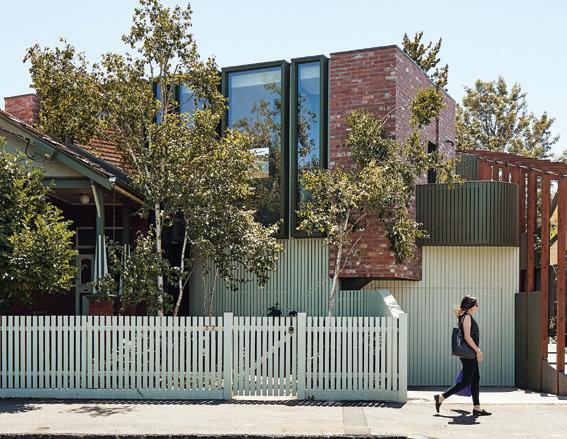



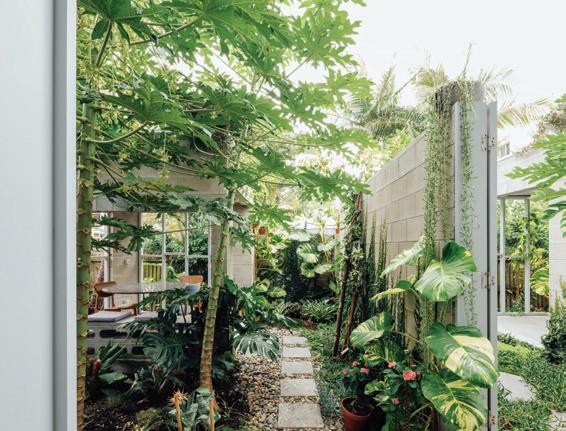


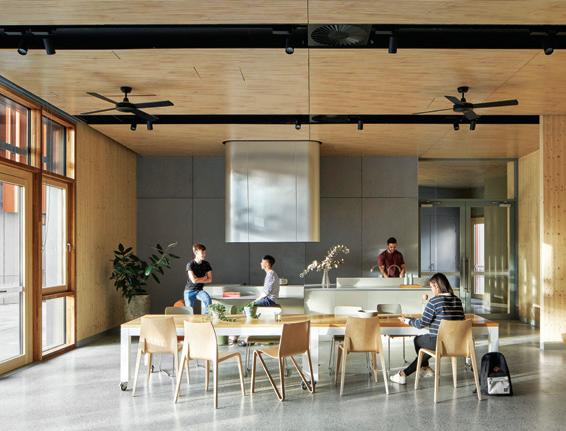
Proudly partnered by
 Photography, from top left: Ross Honeysett and Ben Hosking, Trevor Mein, Tom Blachford, John Gollings, Peter Clarke, Dion Robeson, Shantanu Starick, Gavin Green, Emily Bartlett Photography, Peter Bennetts, Anna Zhu, Tom Ferguson.
97 Mathoura Road Toorak Carr AUSTRALIA
Gillies Hall, Monash University Jackson Clements Burrows Architects AUSTRALIA
Pine Ave Cera Stribley with The Stella Collective AUSTRALIA
537 Elizabeth Street Woods Bagot AUSTRALIA
Mary Lane / The Westin Brisbane Woods Bagot AUSTRALIA
Scarborough and Welkin Justin Mallia Architecture AUSTRALIA
Elm and Stone DKO Architecture AUSTRALIA
Mermaid Multihouse Partners Hill with Hogg & Lamb AUSTRALIA
The Fern Steele Associates Architects AUSTRALIA
Fenner Hall Student Accommodation, ANU BVN AUSTRALIA
Napier Street for Milieu Freadman White AUSTRALIA
Photography, from top left: Ross Honeysett and Ben Hosking, Trevor Mein, Tom Blachford, John Gollings, Peter Clarke, Dion Robeson, Shantanu Starick, Gavin Green, Emily Bartlett Photography, Peter Bennetts, Anna Zhu, Tom Ferguson.
97 Mathoura Road Toorak Carr AUSTRALIA
Gillies Hall, Monash University Jackson Clements Burrows Architects AUSTRALIA
Pine Ave Cera Stribley with The Stella Collective AUSTRALIA
537 Elizabeth Street Woods Bagot AUSTRALIA
Mary Lane / The Westin Brisbane Woods Bagot AUSTRALIA
Scarborough and Welkin Justin Mallia Architecture AUSTRALIA
Elm and Stone DKO Architecture AUSTRALIA
Mermaid Multihouse Partners Hill with Hogg & Lamb AUSTRALIA
The Fern Steele Associates Architects AUSTRALIA
Fenner Hall Student Accommodation, ANU BVN AUSTRALIA
Napier Street for Milieu Freadman White AUSTRALIA
INDEAWARDS.COM 46
View Fuse Architecture AUSTRALIA
Introducing
















Friday 14 August 2020















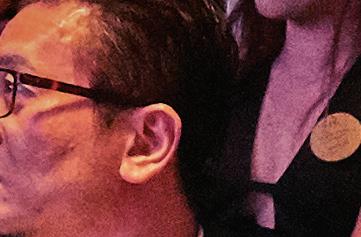




Australian National Maritime Museum, Sydney
The INDE.Summit is a brand new, one-day, CPD endorsed conference that will bring together regional and local speakers to explore how the Indo-Pacific region’s architects and designers are responding in the face of critical global and local challenges.


indeawards.com/summit










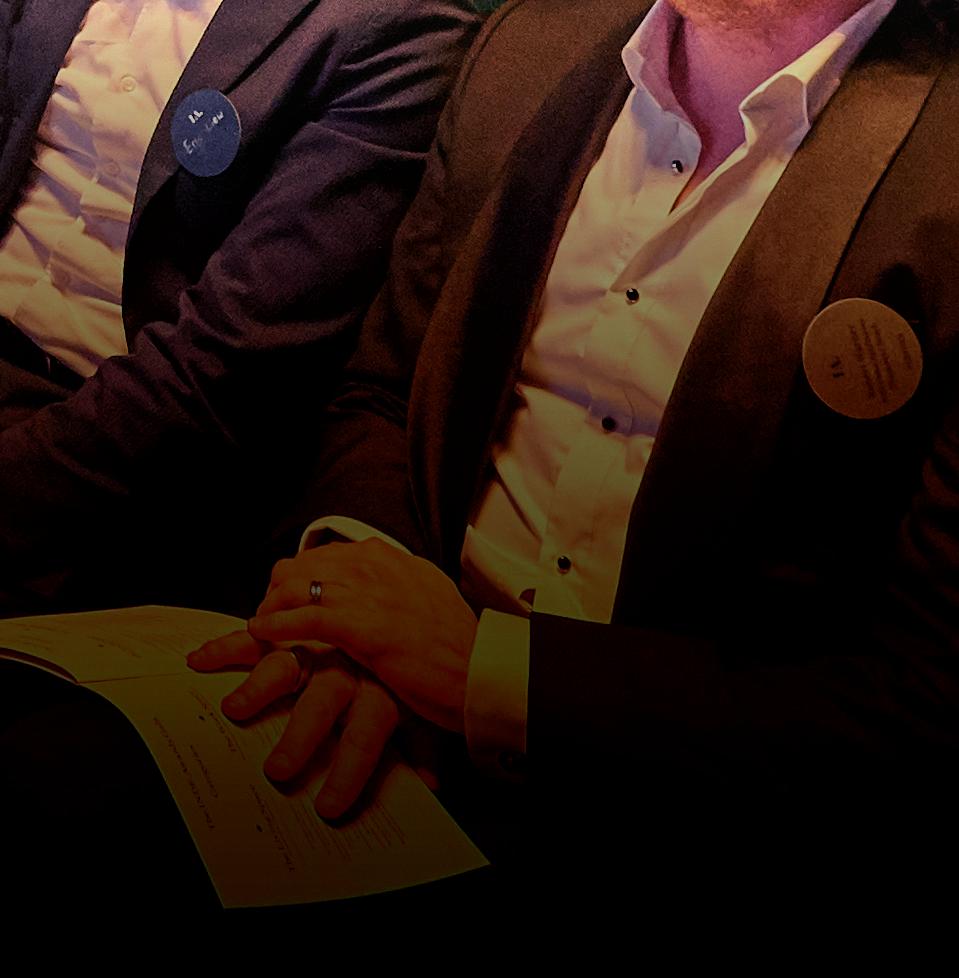

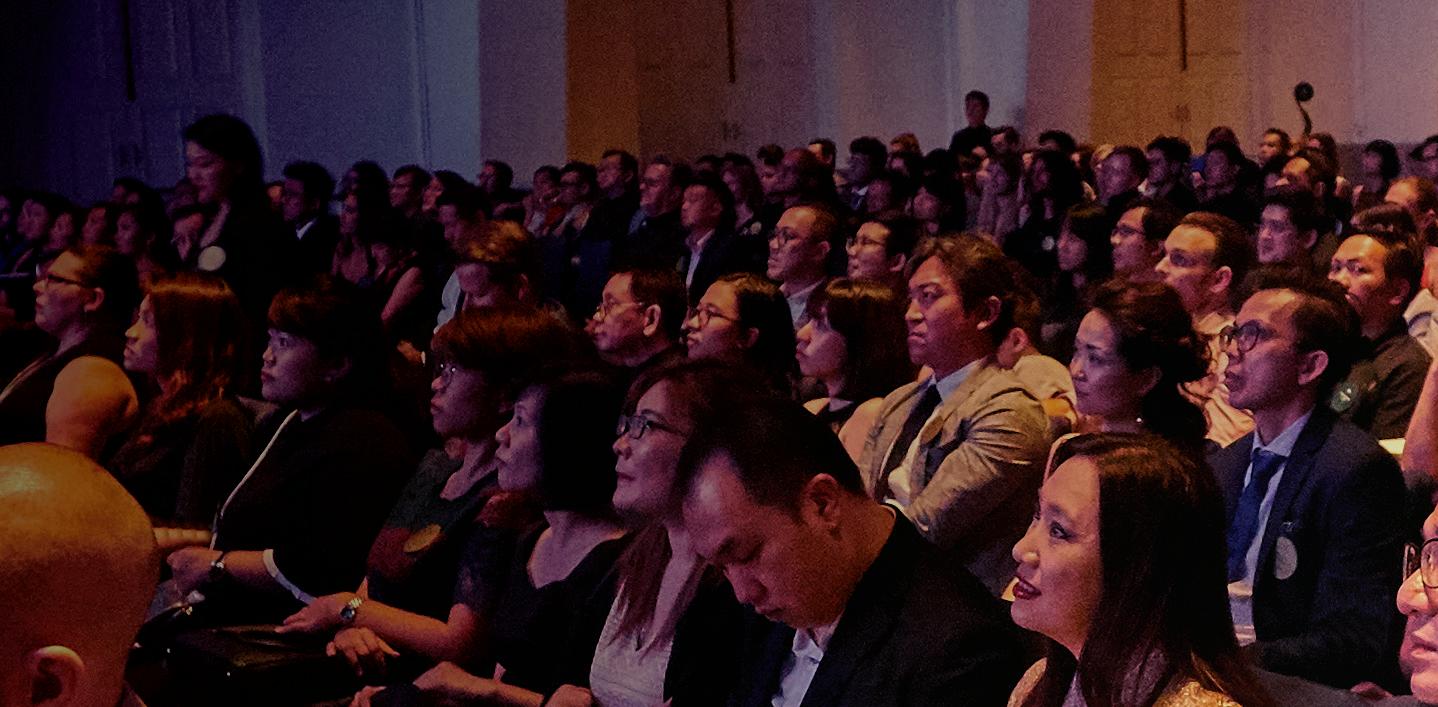
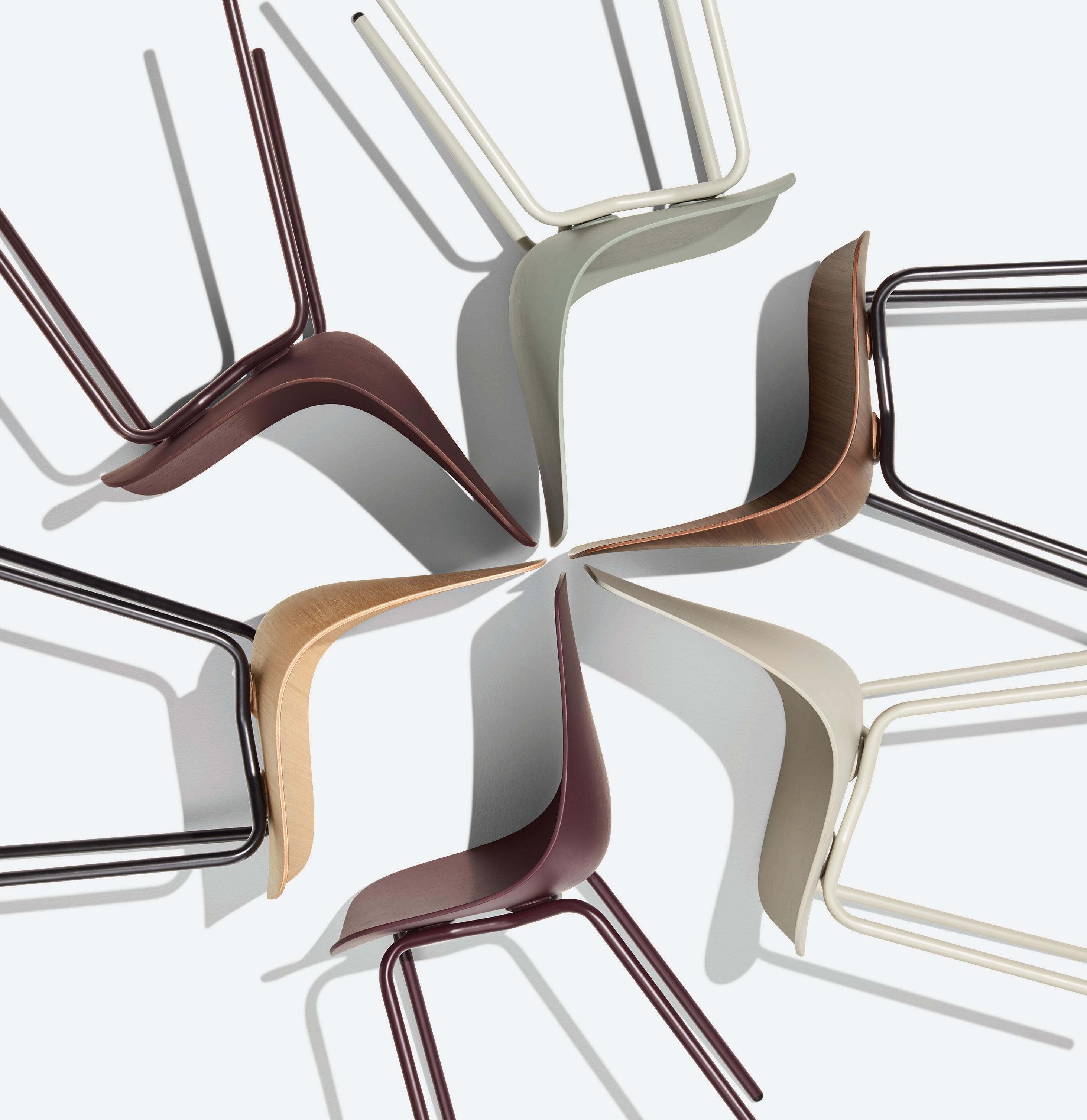
Visit: 27/69 O’Riordan Street Alexandria NSW 2015 | Call: (02) 9313 5400 | Web: bludot.com.au
THE ULTIMATE INDUSTRY CHEAT SHEET
INDESIGN 49 IN SHORT SHORT IN
Pet Heaven, Nova Pets
Designed by SAY Architects as the ultimate grooming salon for dogs and cats, Nova Pets in Hangzhou, China is in league of its own. This very creative interior includes amenities for animals and their humans and consequently provides a wonderful opportunity for both to interact.

The interior floorplan has been divided into two sections. One area includes a double-height void with sunken café and playground, while the other provides two floors of cosmetology rooms. The playground is located at the salon entrance and there is a large picture window that allows people to view the interior of the salon. In the café there is the chance for owner and pet to meet eye-to-eye as the pets move around the two sunken valleys within the floor accessing each by a tunnel. There is also a swimming pool with multiple viewing windows to reflect light. These continue the visual relationship between pet and owner.
The centre of the 450 square metre floorplan — and the focal point of the design — is a central column tilted at an angle. This becomes the ‘origin’, as all other spaces revolve around this central core — or, as the architects have named it, the “Nova”. Stainless steel crosses have been inserted in the floor as markers to create a “Nova” network, which helps to visually coordinate the space.
The interior colour palette is primarily white, yellow and black with a splash of blue in the bathroom areas. The surface materiality is spare: either tiles or paint.
This is a place for the A-listers of the pet world, providing grooming and relaxation, pampering and luxury, while raising the bar for pet salon design for animals and humans alike.
INDESIGNLIVE.COM IN SHORT 50

INDESIGN 51 IN SHORT
Your Own Oasis
Indesign ABEY
The bathroom is a sanctuary of solitude and a space to escape the demands of daily life. For Gessi, creating extraordinary bathroom products that inspire the sensation of peace and wellness is an everyday tradition. The new Rilievo Collection by Gessi is a collection that embodies all the valves of elegant living – with function, artful cra smanship and aesthetic superiority in mind.

Cooking In Luxury
Indesign BSH




Gaggenau creates kitchens without compromise. A constant inspiration for greatness, Gaggenau was the pioneer manufacturer to bring the combi-steam oven to the private kitchen, pushing the boundaries of the amateur chef. The new 400 series and 200 series are beautifully Gaggenau – with a rich heritage spanning more than 20 decades. O ering superior functionality with a xed water connection, external steam generation, multi-core temperature probe and automatic programs, these series are havens for culinary masterpieces. Cra ed to blend seamlessly into the cabinetry, Gaggenau adds a sophisticated touch of invisible LED lighting, showcasing food that deserves admiration.

Stay Cosy
Indesign Workspace
Workspace welcomes the newest and hottest additions to the Cozy Chair Range: the Cozy Education and 4 Star Castor chairs. Artfully cra ed by Claudio Francesco Bellini, the Cozy Education is perfectly designed for all educational settings, while the 4 Star Castor is the ideal choice for the modern workplace. Both versatile and exible, these products prioritise the individual’s utmost comfort. The Cozy family compromises varied and complementary seating con gurations. The Cozy Educational consists of an interchangeable tray made for both leand right-handed users with a table art that rotates a full 270 degrees for maximum comfort. The 4 Star base puts comfort at the forefront with the adaptable base, while the inner structure of the back cushion follows the body’s natural movement to fully support the demands of the workday.

Outdoor Style
Indesign ILVE
Entering the new decade, we all want that fresh new look for our home. If you’re wanting to restart and refresh, Artusi’s Alfresco Entertaining space is the perfect addition. Sophisticated, sleek and undeniably elegant, the Artusi Alfresco Kitchen completes the range, with a bold NEOLITH stone benchtop designed for a culinary feast. Constructed from weatherproof materials, Alfresco is speci cally designed for outdoor use with side panels that are re retardant, galvanised steel panels in enamelled black, and timber wallpaper wrapping for that elegant look. Artusi’s kitchen comes in two styles (with or without a Granitek sink and matt black tap) and is now available at ILVE.

INDESIGNLIVE.COM IN SHORT 52

Designed and made in Melbourne, by us for you. planex.com.au +61 3 8795 1100 showrooms I melbourne I sydney
Collaborative Learning
At a time when education is key to a successful career path for our children, the designs of our schools need to re ect a collaboration and connectivity between architect and client. The new Mercy Building for Australian Catholic University (ACU) designed by ThomsonAdsett is a perfect example of an informed design approach with a humancentred consultation process, inclusive of stakeholder workshops and various user groups. These workshops uncovered belonging, connection to community and selfexpression as key factors to consider when designing the Mercy Building.
In order to create a series of innovative learning environments for students and sta that embrace ACU’s culture and ethos, ThomsonAdsett drew inspiration from advancements in teaching and learning, workplace needs and the unique qualities of the immediate and wider site.
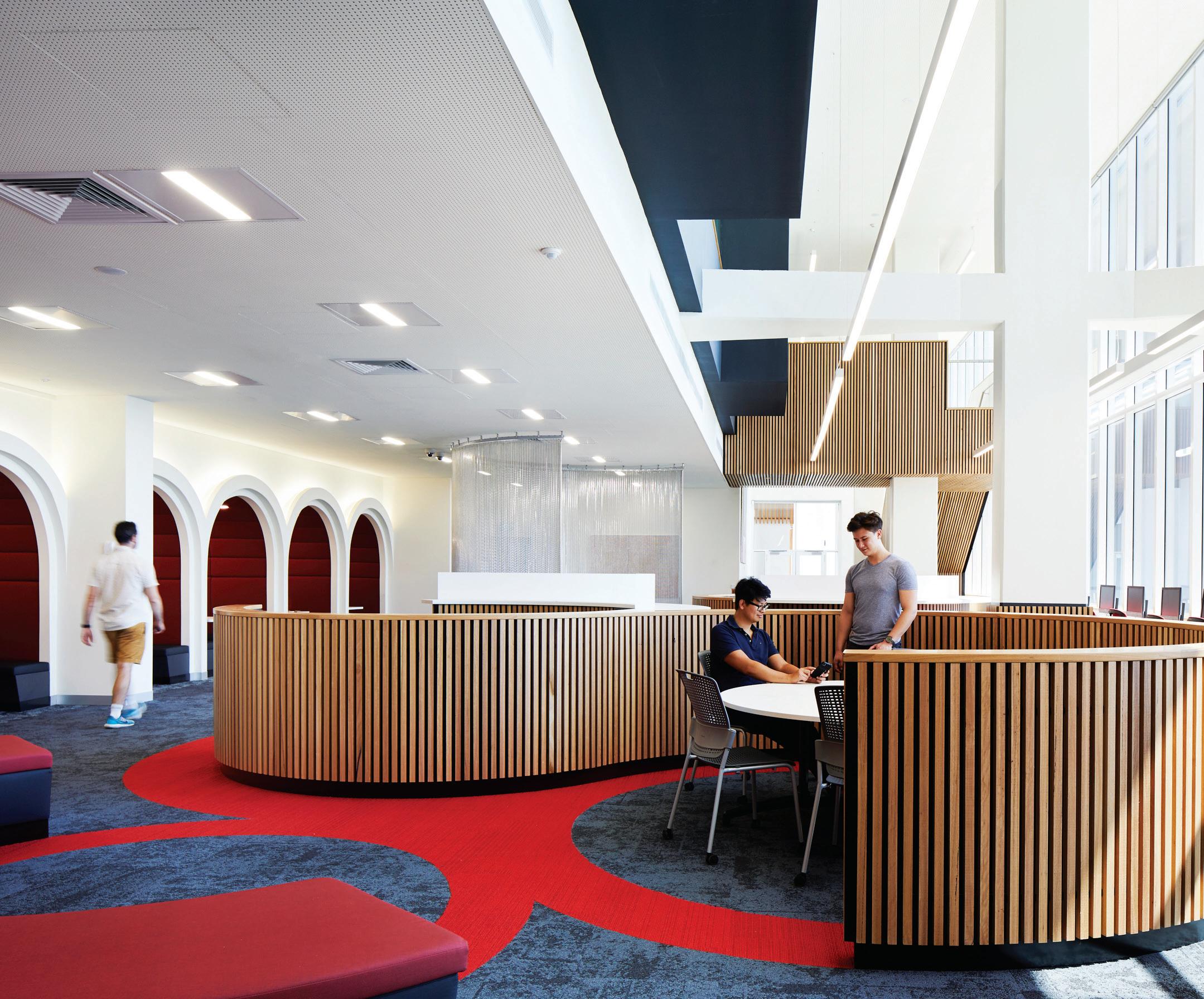
As with all good design, the building engages with its surrounding context by sensitively connecting to existing buildings, and also to the heritage characteristics and to panoramas of the broader site.
To achieve a comprehensive and successful design, ThomsonAdsett collaborated with library expert Janine Schmidt to ensure that the project not only delivered on the client’s functional and performance requirements, but that these were tested against international best practice.
Mindful of the environment, the project sought to achieve equal or better outcomes relative to the university’s established benchmarks. This included improving energy and water e ciency by seven per cent by 2020. First-quarter data shows that these targets are being achieved. The exterior design of the building — coupled with smart, sustainable integrated services —enable this e ciency, even with a large proportion of the building facing west.
The project presented a unique opportunity to create a community landmark that showcases the attributes of the Brisbane campus to the ACU community.
Geometric Innovation
Indesign Stylecra

Squares, circles, triangles and rectangles: the de ning shapes of Bauhaus. Australian designer Helen Kontouris combines the movement’s geometric forms with a sophisticated palette of seating con gurations to make up Bauhaus by LEN. Bauhaus is compact and gently curved with a quilted so form, making it the ideal touch across a diverse range of interior environments. “I’ve conceived a collection that’s rich in expression, conceived from childhood memories that have informed my design from a formative age.” Arranged in multiple compositions or in individual settings, the organic seating volumes are o ered in an extensive selection of colour palettes and textures, adding depth to any room.
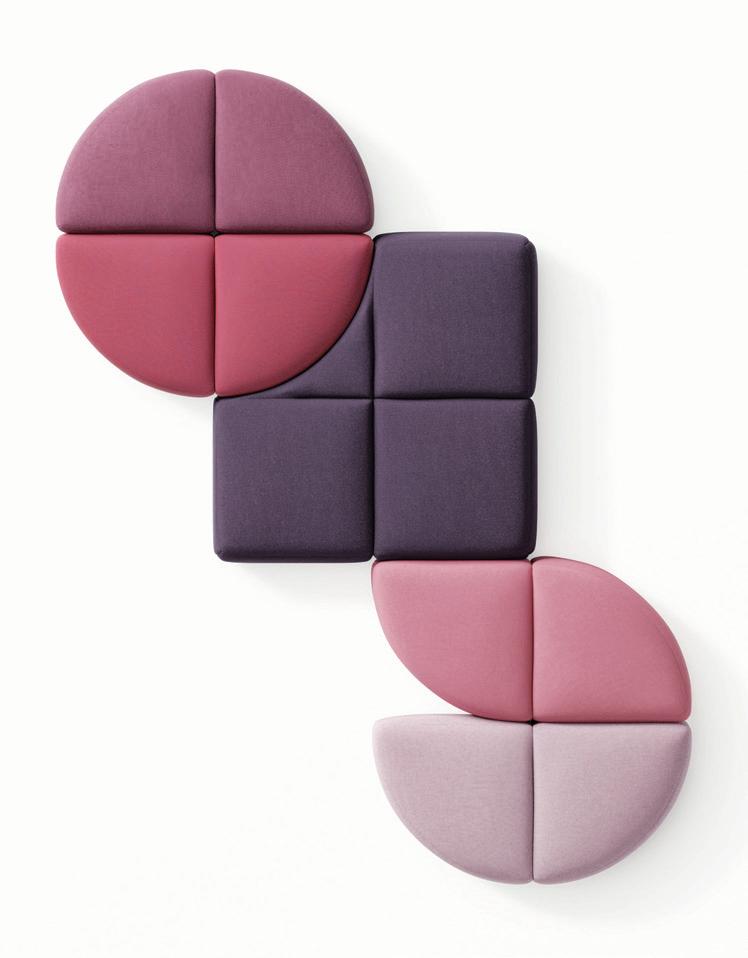
INDESIGNLIVE.COM IN
54
SHORT
Photo: Alicia Taylor
Specifier Spotlight Creating Spaces Where People Thrive
Indesign Lotus Doors

Project Hale Junior School is a sophisticated architectural design for flexible learning spaces of the future. The project has been recognised receiving two Architecture Awards in Western Australia and the 2019 Global Shaw Design, People’s Choice Award.

Design Notes
As an industry leader known for creating adaptable spaces in the education and commercial sectors, Lotus products are designed to meet the changing needs of school designs and are the perfect solution to deliver a flexible and innovative learning environment. Our Acoustic Slider range was developed in conjunction with architects to meet the needs of open-learning classrooms. Keeping safety, ease of use and great design front of mind, Lotus Acoustic Sliders are available in solid and glass finishes, helping to maximise light transfer whilst achieving inclusivity and visual connectivity. Lotus works with architects, builders and educators to create innovative design solutions, and to efficiently manufacture and install products meeting relevant legislation and building requirements. The flexible and adaptive nature of Lotus Operable Wall and Acoustic Slider products means spaces can be effortlessly adapted to the activities of the moment.
Project Richmond High School designed by Hayball Architects is one of Australia’s first vertical state high schools and winner of Best Secondary School project for the 2019 Victorian School Design Awards. Photo Dianna
INDESIGN 55 IN SHORT
Product Acoustic Sliders – Glazed and Solid and 125 Series Operable Wall.
Snape
Product Unique three-way intersecting Glass Acoustic Sliders that can create a range of learning spaces.
Photo: Dion Robeson

Words Ola Moszumanska Photography Courtesy of Cosentino Everything Flows In Cosentino’s Dekton® Liquid Collection
From the dark depths of molten magma through the so texture of the ocean oor to the uid swirls of white clouds. Nature, science and art come together in the Dekton® Liquid Collection - a new range created by Cosentino in collaboration with pattern experts and designers, PATTERNITY.
Cosentino’s latest collection elevates Dekton’s sophisticated, UV, heat, stain and scratch-resistant combination of raw materials with innovative aesthetics that o er a glimpse into the future of global trends.

Designed by Anna Murray and Grace Winteringham of PATTERNITY, this new range draws inspiration from the various states of liquidity, in nature, science, art and even spirituality. With the concept grounded in the practice’s sustainability ethos, this collection centres around natural beauty and environmental awareness. Water, as one of the most powerful and precious resources on the planet, is at the centre of each of the three colourways, Liquid Sky, Liquid Shell, and Liquid Embers.
The swirling and dynamic cloud-like pattern of Liquid Sky features a white base, adorned with owing grey veins. Created as an homage to perpetual motion, this colourway is an expression of the powerful energy birthed by the movement of gravity and interplay of the elements.
Inspired by the rhythmical calmness of the underwater world, Liquid Shell leans into the realms of subtly. The pattern re ects the gentle regularity of currents and its rippling texture in a variety of pearlescent shades of o -white and resembles the textured surface of the ocean’s oor.
With alchemy and science as a starting point of the Liquid Embers design, this colourway is a powerful encounter between re and liquid. In a complementary contrast to the rest of the collection, the magma-inspired contoured inky black Liquid Embers embrace darkness, potency and creativity.
The collection stays true to PATTERNITY’S guiding principles. Expressing awareness of wonder in everyday life. It re ects their curiosity for the unexpected patterns in the surrounding world and is based in clear connection to nature and the ability to tune into life’s natural cycles. For the founders of the London-based practice, the notion of liquid in life and uidity in thinking is what sets PATTERNITY’S intuitive and holistic approach to design apart from other studios.
The Dekton® Liquid Collection features marbled surfaces ranging from the light iridescent white to deep ash-black. While the material o ers high-quality, low maintenance durability, the sleek new colourways will bring elegance, natural dynamism and subtle visual movement to any modern interior.
COSENTINO.COM 57 INDESIGN COSENTINO
Above: Liquid Shell, one of the three colourways available from Cosentino’s latest Dekton® Collection of ultracompact surfaces. Opposite: Dekton® Liquid Sky.
Anyone for a Drink?




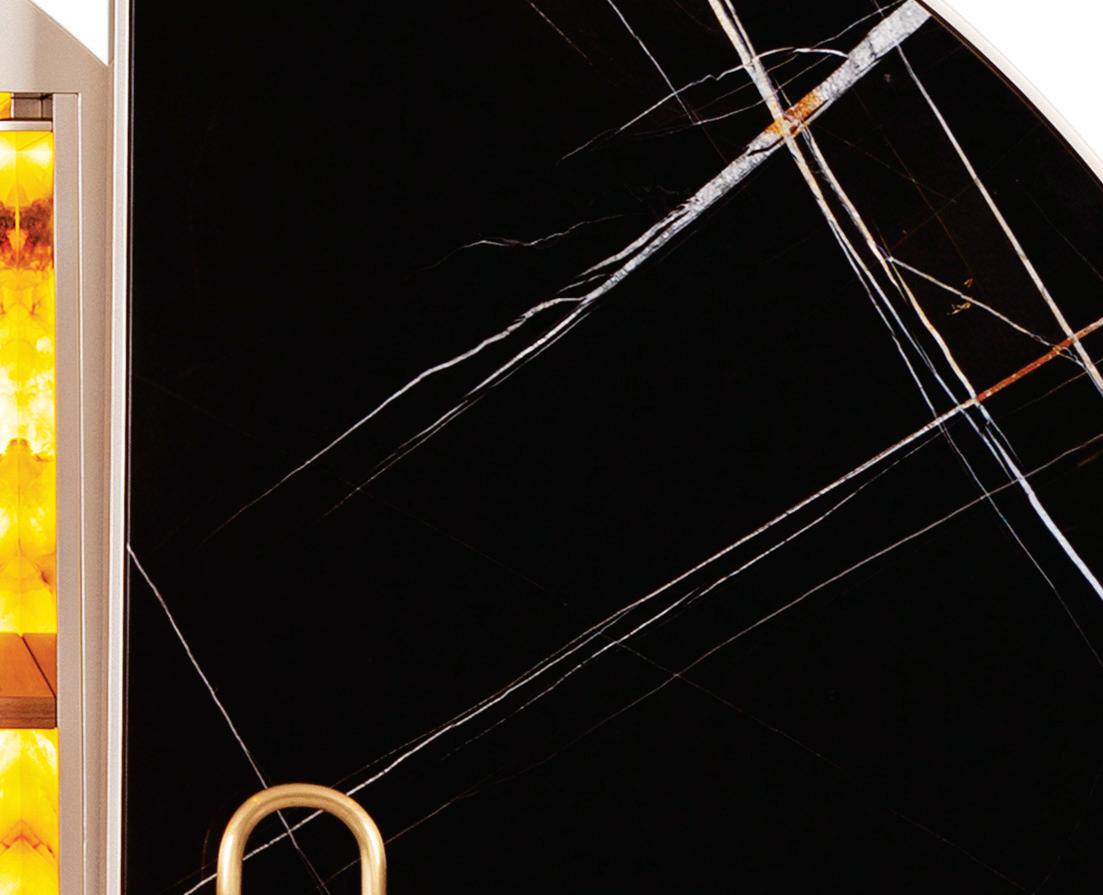





Bongo Bar Cabinet by Greenapple sets its own agenda with its unique and dramatic design statement. This limited series timber cabinet is lacquered in champagne high-gloss powder coat with automated sliding doors in polished Sahara noir marble. The interior features cup and bottle holders and two matte walnut timber drawers while the back is polished Patagonia granite that is LED back-lit. Certainly a martini never tasted so good when made at this bar.




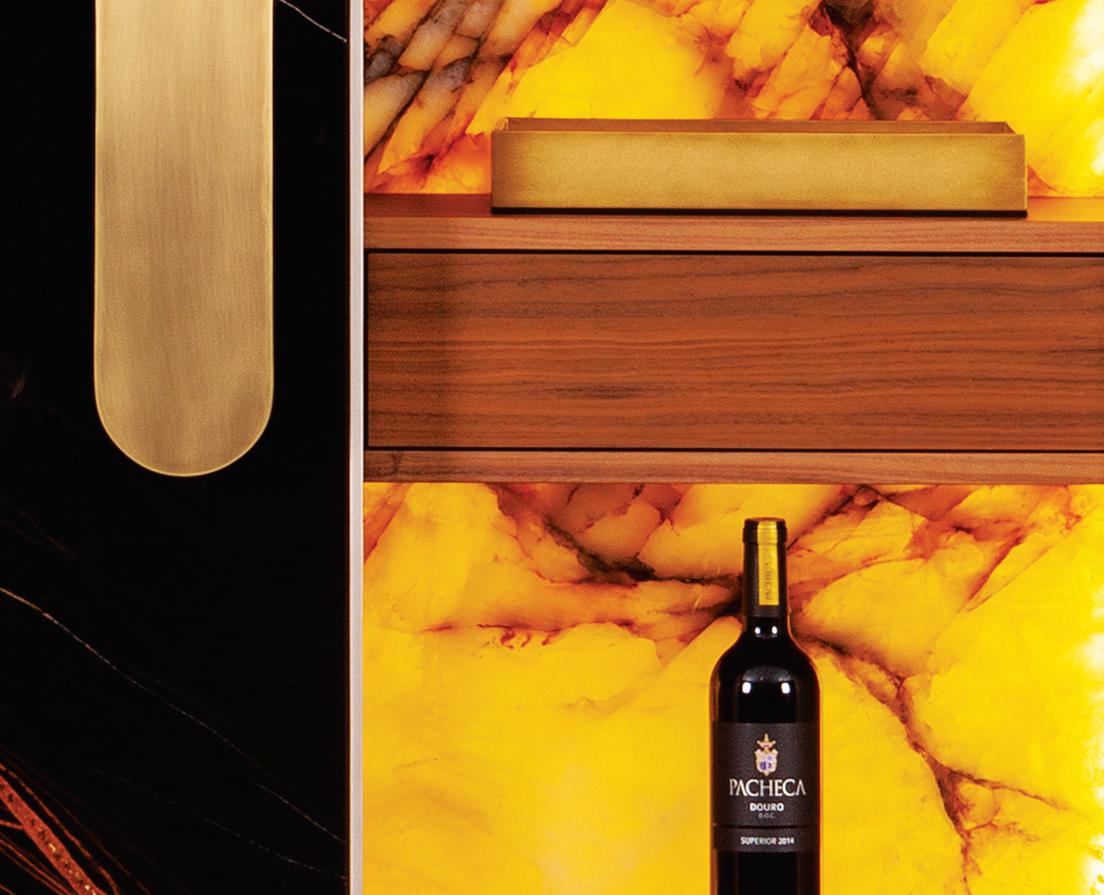
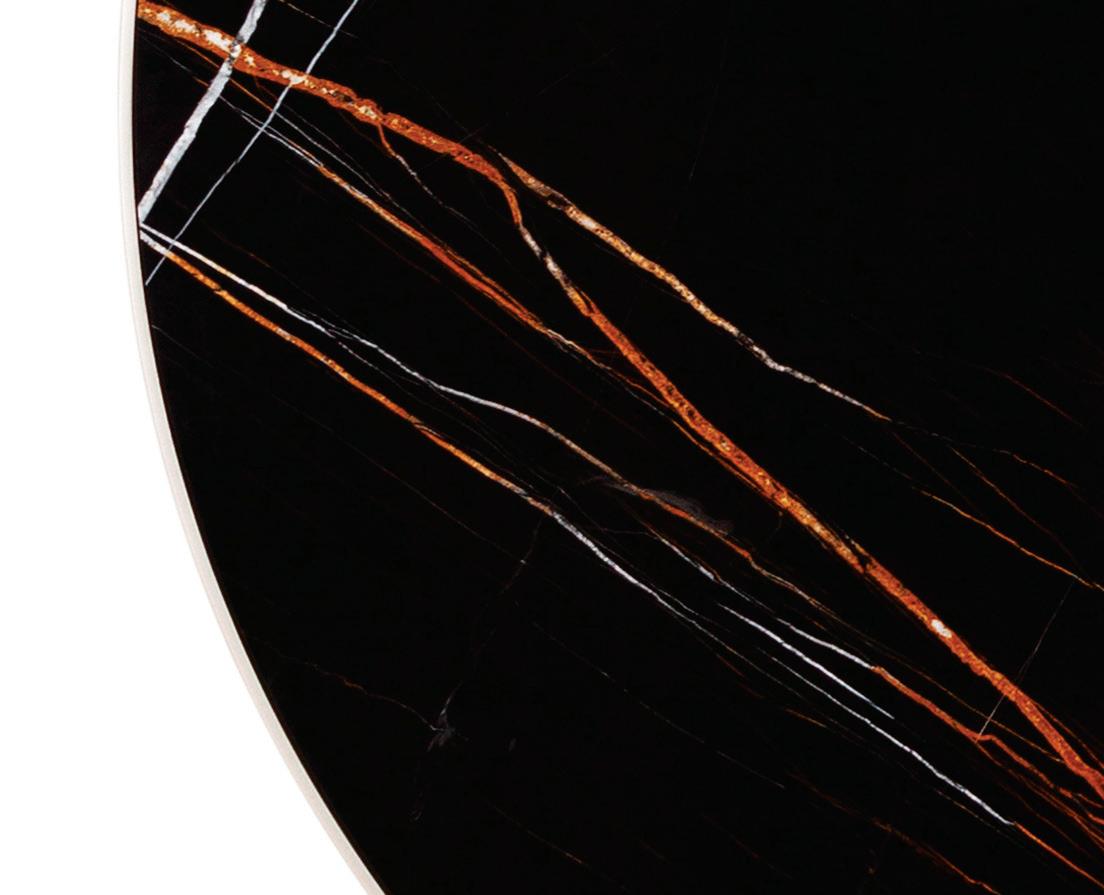

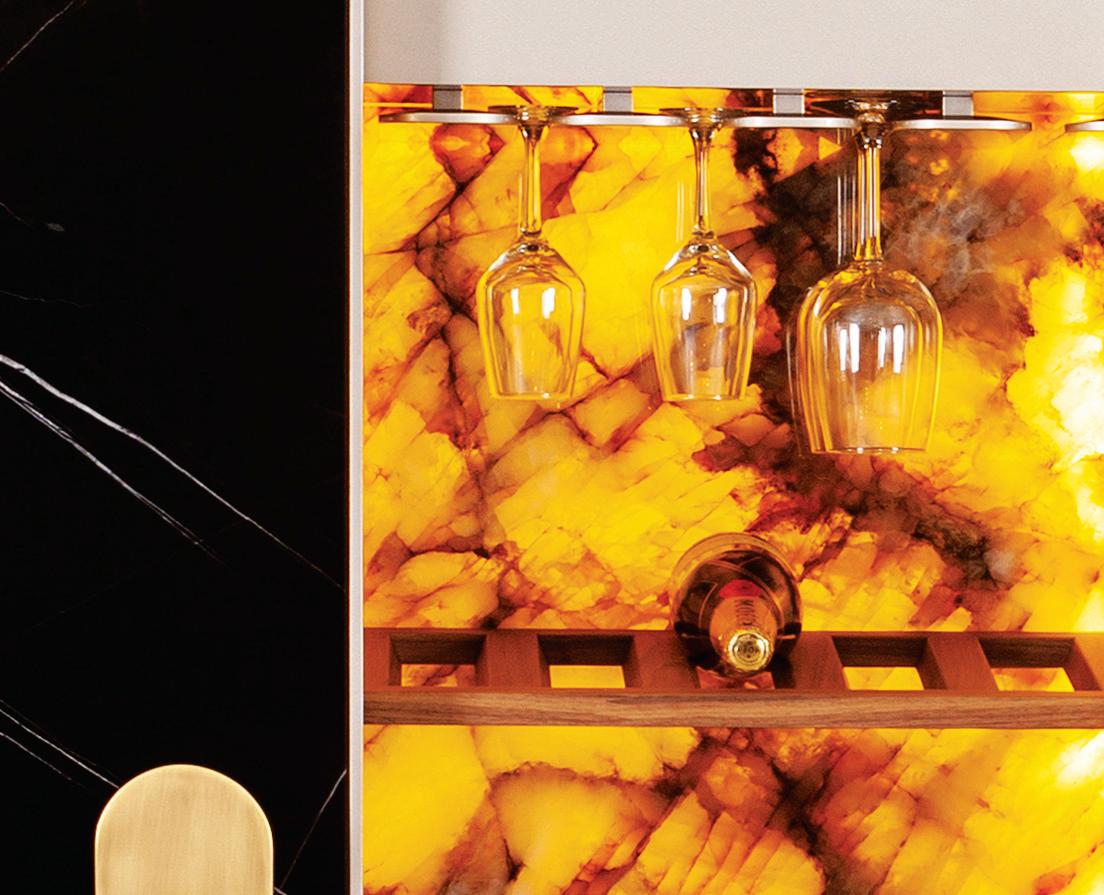



IN SHORT
The Beauty In Colour
Indesign Staron



Staron® Solid Surfaces meticulously balances beauty and state-of-the-art functionality. This year, Staron® introduces three new colours: Terrazzo Venezia for an energetic and elegant space inspired by the so whites and earthy tones of Venezian architecture; Supreme Flux, which o ers a dynamic and calming atmosphere; and Supreme Noir Concrete to create a rich and luxurious everyday environment. Comprised of a pure bauxite mineral and blended with acrylic resin, its non-porous nature o ers a surface solution that is beautiful in aesthetics and desirably easy to maintain. Used to create monolithic owing bench tops, splashbacks, wall cladding, bathroom vanities and walls, counters and many other applications – Staron® Solid Surfaces’ extensive collections, comprising more than 90, o er endless design opportunities.
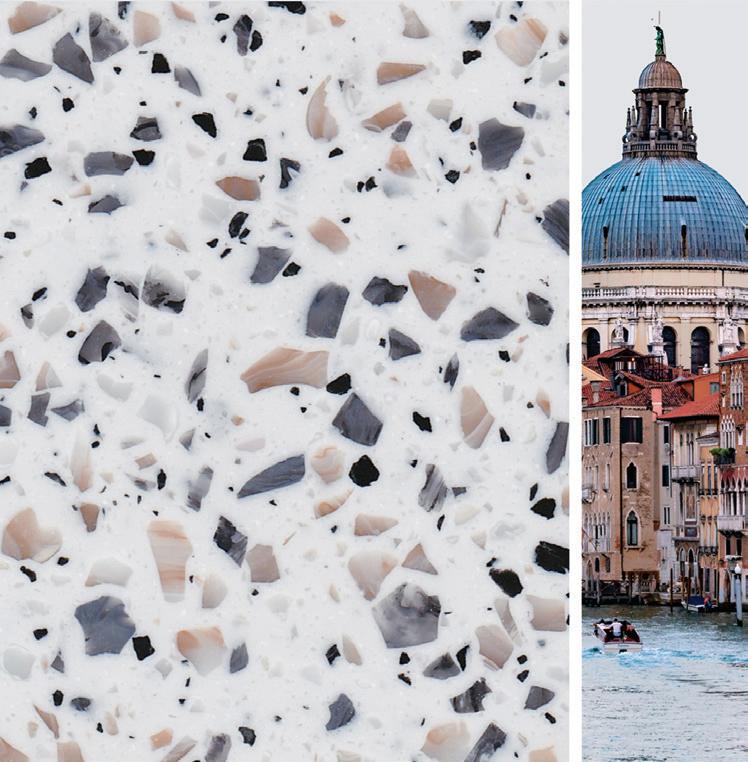
Infinite Infi nity
Indesign In nity
In the endeavour to provide better, smarter solutions for an increasingly intelligent design community, In nity Commercial Furniture has completed an enormous re-brand. This shi in focus has enabled a new-found drive and capacity to deliver higher quality product and customer service across the industry. Over the past 12 months, there has been a concerted e ort to meet and exceed sustainability targets without compromising on quality materials and ergonomic solutions.

The New Era Of Stone
Indesign Rockson
A master in its trade, Rockson is a leader in superior-quality, ultrathin porcelain slabs. Looking to continue this legacy, the exclusive development of Kerlite celebrates the new era of global surface solutions to the Rockson name with the most versatile porcelain stoneware in the world. Kerlite boasts a lightweight, stain-and scratch-resistant product in 3.5mm–6.5mm slabs, that is both at and exible in form. This makes it the ultimate solution to cladding on new and existing surfaces. Durable and thoughtfully designed, the eco-friendly product holds a zero-to-one re rating with easy application to oors, walls, building façades, kitchen cabinets and bench tops.

INDESIGN 59 IN SHORT
Bolon World
As a global company based in Sweden, Bolon has been at the pinnacle of design and manufacture of woven ooring for some 70 years. A er all, it was the founder of Bolon, Nils-Erik Eklund, who invented the process back in 1949. This new decade marks a time for even more groundbreaking initiatives from the company and reinforces Bolon as a market leader producing products that are practical, functional and of course beautiful.
Today, Eklund’s grand daughters, sisters Annica and Marie, are driving the business forward and together they and their sta are forging ahead with even more creative plans and sustainable actions.
The brand is ever evolving and in the last few years there has been a change of leadership. Annica, once Managing Director has transitioned to Creative Director, while Marie has taken over the MD role. How fortuitous for siblings that work together to nd their niche within the business, concurrently understanding and appreciating the others expertise and talents. This is a true success story.
2020 is also a red-letter year for Australia and its relationship with the brand as the opening of the rst agship Bolon showroom in Oxford Street, Sydney occurred in March.
The sisters together with The Andrews Group, sole distributors for Bolon in Australia and South East Asia, gathered with the crème of Sydney’s design community to celebrate the auspicious occasion. With clients now able to visually experience the multitude of patterns and colours that comprise the Bolon oor covering collections this store is certain to be a favourite among architects and designers.
Coinciding with the opening is an adventurous and creative marketing campaign that is set to inspire and educate architects, designers and end users. Named The Art of Performance, Bolon products are presented in images that are inventive and playful but also push the boundaries of stylisation and photographic process. As a photographer of note, Annica has been responsible for this enterprise and has fully explored her creative talent to present imaginative product display through a glorious artistic approach.
Of course beautiful images are one thing and Bolon can a ord to be a little fanciful, especially with sustainability credentials that lead the market. When Bolon was invented all those years ago the product was produced using vinyl o -cuts to weave rag rugs. The driving force then and now has been to ensure that sustainability is integral within the business. With this in mind there have been some new members join the Bolon Management team. Firstly, Håkan Nordin has taken the role of Sustainability Director. Nordin was previously a Board Member of Greenpeace Sweden and Policy Advisor for Greenpeace International. Another new appointment is Marit Börjesson the Operations Director whose last position was as Global Operations Manager at Caterpillar Propulsion Production AB. Both Nordin and Börjesson bring their own particular experience and a new perspective to Bolon and will help support the sisters as they plan for the future.
As with every business one of the most important areas is research and development and again Bolon does it just that little bit di erently. In house there is the traditional facility that designs and makes, test and re-tests however for practical day-to-day wear and tear there is nothing like trialing new products in situ and where better than a charming boutique Hotel in Italy called Villa La Madonna. This grand home was once owned by the family, sold and subsequently repurchased and re-purposed as a hotel. It is in this special place that new products are installed, practically assessed and further ideas developed for day-to-day living. For example, wall coverings Bolon’s latest product, has been trialed over time at the Hotel to assess durability, practicality and functionality. All has gone according to plan and this new product line will come to market later in the year.
Companies such as Bolon who make the trends and in uence the market is looking ahead and planning for the coming years. With sustainability key, superior products on o er and the inimitable Marie and Annica in charge, the company is entering a new and exciting chapter of its life and one that will successfully de ne it for the future.
BOLON.COM 60 INDESIGN BOLON
Words Jan Henderson Photography Good Thanks Media
Opposite: The sisters and The Andrews Group at the opening of Sydney’s agship Bolon showroom in March. Le to right, Stuart Andrews, Howard Andrews, Annica Eklund, Marie Eklund, Mark Andrews.
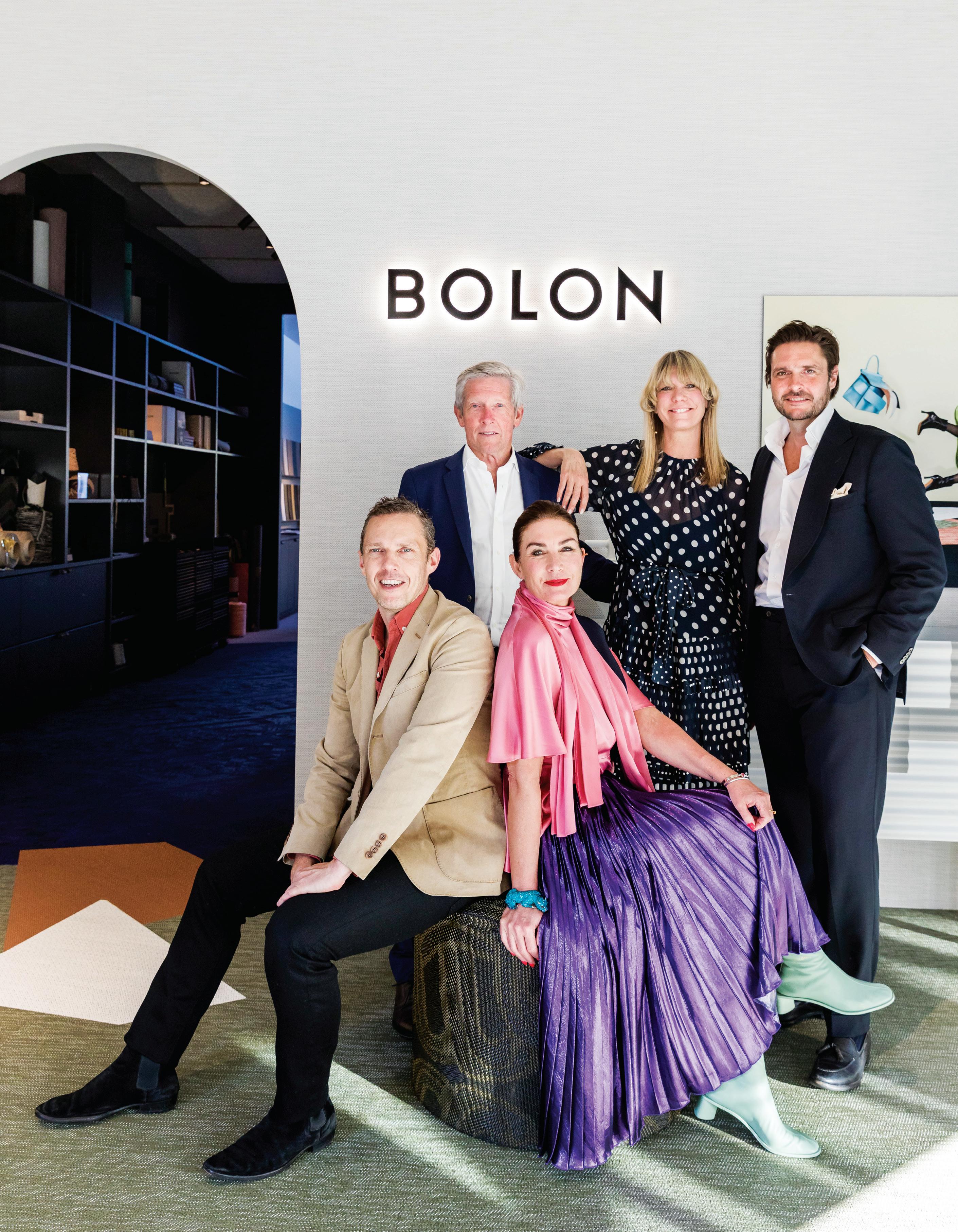
Florence, Italy?
No Florence, Melbourne
CoLAB Design Studio’s latest interior project Florence Co ee looks as good as the co ee tastes. Located on the corner of well-known Hardware Lane in Melbourne’s laneway district, Florence brings its special blends of co ee and a smart, easy menu to an area that is known as a mecca for eating and drinking.
The interior palette was conceived during demolition, when the original terracotta paved oor from the 1920s Farrant’s Saddlery store was revealed. This was the inspiration for the interior colour scheme. Florence Co ee presents as a delightful mix of frothy pink leather banquet seating, salmon pink terrazzo oors, cool teal green painted walls, caramel tiled benches and furniture from Australian product designer Ross Didier.

It’s not Florence Italy, it’s better; it’s home-grown Florence Melbourne and it serves excellent co ee.
Nothing But The Best
Indesign TNG
Taking on the Japanese concept of ‘Wabi Sabi,’ the new First Sentier Investors’ workplace by nettletontribe meets high sustainability standards with clean and meaningful interior spaces. Boasting a 6 Star Green Star rating and the WELL Gold rating, the o ce is highly detailed, with an authentic material palette of light timbers, tan leather and handmade ceramics Lovers of ne oak, Tongue n Groove solid engineered European oak oorboards in the Bistro colour, Eterno classic wire-brushed nish and Piccolo format in prime grade feature to create a warm, sophisticated and uniform aesthetic. Oil- nished and enhanced by its prime grade characteristics, these oorboards are truly one of a kind.

Elegant And Clean
Indesign Zenith


Danish furniture designer Hee Welling’s ethos is centred on pieces that are technically superior, timeless and quietly elegant. The AUKI collection for Zenith is a series of lounge chairs, foot stools and tables in various sizes. Sophisticated and beautifully dynamic, the lounge chair is fully upholstered in a polyurethane foam and available on a four-leg, swivel four-star ( at) and round bases for elevated comfort. The AUKI foot stool, powder-coated or matt chrome, is available in a four-star base or with meticulously cra ed timber legs. Topping o the collection are the AUKI table and co ee table – available with a powder-coated or matt chromed four-star base with square or round laminate. AUKI is the perfect design addition to impress your audience.

INDESIGNLIVE.COM IN SHORT 62
Photo: Hannah Caldwell
Out Of The BOX
With the rise and rise of online shopping, the consumer now expects more personally tailored and practical experiences when purchasing products. In Helsinki, design practice Fyra collaborated with consulting rm Motely to cra BOX, a new multiexperiential project for Posti, Finland’s leading postal and logistics company. The overall concept was to create a new self-service store for online customers and the design is a harmonious space with more than 600 parcel lockers as well as tting rooms. This is form and function at its best.

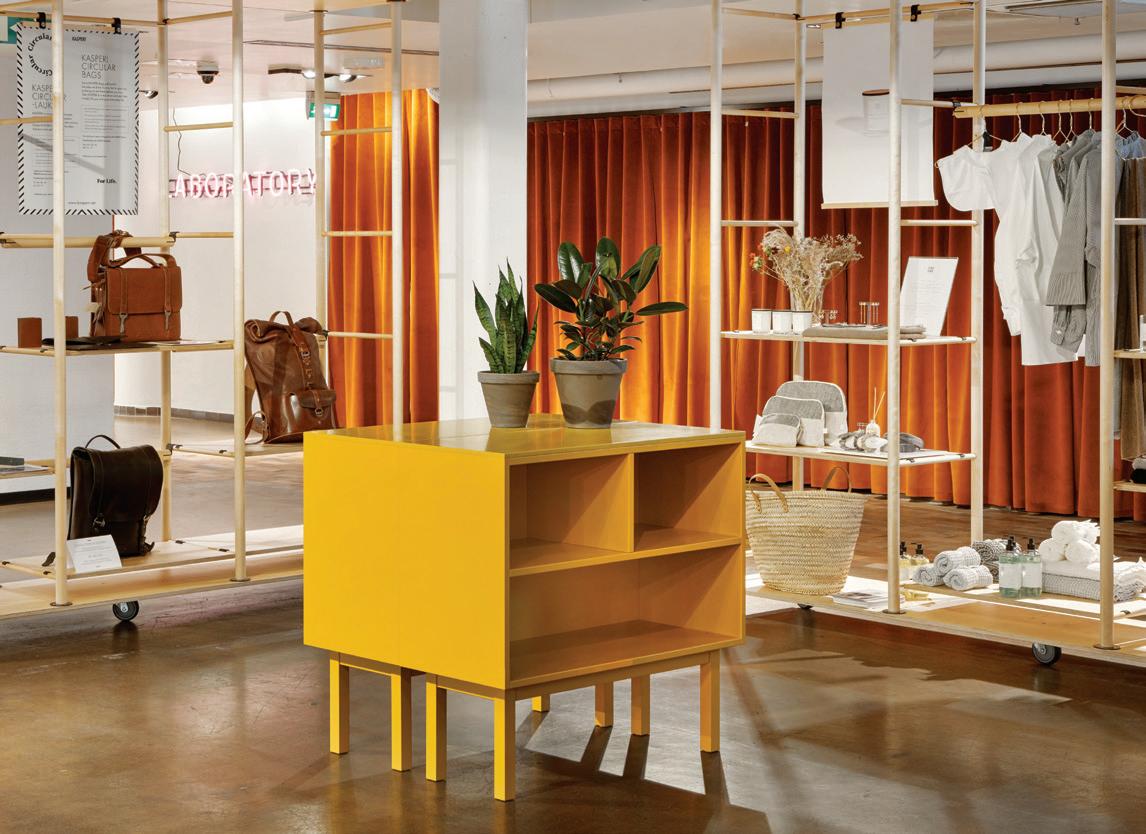
A Healthier Planet
Indesign Planex

The new decade sees the Anthropocene epoch, impactful and highly signi cant. As designers and producers, design intelligence should be at the forefront of any product, leading the way towards a healthier and better planet. For Planex, this means starting with the philosophy: ‘do no HARM’ to the environment through premium quality and locally sourced sustainable materials. Focused on reducing waste to land ll and reducing GHG emissions, Planex is determined to improve production e ciencies through a closed-loop system of manufacturing and products that can be re-used, re-purposed, re-con gured and re-cycled. 2020 is not the time to talk the talk, but walk the walk.
Lounge Time
As a place to relax, the new QANTAS First Lounge at Changi Airport, Singapore is unsurpassed. CAON Studio partnering with Kelvin Ho from Akin Atelier has created a bespoke experience where luxury and amenity combine for a singular experience. With more than 1000 square metres of oor space and a capacity for 245 guests, the opportunity to refresh, dine and work has never been easier for passengers in transit. The lounge is divided into ve essential areas: the dining room, the lounge, cocktail bar, VIP quiet room, and bathroom and shower suites, while the interior is delineated by perforated walls, banquettes and curved brass partitions. This is rstclass travel with rst-class design, and is the perfect gateway to Singapore.

INDESIGN 63 IN SHORT
Photo: Riikka Kantinkoski
Big, beautiful design from an Australian icon who embraced colour and texture and le an indelible mark on the interior landscape
The Best Of Colour And Design
An exhibition of the work of Marion Hall Best was recently on display at Bathurst Regional Art Gallery. The exhibition, entitled Marion Hall Best: Interiors, is a touring exhibition from Sydney Living Museums. The textiles, furnishings and other objet showcased document an extraordinary life in design.
Best was a visionary in her time, a radical designer and her work was o en described as electrifying and avant-garde. Best’s interior decorating schemes were unashamedly modern at a time when other interior designers preferred a subdued palette and period furniture.

Her interior decorating style was lled with colour through her signature glazed painted nishes on walls and ceilings and this love of colour would transform a room. Although she designed mostly private commissions, Best’s work was brought to public attention through the many photographs and articles that appeared in magazines, newspaper and through exhibitions. Best also maintained two shops in Queen Street, Woollahra and was a design presence in Sydney for more than 20 years.
She was inspired by the modernist movement and colour theory of artists of the interwar years and is attributed with introducing international modernism to the Australian market through the importation of furniture and furnishings from such brands as Marimekko, Flos and Knoll. Best was a maverick of her time and the resurgence of her popularity is well overdue.
Soulful Simplicity
Indesign CULT

Inspired by a simple crease of paper, the N02™ Recycle chair from Fritz Hansen is where Scandinavian aesthetics meet Japanese simplicity. Produced entirely in upcycled plastic, household waste and recycled Polypropylene, it is a rst for the Fritz Hansen name. Japanese studio nendo transforms the form of a folded paper into a crease in the chair’s shell that makes the design support the user’s upper and lower back. The chair’s shell is made of circular plastic that can be recycled again if necessary, giving it design longevity to last for decades. Elegant in shape, dynamic in colour and versatile in functionality, the N02™ Recycle is a chair that meets Fritz Hansen’s quality standards with material innovation in mind.

INDESIGNLIVE.COM IN SHORT 64
–
Photo: A room for Mary Quant, display room designed by Marion Best, 1967. Caroline Simpson Library & Research Collection, Sydney Living Museums. Photo © Estate of Mary White.
–
Specifier Spotlight Furniture For Every Occasion
 Indesign Krost
Indesign Krost
Design Notes
There is literally something for everyone in the diverse and exciting furniture offering from Krost. From the perfectly designed chair for a commercial project, banquet seating and tables for commercial break out areas or workstations and storage units for the office, Krost has the range and experience to assist with every project. Combining local manufacturing with large stock holdings allows Krost to provide a turnkey commercial furniture service within short lead times. With 30 years of expertise in Australia coupled with superior customer service, Krost excels at providing functional and personalised workspaces.
Product
showcase a natural material richness that complements the modern office environment.

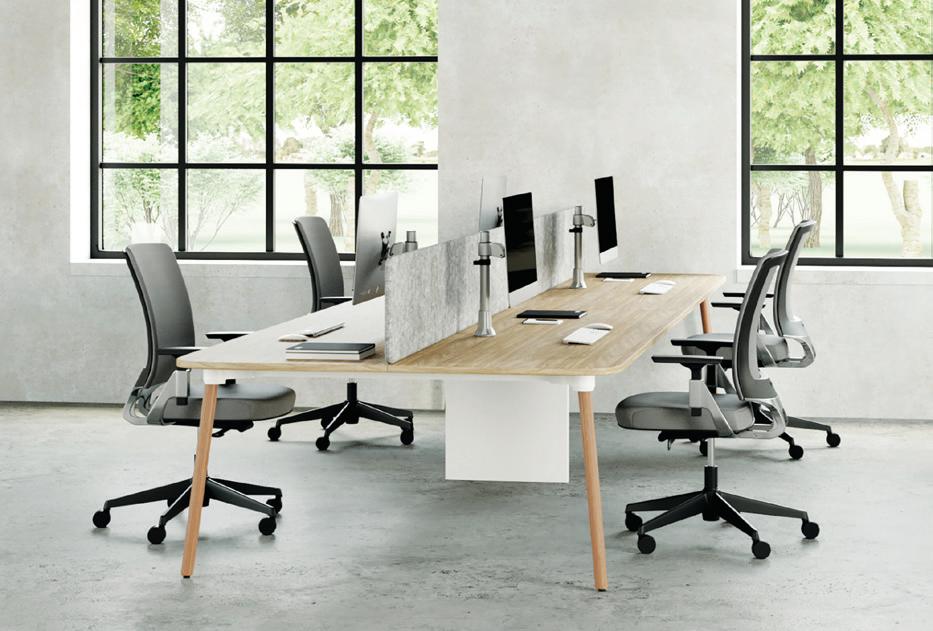


Product Vada is a refined storage and display system with multiple configurations to suit every requirement.
is clean and contemporary, fully upholstered and sculptural in form.
Product
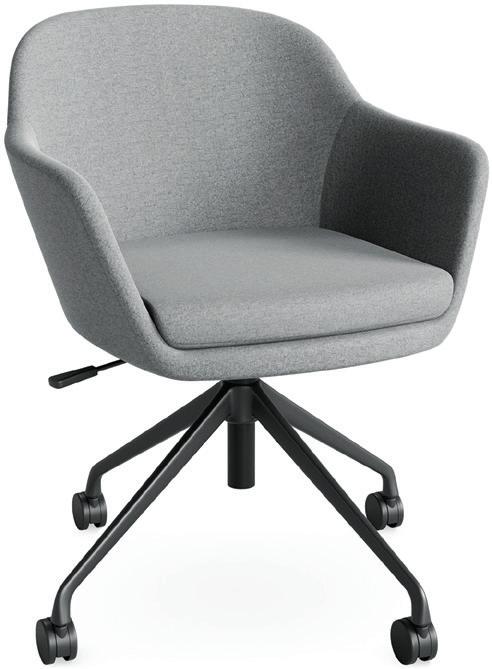
KROST.COM.AU 65 IN SHORT
Product The Ted chair and Wiz table are the perfect combination for workplace and
Product The Classic Banquet seating range creates modular spaces from booths to casual benches.
FortyFour
Product The Poppi chair is lightweight and durable, ideal for indoor and outdoor use and is stackable.
Elki Workstations
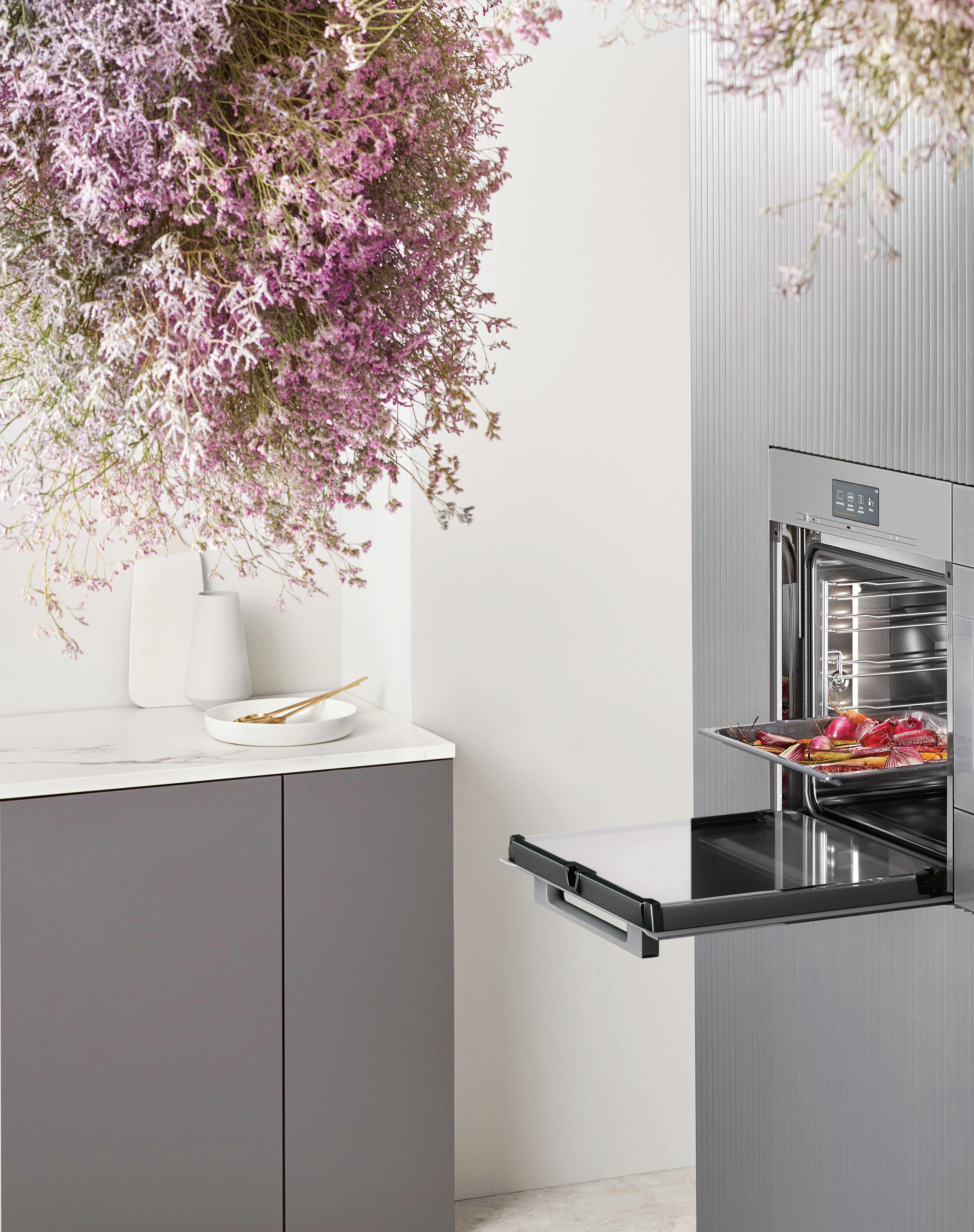
Applied Intuition

As with everything Miele presents, Generation 7000 places the user experience rst, providing an intelligent design that brings unprecedented e ortlessness to the cooking process.


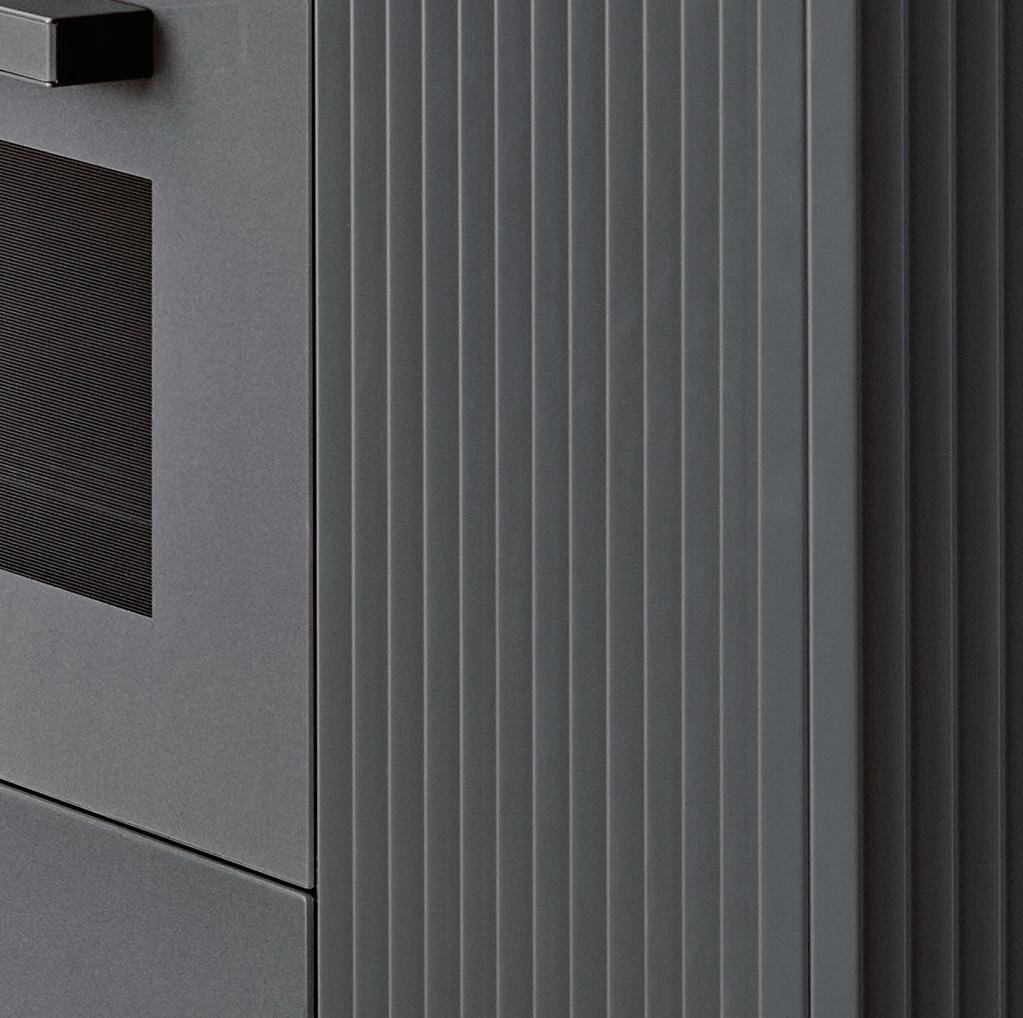
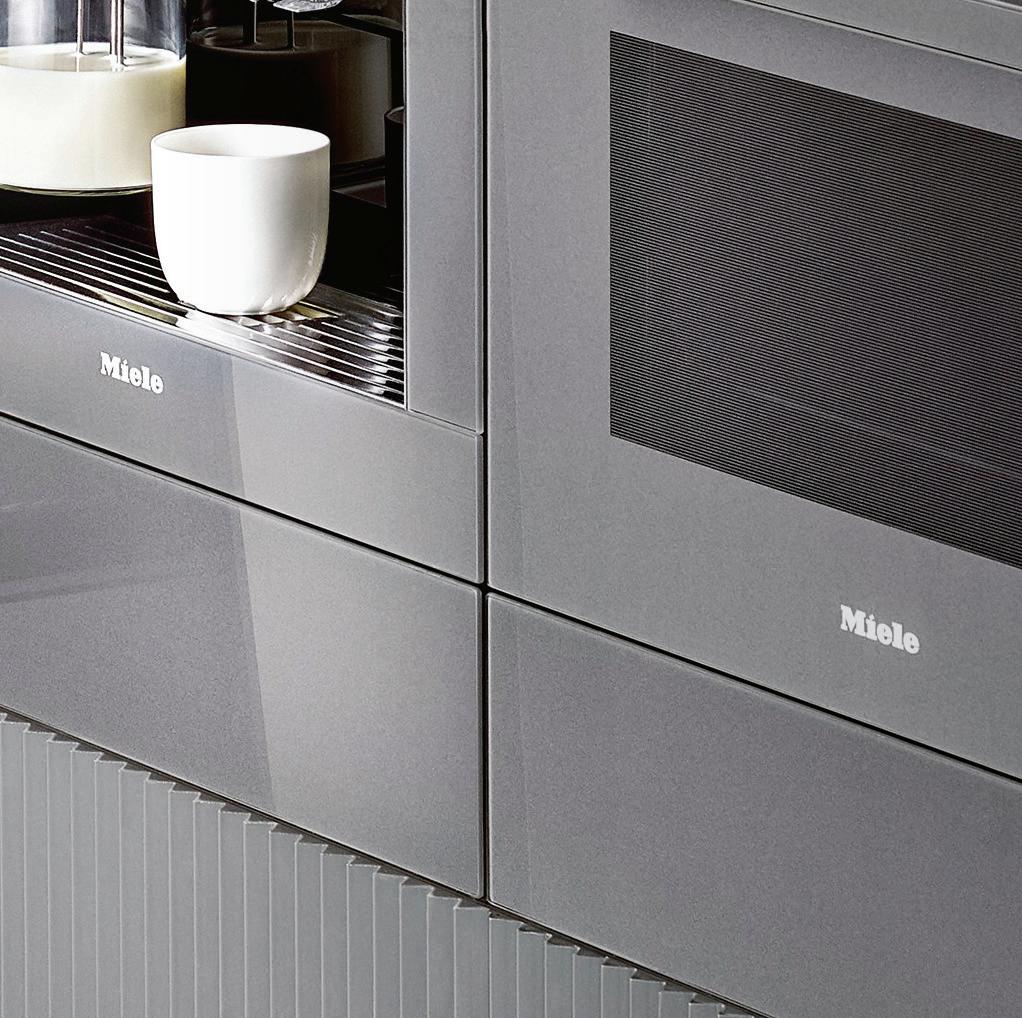
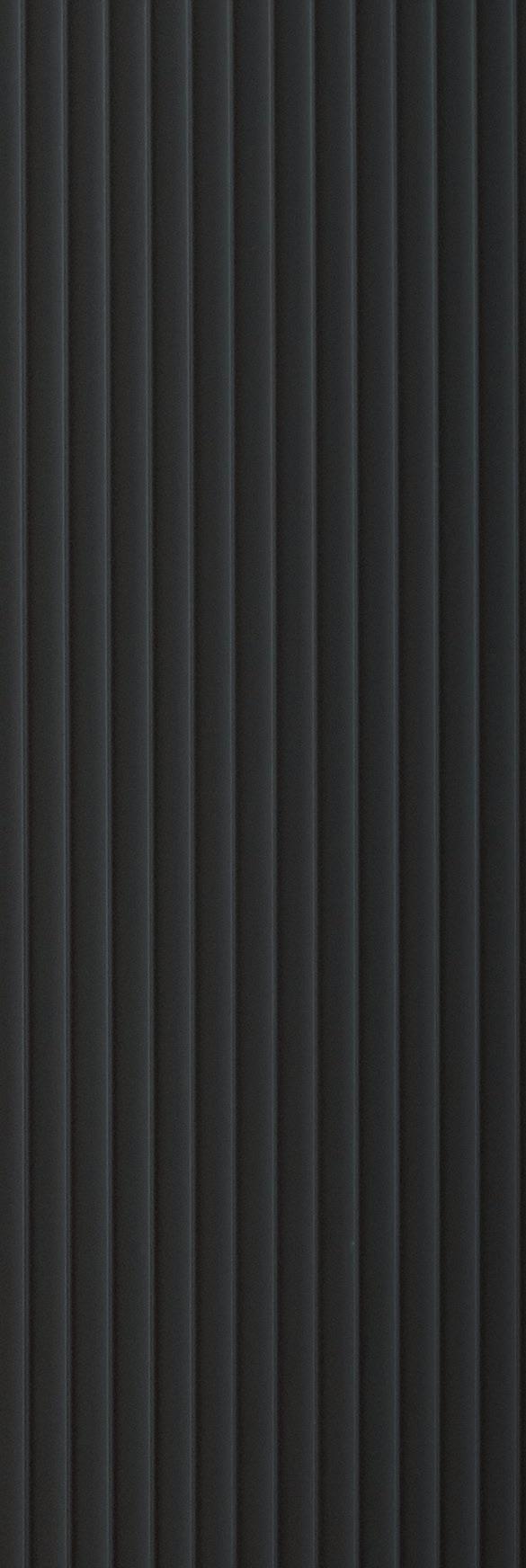


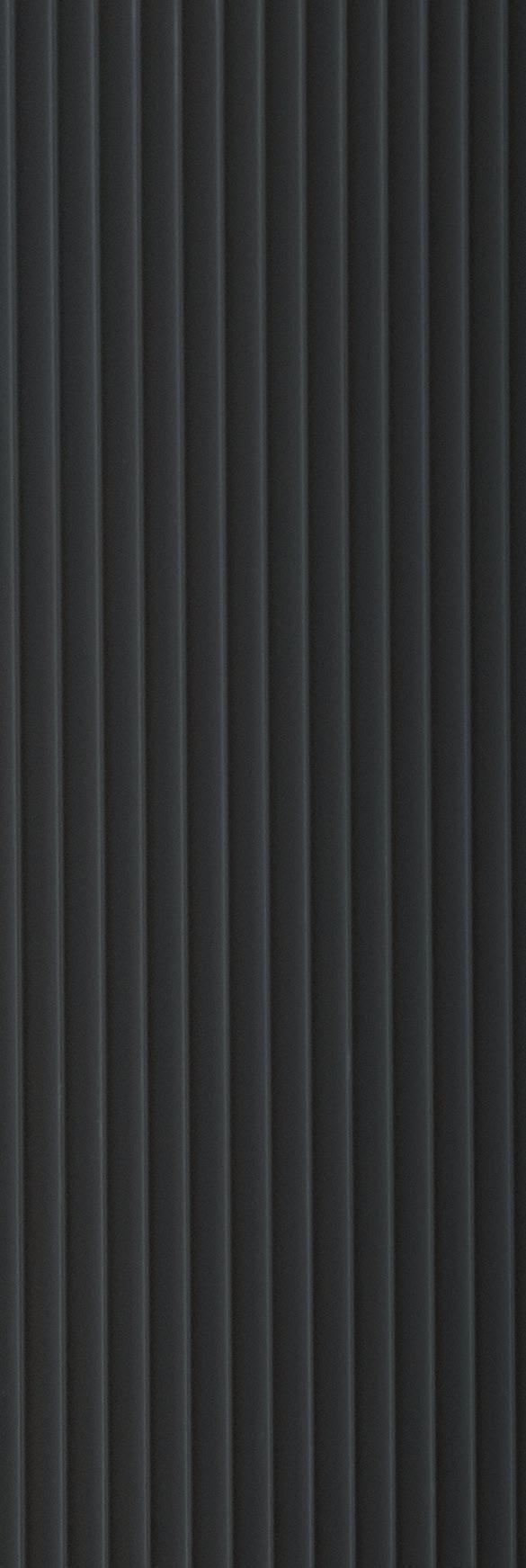
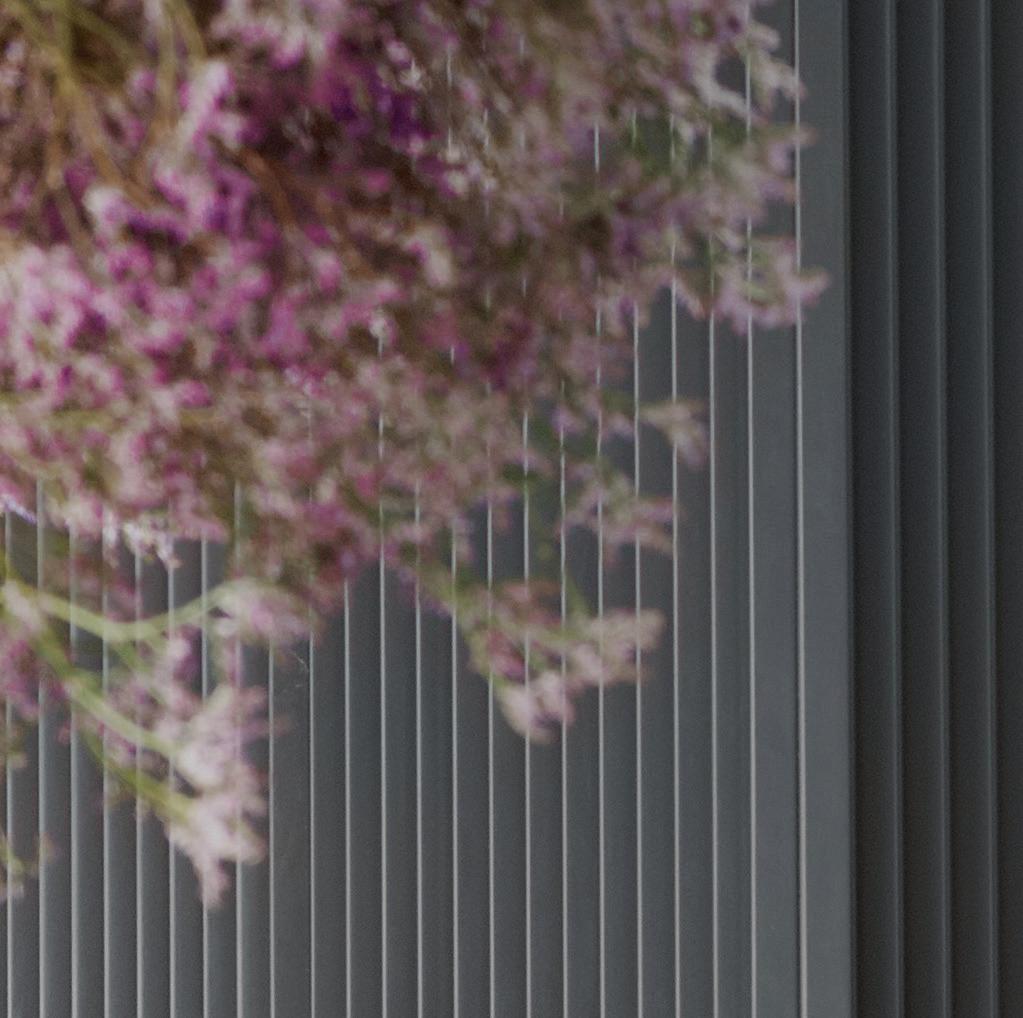

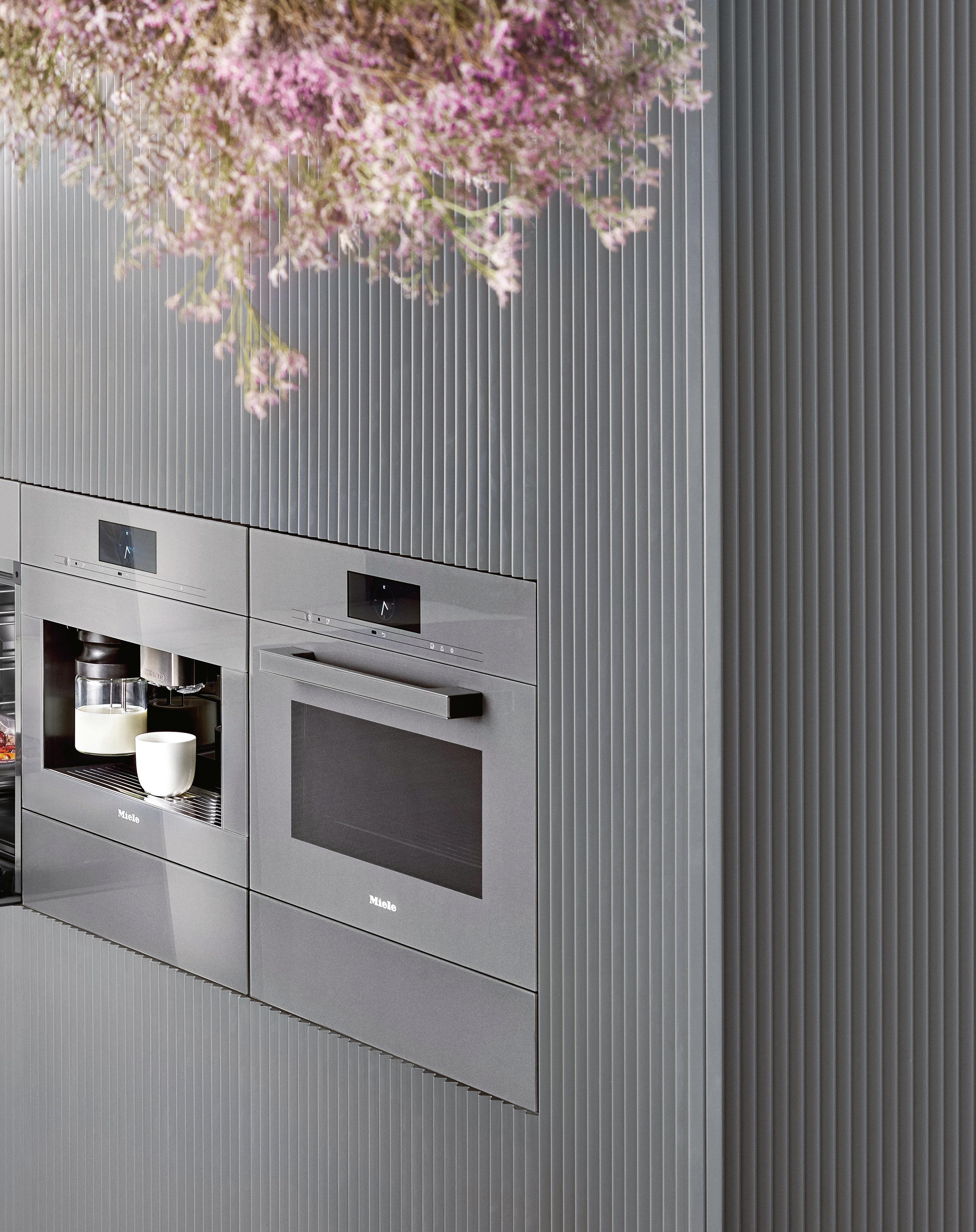 Words Vicki Wilson Photography Courtesy of Miele
Words Vicki Wilson Photography Courtesy of Miele

Intuition is a formidably nuanced thing. Honed well, it has the power to make every interaction in life ow awlessly – as if everything is exactly as its meant to be. When unheeded, even the simple things become outdated. This is as true of kitchen appliances as it is of human conversation.
With 120 years in the business of design and innovation for the betterment of kitchen spaces, Miele has mastered the art of equipping kitchens with intuition. As its guiding design principle, Immer Besser, would suggest, Miele is a not a brand that rests on its laurels; mastery is not the nish line in the pursuit to be forever better.
The latest, not to mention largest, product launch to result from Miele’s relentless pursuit of Immer Besser is the Generation 7000 Built-In range. The extensive range comprises of 138 models and features a selection of ovens, speed ovens, built-in co ee machines and Miele’s inimitable steam appliances. Each and every product is equipped with exclusive technology, enhanced connectivity, and ever elusive design intuition.
The genesis of Miele’s Generation 7000 Built-In range of appliances is that it has been designed for people, not kitchens. “By putting our user experience at the very heart of the design, cooking has never been more intuitive. Category-leading technology means the Generation 7000 range guarantees the perfect results people have come to expect from our cutting-edge appliances,” says Michele Laghezza, marketing director for Miele in Australia and New Zealand.
TasteControl is just one of these Miele-exclusive features pioneered by the Generation 7000 Built-In range. Thanks to this feature that automatically opens the oven door slightly once cooking is completed to enable rapid cooling before switching
to warming mode, every dish is certain to taste delicious and to be cooked to perfection. For those who like to keep a watchful eye over their culinary creations, there is Miele’s FoodView inoven camera and cleverly, there is also the ability to make remote temperature and time adjustments.
The intuitive innovation of the Generation 7000 range extends from its built-in appliances to its induction cooktops. Designed to ensure nothing stands in the way of creativity in the kitchen, the Generation 7000 induction cooktop represents never-before-seen freedom when it comes to cooking and is available in widths of 80 and 90 centimetres.

Providing the perfect unobstructed ow for budding home chefs, up to six pots and pans are able to be positioned anywhere on the cooktop and can be moved e ortlessly across the entire surface without any unpleasant noises thanks to Miele’s unique SilentMove feature.
Intuitive controls and accompanying heat zones follow the movements of pots and pans and with rapid heating, through induction, there is minimal electricity usage in each position. Miele’s SmartSelect power levels and times have been placed on the underside of the ceramic glass, creating an elegant and minimalist design that is certain to suit any kitchen.
As with everything Miele presents, the Generation 7000 induction cooktops place the user experience rst, providing an intelligent design that brings unprecedented e ortlessness to the cooking process. Michele Laghezza explained, “By eliminating unnecessary cooking steps and interruptions, the design of the cooktops ensures Miele users are able to focus on their creativity and deliver perfect cooking results every time”
MIELE.COM.AU/GEN7000 69 INDESIGN MIELE
Page 66-67: Miele VitroLine built-in cooking appliances in Graphite Grey.
Opposite: Miele H 7464 BP Vitroline Obsidian Black Pyrolytic Oven. Above: Miele KM 7575 FL Induction Cooktop.
Ross Gardam Turns Any Workspace Into A Happy Place
A perfect lounging solution for a modern interior, Place o ers in nite versatility, high-end cra smanship and harmonious cohesion creating environments that are smart, intuitive and exible.

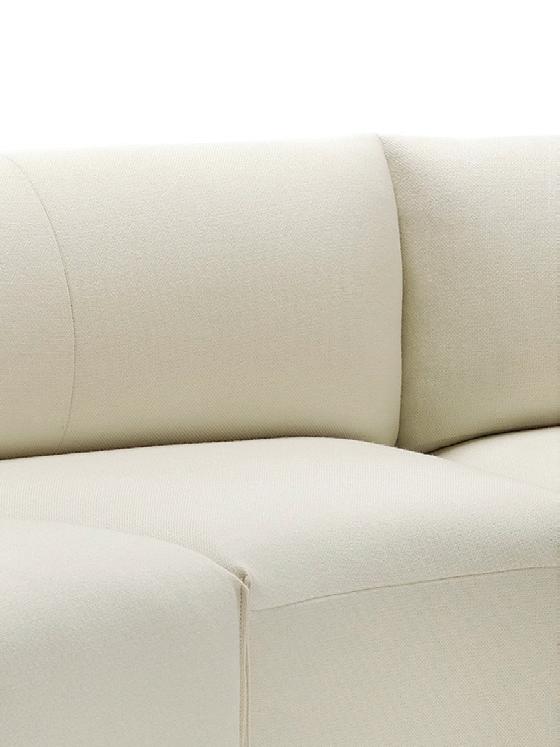
Ross Gardam’s new modular collection o ers an opportunity to create myriad di erent settings that can transform any working environment. Designed around one primary blueprint, the variety of modules ranging from lounges to ottomans and arms to backs enables endless con gurations for any requirements.
Modular exibility allows for stand-alone units and working spaces to be reset and nested back together through a detachable joiner bracket and secured with a back zipping mechanism for a more permanent spatial arrangement. A wide choice of varying back and arm heights can transform the arrangements from casual to private by enclosing the space to provide solace from a busy environment or a place to focus and relax.
The modules can be easily incorporated to work with any oor plan. All square units are based on a 730mm square footprint, ensuring that every module joins seamlessly and can sit back to back. Equally, the curved units have been designed around the same surface area, which means custom arrangements, incorporating islands or abutting seating, are easy to con gure.
What’s more, the contemporary curvature of the round units is a perfect match for the organic oorplans of the modern o ce.
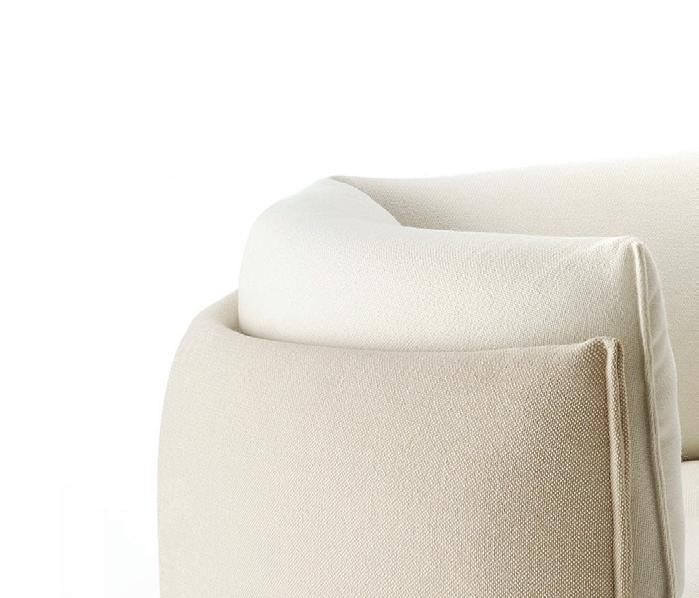
Further elevating the new collection’s practicality factor is a variety of surface options to complement any seating arrangement. A range of stylish surfaces, from pivoting and suspended tables to integrated end solutions, o er an opportunity for extra personalisation in line with the requirements of its users. The collection also ful ls the technological needs of today’s workforce. Seamless integration of power and USB charging capabilities that can be installed either at the front or the side of each module creates a well-connected workplace fostering creativity on the go.
The attention to detail in delivering superior workplace functionality is met by best in class cra smanship, extraordinary comfort and so aesthetic. By combining smart practicality with high-end style, this Australian designed and made collection blurs the line between the commercial and residential.

Just as seamlessly as its elements join together to create an array of unique con gurations, Ross Gardam’s modular lounge system brings every interior together, enabling people to thrive in an agile and harmonious environment.

STYLECRAFT.COM.AU 70 INDESIGN STYLECRAFT
The versatility of Ross Gardam’s new range Place is the perfect solution for every workplace, photography: Haydn Cattach.
BIG THINKERS AND CREATIVE GURUS
INDESIGN 71 IN FAMOUS FAMOUS IN

INDESIGN Luminary Team Player
Words Paul McGillick Portrait Photography Bo Wong
Geoff Warn likes working in teams. The Principal of With_ Architecture Studio (formerly Donaldson Warn) and Western Australia Government Architect since 2013, he sees architecture and planning as inclusive, collaborative processes, commenting: “Architecture emerges from creative engagement with community and is always a function of relationships between people.”
Indeed, the tousled-haired Warn is gregarious and insatiably curious — a walking advertisement for life-long learning. He brings to his architecture and the Government Architect’s office a broad frame of reference: his Bachelor of Architecture and Master of Architecture Degrees were punctuated by a Bachelor of Arts in Comparative Literature. His substantial teaching portfolio includes Professor of Architecture at Curtin University from 2005 to 2010.
He has recently shepherded into play W.A.’s State Design Review Panel, which he says will bring benefits both to architectural practice in the state and to the community as a whole. “We’ll get better buildings and better places.”
The panel is made up of fifty practitioners, not just from architecture, but also from planning, landscape, transport and heritage. It also includes people from other states as an insurance against parochialism. It ensures proponents get good input from experienced people. It will take a while to settle down, he says, but the “level of discourse” he feels will reach a higher standard — a good thing, since he believes that such discourse is currently at a higher level in Sydney and Melbourne than it is in Perth.
The panel, he says, will help developers become more confident of the value of good design. He gives the example of Perth’s resistance to
high-density development and its chronic problem of ever-expanding suburbs – due, he argues, to poor-quality developments that attract community resistance.
“Being able to distinguish between a poor design, a good design and an excellent design is something we haven’t had the mechanism to do,” he says. “It also gives planners confidence because they can ‘share their load’ with a group of respected professionals.”
Warn is a vigorous supporter of local design, and that includes an informed and passionate respect for Perth’s architectural past. But his is a tough love. He laments the lack of confidence that sometimes leads W.A. to genuflect to outsiders who may not always be the best choice for a project and may not always have W.A.’s interests front of mind.
So, who is Geoff Warn? He was born in Perth, as were his parents and his grandparents – “one of the few”, he quips.
After graduating in architecture from Curtin University – whose ‘brutalist’ architecture he admires – he “did some work overseas”.
“I graduated at the end of 1976, then in three months I was in New York with $90. I stayed six months, worked my way around and ended up going to London.”
But there was a recession on and it was hard to get work. “I had a job colouring in maps of the North Sea for Shell. I was in a flat in Highgate and I would go to the Highgate Library and read books on architecture.” After “the oil and gas job”, he worked for a small practice “measuring up hospitals” before buying a cheap second-hand car and setting off for Europe to look at as many buildings as possible.
INDESIGN 73 IN FAMOUS
For Geoff Warn, being W.A. Government Architect is not a culmination of, but just another chapter in a rich career.
Higher Learning
With_Architecture, formerly known as Donaldson Warn, gained a stellar reputation for educational projects that continues to this day. The practice specialises in university, government and private school commissions, as well as masterplans and the designs while complex are singular and visionary.

–
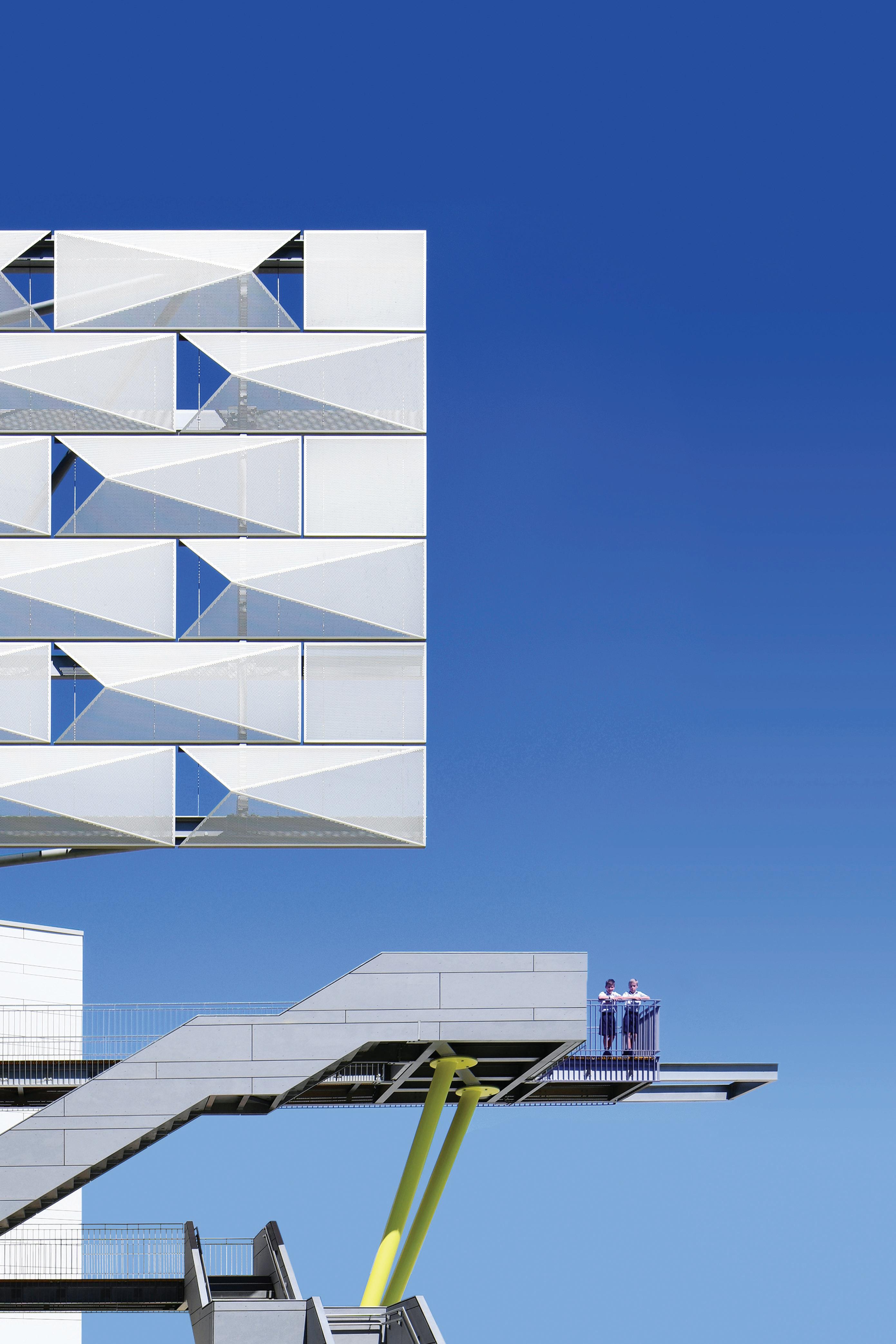
INDESIGN 75 IN FAMOUS
When he got back he landed a job at Farrell Grimshaw. “It was incredibly rewarding working in a practice that had a very strong reputation in London – and in the early days of Foster and Rogers, Jim Stirling,” he says. “Those offices were all in a close walking distance and staff would often move from one to the other. I ended up renting a flat that was directly below Christine Hawley, who was the design partner of Peter Cook (she is now Professor of Architectural Design at the Bartlett, UCL), so I met Peter Cook a lot. “Christine would take me to the AA, so I met all that generation. Bolles Wilson and Zaha Hadid would all be at the bar. We would sometimes hear Charles Jencks give a history lesson.
“I met some stunningly good people in London. I was in awe of how good they were and that motivated me to learn more.”
Back in Perth in 1981, concerned that he needed a more theoretical foundation to his work, he enrolled in a course at Murdoch University while teaching part-time at Curtin University and working as a sole practitioner doing hairdressing salon fit-outs, horse stables and veterinary clinics. “I would get up at six in the morning,” he recalls, “and study, go to work, then come home at night. I was married then and had a child. So, it was pretty full on. Living on the smell of an oily rag.”
This was the year he founded Donaldson and Warn with Dick Donaldson, whom he had originally met when they sat next to one another in the same studio. “All through Donaldson Warn,” he recalls, “I was teaching a lot, which helped keep the practice going but also helped keep the brain going.”
Over 32 years, the practice gained a formidable reputation, especially for educational projects – not to mention becoming the first architectural practice in Australia to be certified carbonneutral by the Federal government in 2015. With the retirement of Donaldson in 2017, the practice re-branded as With_Architecture Studio, but continues to specialise in government high schools, private schools, some university work, and masterplans. “They are complex projects,” says Warn, “where you can exercise your organisational and teamwork skills. I like working in teams and
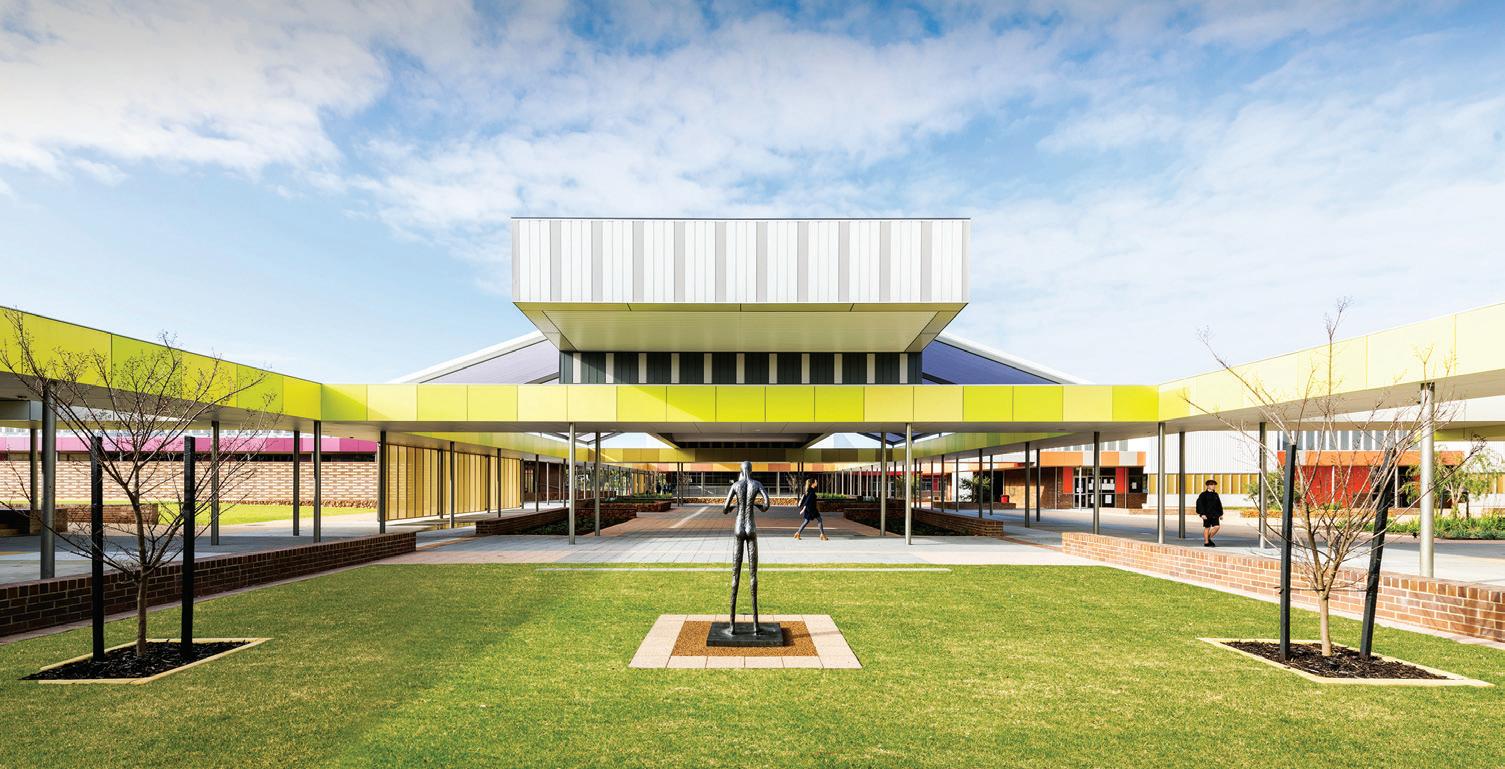
with people who are smarter than I am – rather than trying to be the expert.”
Masterplanning and urban design have always been special interests. Although they didn’t win the competition, the Perth Foreshore Project helped garner the practice a reputation for visionary planning. Their scheme was published nationally. “We didn’t really look at the foreshore,” reflects Warn. “We redesigned the city where the foreshore was just a front yard. Many of those propositions — such as bringing the city down to the water and putting in significant government and commercial buildings — have now been picked up, not deliberately, but coincidentally, and implemented.”
The Government Architect office, he feels, is “a bit underappreciated in the sense that it is over-reliant on the Premier or higher level support. That would be the same in all states, but it is still a shame because it can be very helpful to government”.
Warn points out that it is a whole-of-government position and that they have “made some excellent inroads in other areas that are involved in the built environment: transport, rail, water management, as well as planning and architecture”. But he feels there is a lot more the office could do if it was not “pushed and pulled around by different departmental heads”.
Ever the learner, Warn has through his experience as Government Architect learned that it is easier to criticise government when you are not part of it. “I have a lot of respect for government and people who work in government,” he reflects. “But the checks and balances are very hard to understand if you are outside government.”
This leads Warn to reflect on one of his favourite quotes, from boxing champion Mike Tyson: “Everyone’s got a plan until they get hit.”
Postcript. Since Indesign spoke to Geoff Warn in late 2019 he has now completed his seven-year term as Western Australian Government Architect.
withstudio.com.au
INDESIGNLIVE.COM IN FAMOUS 76
Page 75: Christ Church Grammar Preparatory School, photo: Ed Janes
Above: Christ Church Grammar School Refectory, photo: Acorn Photo. Above: Byford Secondary College Stage 2, photo: DMAX Photography.
The Good Client
Words Stephen Crafti
If you engage an architect or an interior designer, you choose them for their specific skills and obviously their talent! However, being a ‘good client’ is more difficult to define. Recently I spoke with an architect who said if you had one or two great clients in your entire career, you should be thankful. What does it mean to be a ‘good client’?
I have spent the past year renovating my own house with architect Robert Simeoni. It received two named awards from the Australian Institute of Architects (Victorian Chapter). Many have congratulated me on this achievement, often with the comment, ‘but you were a good client!’.
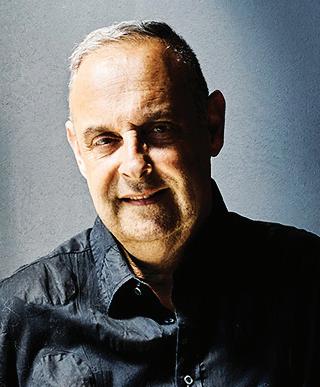
When I reflect on this comment, my answer is: ‘Yes, I was a good client, but why shouldn’t I be!’ I chose Simeoni for several reasons, after following his work for almost 20 years. He produces magical designs that create a feeling, rather than the ‘look’ of the moment. I have also been impressed with his level of service. Faultless. But it was also his personality that led me to engage him in the first instance. He is calm, thoughtful, patient, perceptive and equipped with good communication skills. And he understood my anxieties. Let’s face it: renovating a house can take three years, from the initial discussions to planning to achieving the finished result. To say there weren’t any hiccups in the process would not be entirely correct, but when you’re working with a 1935 duplex, there are bound to be some hidden problems, even if these were relatively minor.
I don’t feel as though I was an exceptional client. I was relatively demanding, wanting answers quickly. I also had a habit of sending lists to Simeoni so that any items that required attention were in his head rather than in mine. However, I think one of the features of a ‘good client’ includes the ability to discuss ideas not finishes. Details are really just that: details. Of course, details
and finishes shape a project. But it’s having knowledge and an open mind and an ability to look at things from the other’s perspective that elevated our discussions several notches. He taught me that windows don’t have to be full-height or have clear glass in order to engage with a view. He taught me about the subtlety of light and allowing for unique perspectives, often unexpectedly. I was intrigued by the process and not just focused on the end result. And the more advanced the project became, the more I ‘trusted’ the process. I would simply say to Simeoni, “It’s your call” and I found the greater the level of trust the more sublime the outcome.
I did not set out to build an award-winning home. It was the last thing on my mind. I wanted a place that captured the way I live. There are two large walk-in wardrobes that reflect a love for designer clothing. In comparison, the brief for the kitchen was for a ‘nonkitchen’, more of a gallery space that would allow me to display art and objects. My distinctive taste is black and moody, but certainly others in Melbourne share this aesthetic!
I think it’s a shame when people don’t make the most of the opportunity to work with an architect or a designer. Simeoni has received numerous accolades in his illustrious career. He and his highly competent team know exactly what needs to be done. So why wouldn’t we make the most of this opportunity to embrace the journey and see where it takes us? It’s been highly rewarding, exciting and the end result is a home that is perfectly customised for us. It’s not everyone’s taste and nor should it be. But was I a good client?
The more important question is: ‘Do we have a good architect/client relationship?’ The result will speak for itself if you allow your architect to do what they are trained to do, and continue to share conversations that go well beyond a few tear sheets from a magazine!
INDESIGN 77 IN FAMOUS
Stephen Crafti is a prominent Australian architecture and design writer.
Shape Shifters
Words Mandi Keighran Portrait Photography Anne Claire de Breij

Together, the Italian words forma and fantasma can be roughly translated as “ghost shape”. It was this idea of something ephemeral and shifting, a form or idea that seems to take on new meaning and shape every time you catch a glimpse of it, that Eindhoven-based design duo Formafantasma wanted to capture when they named their studio. “Our practice is not based on formal investigation,” says Simone Farresin, who co-founded Formafantasma with his partner Andrea Trimarchi in 2009. “The form can change and be subjective to different developments according to process, and is something that can change over time.”
In keeping with this idea, the pair’s work is a dance between highly experimental research projects that delve into the history of human creation and our relationship with materials, as well as thoughtful investigations and collections for high-profile clients. Although these client projects are inherently more commercial than the studio’s self-initiated projects, they are still driven by the duo’s interest in the history of human interactions with the world, both material and social. In each case, the research, conversations and ideas developed are as much a part of the project as any resulting physical object.
In 2012, they produced Craftica, a body of work for Fendi that formed a visual and tactile investigation into leather and other natural materials that responded to the fashion house’s long history of hand-crafting leather accessories; in 2016, they developed a series
of site-specific installations for Lexus that were shown at Salone del Mobile di Milano and responded to both the location in a former metal factory and the new Lexus LF-FC flagship concept.
The studio’s first industrially produced objects were created in 2017: two lights for Flos that elegantly elevate the functional object of a lamp to a poetic investigation into the essence of light and the emotional impact it can have.
“Through our experimental works and involvement in education, we have the chance to make our more radical ideas blossom,” says Farresin. “On the other side, we have to develop a more commercial practice, so that one can feed the other.”
It’s a dynamic that can arguably be traced back to the pair’s origins. Farresin is from the northeast of Italy, where industrial production is common, while Trimarchi is Sicilian. “In Sicily, design is not really about industrial design, but about an object itself,” says Farresin. “So, Andrea is much more connected to vernacular objects.”
The pair met as undergraduates at design school in Florence, both attracted by the city that had spawned a radical, experimental approach to design in the seventies. “We began a relationship in Florence, living and travelling together,” says Farresin. “We realised that we had a passion for discussing life through objects and so it was natural to move forward and embark on our masters program at Design Academy Eindhoven together.”
INDESIGN 79 IN FAMOUS
Italian design duo Formafantasma have been challenging notions of what design can be for over a decade.
Page 80: Left to right, Aurea, 2016 Bronze, made by Fonderia Artistica Battaglia, Milan, courtesy Galleria Giustini Stagetti, Rome; Colore Test 3 , 2016, LED, dichroic glasses, concrete, electrical materials, rubber, pencil, courtesy Formafantasma, photo: Johanna Seelmann. Page 81: Screen, materials and techniques: iridescent car paint on CNC milled and folded aluminum and stainless steel, steel microwave shell, LED lightings, digital prints on aluminum, gold leaf on calf leather; Low Chair, metalized car paint on CNC milled aluminium, gold plated aluminum, various components of a mobile phone, photo: Ikon.
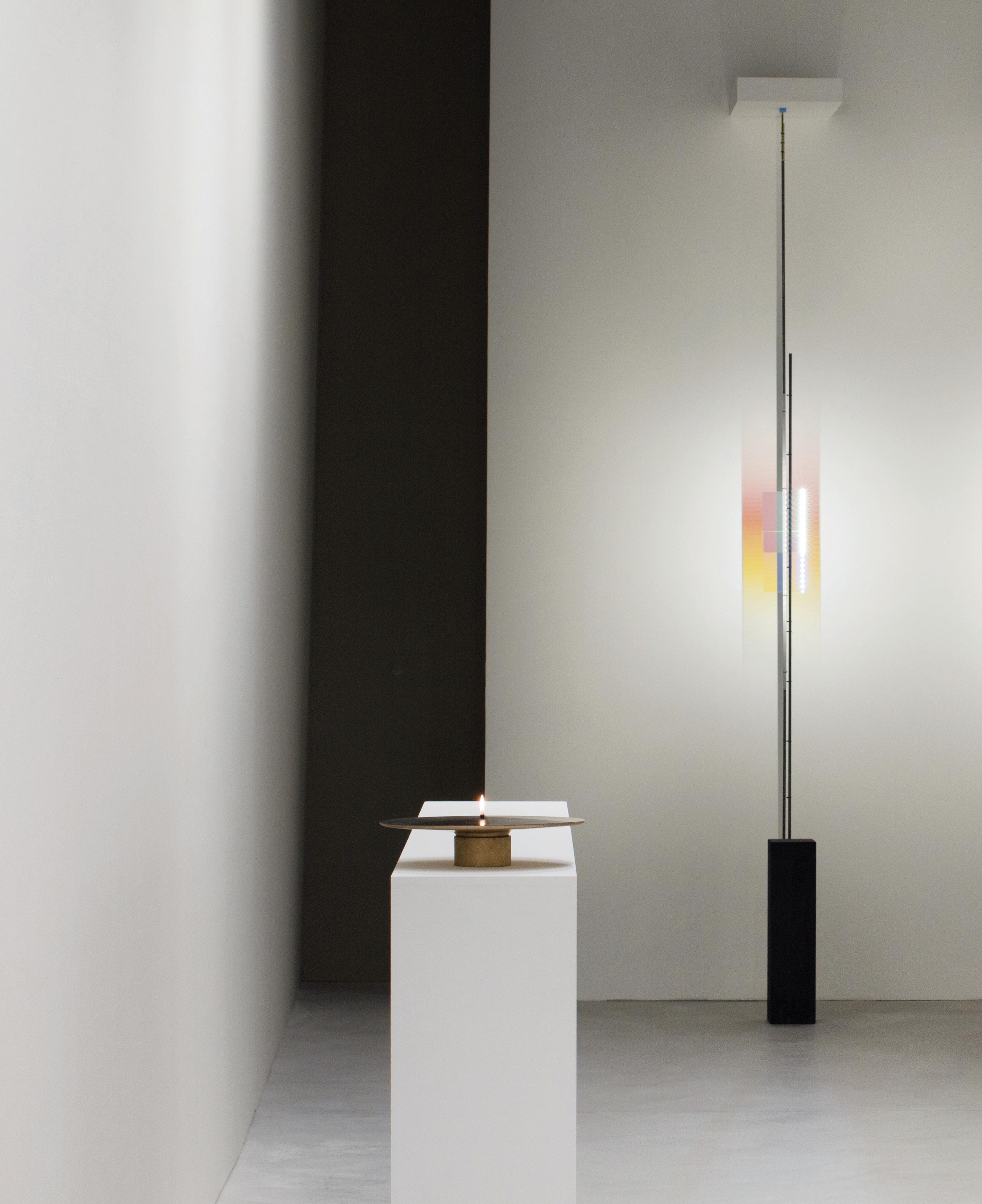
“Whenever we judge a body of work, we don’t look at it for what it is in the moment it is submitted, but for its potential.”
INDESIGNLIVE.COM IN FAMOUS 80
Simone Farresin, Formafantasma


INDESIGNLIVE.COM IN FAMOUS 82
Above: Left to right, Colore Test 3 and 7 2016, LED, dichroic glasses, concrete, electrical materials, rubber, pencil, courtesy Formafantasma; Colore – Test 1, 2016, LED, dichroic glasses, concrete, electrical materials, rubber, courtesy Formafantasma; Eclisse, 2016, Delta collection, LED, brass, travertine, courtesy Galleria Giustini Stagetti, Rome; Lenti Biconvesse – Test 2 and 3, 2016, LED, iron, concrete, polycarbonate lens, electrical materials, rubber, pencil, courtesy Formafantasma, photo: Masiar Pasquali. Opposite: Ellipse, 2017, brass, textile, electrical materials, courtesy TextielMuseum/TextielLab, Tilburg, photo: Masiar Pasquali
At Eindhoven, the pair’s interest in a critical design approach was encouraged. “It gave us the right questions so that we could understand who we were, but that critical approach was already a part of our own DNA,” says Farresin. “We weren’t necessarily interested in producing objects or design as a self-expressive tool, but more in using design as a critical tool to question the way humans produce things and to question what design can do and what its limitations are.”
Following their graduation, a period of intense experimentation followed. They became known for their intriguing materialsfocused research projects, often in partnership with established galleries championing new voices in design, including Rossana Orlandi Gallery, Gallery Libby Sellers and Dilmos Gallery.
Autarchy, shown at Rossana Orlandi Gallery in 2010, was an early success, with a series of vessels crafted from 70 per cent flour, 20 per cent agricultural waste and 10 per cent natural limestone, which captured the imagination of the design world. The collection presented a timely hypothetical scenario in which a community embraces a self-imposed embargo on plastics and instead uses biomaterials to create objects. This intelligent, inquisitive exploration into new approaches towards sustainable thinking can be found in much of the studio’s work and has been expanded on as the studio has developed.
“When we started, we were experimenting with materials in relationship to their historical connotations and so on,” says Farresin. “We realised over time that we were interested in
looking at design from a more holistic perspective. We want to look at everything that design has, for a long time, overlooked: the conditions of labour, material sourcing and distribution, and the impact that this process has on the environment.”
Their next major exhibition — Cambio, held at Serpentine Gallery in London from 4 March to 22 May — engages with these issues in depth, exploring the structure of the timber industry from a critical perspective. This process will involve input from a diversity of contributors, from philosophers and scientists to producers, which will take the conversation about design from the object to the infrastructure that supports its production.
“We’re interested in ecology rather than sustainability,” says Farresin. “This means questioning completely the world view that humans have on the planet, and the fact that design cannot be only about fulfilling the needs of humans, but [must also] consider the needs of the ecosystem at large. The understanding of ecology is what will help us survive on planet Earth.”
This year, Formafantasma are jury members for the INDE. Awards – and will be turning their critical approach to the work of other designers. “Whenever we judge a body of work, we don’t look at it for what it is in the moment it is submitted, but for its potential,” says Farresin. “We try to understand the space that it might have to expand and challenge what design can be.”
formafantasma.com
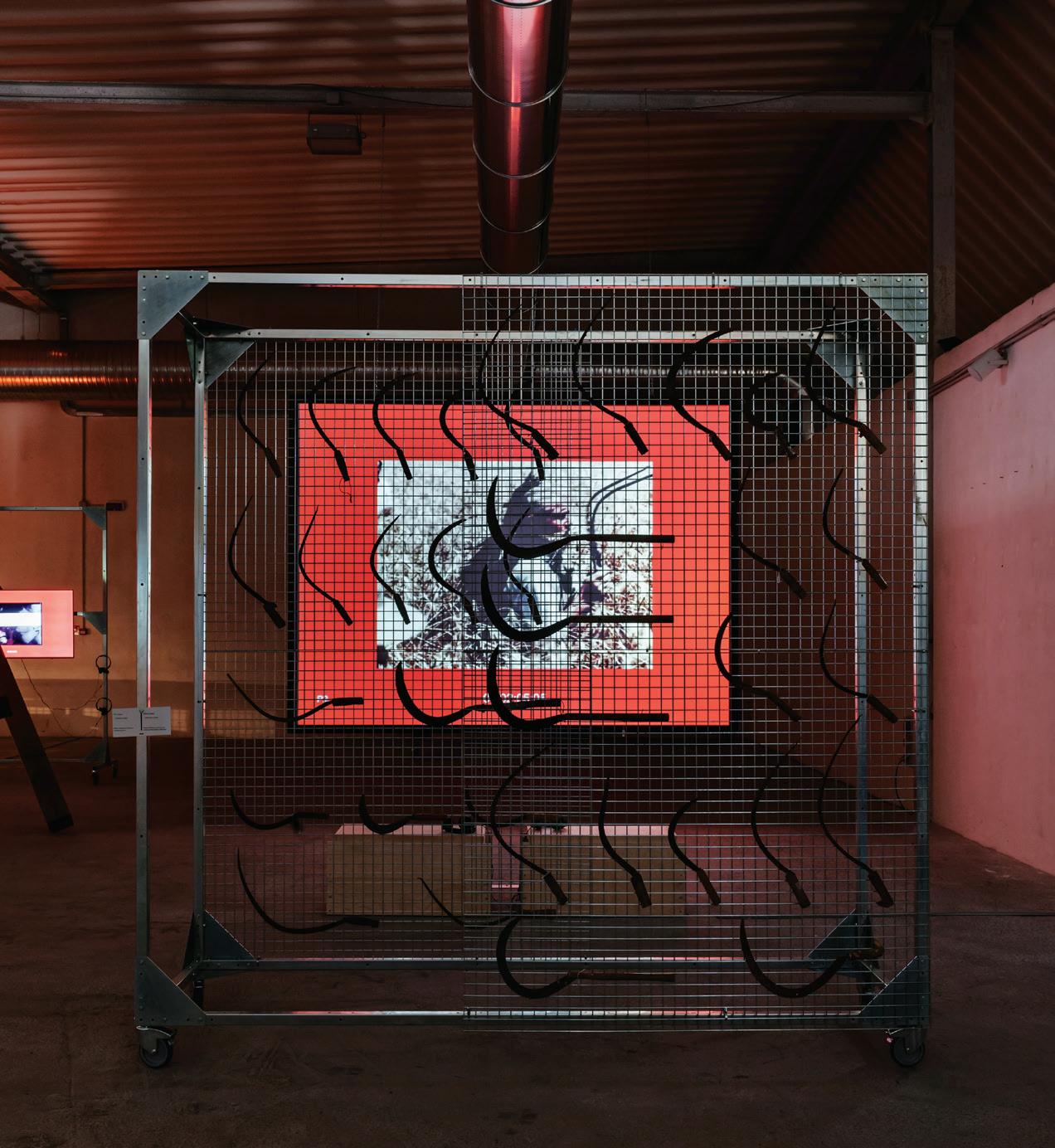
INDESIGN 83 IN FAMOUS

Change Making
What’s in a name? Well quite a lot actually and these days much can be said about a company by its brand that should encapsulate style, depth and intention of a business. For James Richardson Furniture established in Melbourne in 1956 change has been in the air with the arrival of Georgia Danos who joined as creative and brand director and just happens to be the granddaughter of the founder, David Mandie AM OBE. Danos’ pedigree is of course impeccable however she is also a very savvy business woman in her own right and perhaps, most importantly, she has an enduring passion for design having studied architecture at university. Through her vision, Danos is propelling James Richardson Furniture into the new decade with record speed and the future looks very bright indeed.
The seeds to change were sewn through a chance meeting with Australian product designer par excellence Ross Didier. Consequently Didier was invited to design a range of furniture for the company and with the RD Collection on the oor Danos saw the opportunity to make more far reaching changes within the business.
The rst step was collaboration with Ronnen Goren, co-founder and director of renowned branding agency Studio Ongarato to help re-position and re-brand the company. Ever present throughout the design process was an understanding of the proud history of James Richardson Furniture and the importance of such traits as honour, integrity and trust. A er all founder David Mandie began a business relationship with Ton in the Czech Republic that boasts the oldest Michael Thonet factory in the world, with just a handshake.
Goren commented on the approach to the rebrand, “Taking on a company with pedigree and history we could have easily said ‘let’s just wipe the slate clean’ but there is way too much imbedded in this company, the brand and the business and the importance of relationship. Ton’s relationship with the business is so far reaching; the idea of a handshake and that close proximity and a trusted partner.”
The re-branding process began with a detailed investigation of James Richardson Furniture to understand the DNA of the company, the people, the clients and the products. Goren developed a brand structure with three concepts that included, strategy, deeper communication and brand ampli cation and identity.
Next was the logo and name. This new logo was required to incorporate heritage, establishment and cra smanship but to also present a fresh style for a new future, and so JR1956F was born. By incorporating an old font that had been re-cut to suit for letters, a modern font for numbers and the whole embossed and bevilled to give texture and tactility the new logo says it all. As for the name, well James Richardson Furniture has now become JRF and as they say the rest is history….
Danos commented, “We came up with this notion of dynamic heritage that I really loved with that sense of history and foundation which is what is so critical to me from the past and it was just bringing this new brand into a dynamic new light.”
With the advent of 2020, a new year and decade, JRF is building on stable foundations and creating a place for itself within the architecture and design community.
There are plans afoot for more design collaborations and relationships, a further curation of products and myriad unique events that together create a singular vision for success and ensure JRF’s place within the community.
Danos described the process of the re-brand, “It’s a shi from being a sales and product business to a solutions provider. A much more relationship focused business, a much more design-orientated business….. This was all about a change for the long haul. I was all about nding something that could take us into the next chapter that had longevity and was classic and beautiful…and we have de nitely achieved that.”
Yes JRF you certainly have!
JRF.COM.AU 85 INDESIGN JAMES RICHARDSON FURNITURE
Words Jan Henderson Photography courtesy of Studio Ongarato

PROVOCATIVE, INNOVATIVE & INSPIRING DESIGN
INDESIGN 87 IN SITU SITU IN
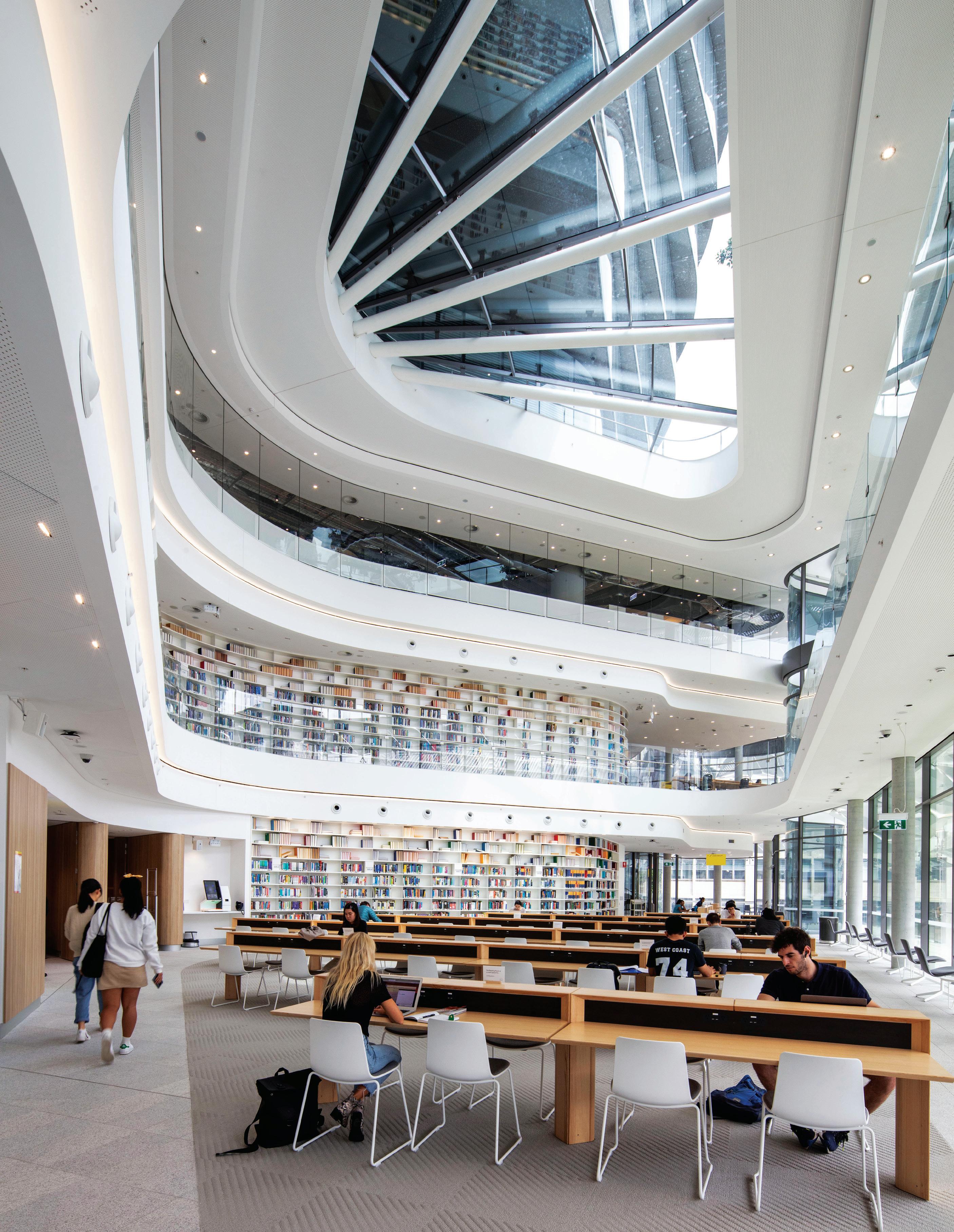
Reinventing The Campus
University of Technology Sydney (UTS) Central by fjmtstudio
Original Broadway Podium design by Lacoste + Stevenson with DJRD Words Paul McGillick Photography Various
Like RMIT in Melbourne, the University of Technology Sydney (UTS) is an urban campus. But when it was founded in 1988, it was more of a suburban campus, as the city edge essentially ended at Central Station.
What is interesting about UTS today is that it not only responds to the recent urbanisation of Sydney CBD’s south-western edge, but has become an increasingly important driver of local urban regeneration as light industrial and commercial sites have transformed into a vibrant mix of high-rise residential, retail and hospitality accompanied by the re-invention of the streetscape. The UTS building and landscaping programme, in conjunction with a policy to maintain a high level of porosity both visual and through welcoming public access, is playing a major role in the transformation of the Ultimo precinct.
Green space is still in short supply, but that was partly remedied in 2014 when UTS’s Alumni Green opened, an extended 1,200 square metre landscaped green square which separated Buildings 1 and 2 (facing Broadway) from the Faculty of Science and Graduate School of Health Building.
The original plan was to add floors on top of Building 2, but it became clear that here was an opportunity to re-imagine the entire precinct by starting afresh. The new building, UTS
Central, designed by fjmtstudio, the original podium design by Lacoste + Stevenson with DJRD, is seamlessly connected to architect Michael Dysart’s imposing 1969 ‘brutalist’ Building 1. In fact, for fjmt Design Director Richard Francis-Jones, it is now much easier to appreciate the Dysart building. While both buildings share a modernist aesthetic, the lightweight, curvilinear and transparent quality of the new building helps Building 1 to be “less dominant and more balanced”.
fjmt conceptualised the new building around the relationship between the ‘campus grid’ (Alumni Green) and the ‘city grid’ (Broadway) aiming to generate as much connection as possible. As project lead James Perry puts it: “This building has to sit in a campus and in a city. How do you do that?”
So, they “tore the podium (extending up to Level 7) apart and took the tower all the way down to the ground”. To connect the two grids they rotated the tower with each floor stepping back to ensure that the building does not compromise access to sunlight for the Green Square apartments on the southern side of Broadway.
Building 1 is a heavy, rectilinear, concrete brutalist building; fjmt set out to do exactly the opposite with Building 2 – something very curvilinear, very white. A closed-cavity glass façade system enabled them to have performance glass on the inside and clear
INDESIGN 89 IN SITU
At UTS Central, added value from great design takes on new meaning, making the campus once again an essential daily experience.
glass on the outside with automated white blinds in between. This activates the building from Broadway where passers-by can clearly see activities in the broad perimeter student areas, which form an edge to the main teaching spaces.
On the northern side of the building is the library and triple-height reading room, championed by the Vice-Chancellor Professor Attila Brungs, who wanted a “contemporary reading room”, a very quiet collegiate space.

The library spaces epitomise the strategy of drawing natural light deep into the building in order to optimise the sense of connection to the outside. This is achieved by the use of glass-cavity walls, skylights and three double-helix transparent spiral staircases. The staircase that connects the library and the reading room is half inside the building and half outside; it acts, says Perry, like “an inverted skylight”. From here people inside can look down on Jones Street and Broadway, while those outside the building can look up into it. Basically, it de-materialises the corner of the two streets.
“We wanted to make it a sculptural element,” says Perry, “because it is so visible from the street. In fact, from the street you can’t
see that it is a staircase; you can’t see the treads or the handrail. The balustrading is solid all the way up, so you can’t see where the landings are. But you can see people moving up and down.”
Both inside and outside, UTS Central is imbued with a curvilinear or organic aesthetic. Inside, the building is constantly unfolding and revealing new spaces, all clad in American Oak laminate to combine warmth and robustness. This supports a programme that provides a rich diversity of spaces for students to meet, study in small groups or work alone. Circulation is pushed to the perimeter, lifts are positioned to encourage people to use the escalators and east-west connection between the two buildings and north-south between the Broadway and Alumni Green sides of the building is sustained by through views – although the views are never completely direct. Rather they are somewhat circumlocutory, creating the impression that moving through the building is a constant voyage of discovery.
Surely, this is a kind of phenomenology of learning: a constantly stimulating learning space that both reflects and embodies the nature of learning as discovery.
INDESIGNLIVE.COM 90 IN SITU
“Surely this is a kind of phenomenology of learning: a constantly stimulating learning space that both relfects and embodies the nature of learing as discovery.”
Changing The Game
TILT is one of the great recent success stories of Australian industrial design –although Managing Director, Tim Phillips, describes it as “operable architecture” because it blurs the lines between the two. It is, he says, “half industrial design and half engineering”. The company first made an impact with its heliostats, which have automated louvres that track sun and direct light into shaded areas throughout the day. But its core business – which now has a significant international profile with projects in the U.S. and China – is customdesigned operable louvres and skylights. UTS Central has 108 louvres (64 operable) that manage sunlight entering the north-facing library and reading room. Their leaf-like character is consistent with fjmtstudio’s overall aesthetic for the building, but otherwise TILT designed, manufactured and installed the louvres. The design, manufacture and install approach is a unique business model in the building sector. It is, says Phillips, about managing risk, managing cost and developing relationships with builders. In the fraught business of building it “gives architects a licence to be creative”.
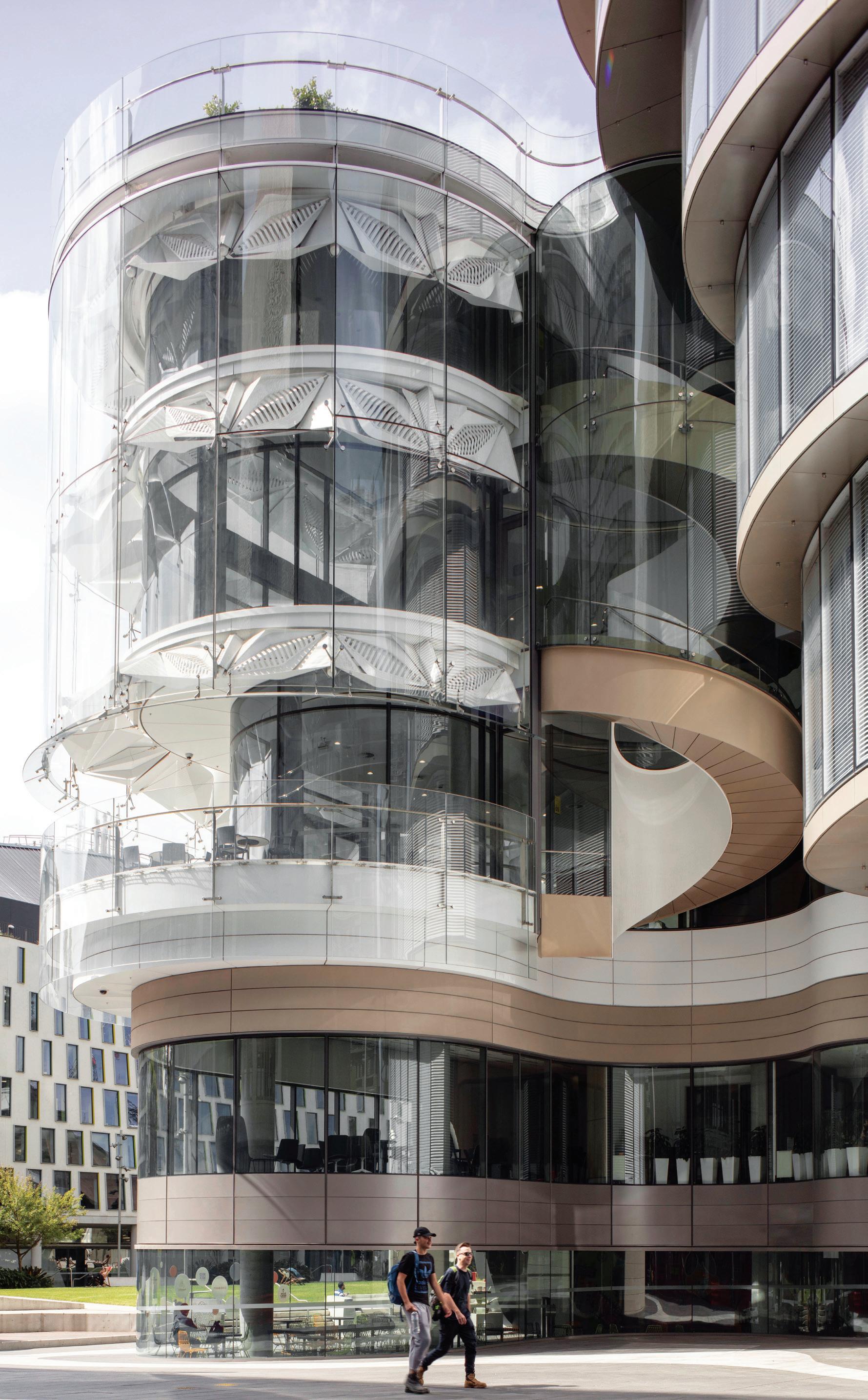
INDESIGN 91 IN SITU
–
Photo: John Gollings.
Round And Round
The beautiful sculptural staircase connects the library and the reading room and becomes a spectacular focal point within the building.

–
Photography John Gollings.

Indeed, UTS Central is at the cutting edge of tertiary education. It is a vertical campus, but one that reconciles both the vertical and horizontal spatial experiences. While it offers a variety of small-scale learning spaces, it also offers large-scale learning environments such as the collaborative classrooms on the southern side. One, on Level 5, accommodates 350 people. Driven by Deputy Vice-Chancellor, Professor Shirley Alexander, they aim to thoroughly change the way teaching works by offering a diversity of learning and instructional experiences. The idea is to make realtime teaching and learning attractive again, and lessen dependence on isolated online information-gathering.

The jewel of UTS Central is the library and reading room, three double- and triple-height volumes directly connected over three levels by a double-helix spiral staircase. These light-filled spaces, with their custom-designed furnishings in American Ash and green terraces, are oases of reflective calm while remaining fully connected visually to the outside by the cavity glass façade and
skylights. They continue the aesthetic of flowing, curvilinear walls – even the stacks meander in a reminder that “books do furnish a room”.
Facing north, the sun was a potential problem – although it also offered the opportunity for a wintergarden. TILT’s mix of fixed and automated metal louvres (see page 91) with leaf patterning provides the solution. It brings with it a decorative element, visually enhancing the louvres whether seen from inside or outside and supporting the overall organic aesthetic of the building.
UTS Central offers a unique educational experience. It is an urban campus, but without the forbidding industrial aesthetic we usually associate with this model. Instead we have a humanised and stimulating physical environment coupled with best pedagogical practice. fjmtstudio.com
INDESIGNLIVE.COM 94 IN SITU
Page 88: The library in the triple-height reading room becomes the ultimate place to study and reflect, photo: John Gollings. Page 90: Collaborative learning is enhanced through superior interior design that offers both comfort and amenity, photo: Nicole England. Above: Internal view of the UTS campus that reconciles both the vertical and horizontal spatial experience, photo: Rodrigo Vargas.





















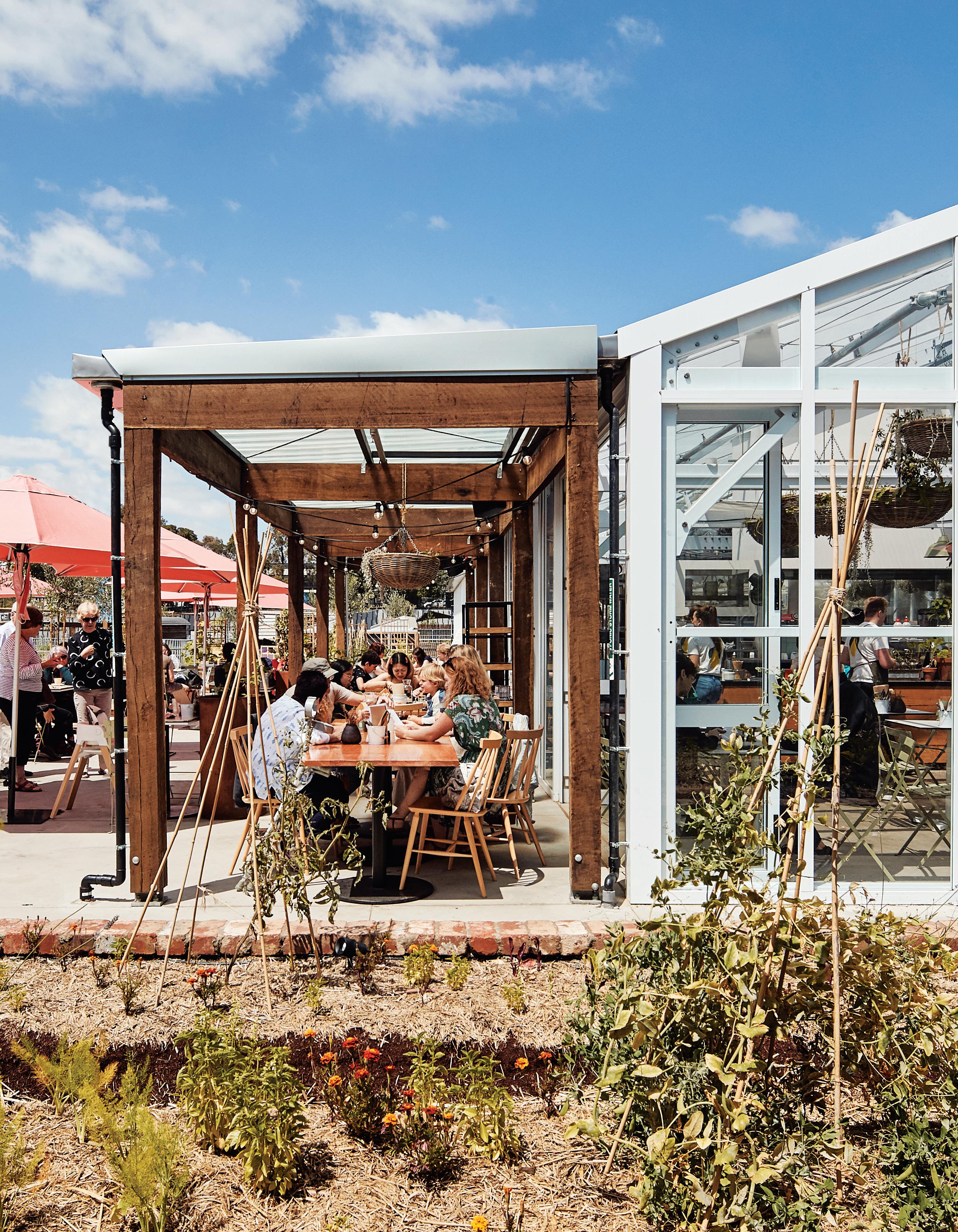
Regenerative Retail
Words Tess Ritchie Photography Various
Retail centres don’t typically come to mind when we talk about sustainability. But the new mixed-use development in Melbourne’s Burwood East could be changing that. Burwood Brickworks is on its way to being the most sustainable retail centre in the world: selfsufficient, not exceeding the resources of its location, and containing socially equitable, culturally rich and ecologically restorative spaces that connect people to light, air, food and community.
These measures come from the Living Building Challenge™ (LBC™), the most advanced measure of sustainability in the built environment and the framework Frasers Property applied to the centre. It requires a building to produce 105% of its operational energy, dedicate 20% of the site to agricultural use, and have a net-zero carbon footprint. It also calls for social sustainability, creating an environment that optimises the health and happiness of those who use it.
For developers known for their progressive approach to sustainability, it’s an appealing challenge. As Frasers Property Executive General Manager of Retail, Peri Macdonald, says: “It challenges a building to be regenerative, not just a lesser version of bad.” But for their vision for the centre to be the heart of the community, the logic – ethical, social, economic – is all there too. It just meant abandoning all conventional thinking. “The project team set out to break the paradigm of traditional retail centres and make Burwood Brickworks not only engaging, but educational, uplifting and healthy, and most of all, make a difference to people’s lives,” says Roger Nelson, Managing Director of NH Architecture.
Every aspect was driven by sustainability. Spaces increasing quality of experience have primacy of place; the roof area (which shopping centres are usually poor at utilising) is an urban farm and
INDESIGN 97 IN SITU
Burwood Brickworks, master planning, concept and architecture by NH Architecture, interiors by Russell & George in collaboration with NH Architecture, ceiling mural and façade artwork by Mandy Nicholson, development by Frasers Property Australia
In a new era of climate consciousness, what does it mean to be sustainable? Burwood Brickworks puts forward a proposal for development and design that gives more than it takes, environmentally and socially.
Opposite: The roof area of Burwood Brickworks is utilised as an urban farm and eatery that helps to connect people to the environment and their food, photo: Peter Bennetts. Page 100: Suspended above the travelator is an installation of re-used ply that creates an immersive experience for the visitor, photo: Peter Bennetts. Page 101: Twenty per cent of the site has been utilised for agricultural use, photo: Griffin Simm. Page 102: The exterior of Burwood Brickworks includes a dazzling arrangement of potted trees on a portion of the facade, photo: Griffin Simm.
Ceiling Splendour
The striking interior of Burwood Brickworks features panels of recycled timber and a stunning black and white ceiling mural created by Mandy Nicholson that speaks of Country and adds a unique element to the design of the centre.

–
Photography Griffin Simm.

eatery, connecting people to fresh air and food; tenants overhauled business models to comply; salvaged materials are abundant; all water runoff is captured, treated and recycled – among many more initiatives. “Usually the aim is to minimise negative environmental impact. In this case it was maximising regenerative and positive sustainable potential,” says Nelson.
In terms of architecture and design, NH Architecture took a pared back approach, stripping away old ideas and applying great care to each element with the aim of maximising design impact and sustainable output potential. Compressed on a smaller footprint, the overall design is honest: open, generous spaces, dramatic roofscapes, and a presence that feels unique – bold yet familiar. Details such as incorporating bricks from the former brickworks site into concrete on the western façade play a role in this.
Hitting both environmental and social notes is the strong connection between outside and inside. “It’s easy to lose touch with the physical and natural environment when you are in a shopping centre. Our work seeks to bring this back,” says Nelson. Designed around a green square, it utilises four frontages (where typically there’s a front and back), inviting people in at every aspect. Ventilated windows and skylights flood all spaces with fresh air and light; a feature staircase provides views out and in; on the eastern frontage the building projects in and out, creating promontories and a promenade that bring the landscape in.
Interiors also make a significant contribution to the sustainability agenda. “Not just environmental sustainability,
dealing with materiality and embodied energy,” says Director of Russell & George, Byron George, “but social and cultural sustainability.” Open, light and full of plants, the interiors also have warmth and textuality, designed along the lines of place and stimulating the senses.

There are large panels of recycled timber and a black-andwhite mural commissioned by Indigenous design studio Balarinji and created by Wurundjeri, Dja Dja Wurrung and Ngurai Illum Wurrung artist Mandy Nicholson that speaks of Country. Entrances are designed as sensory portals, with fragrances and sounds encouraging “a suspense of disbelief” and connection, while a travelator adorned with suspended pieces of re-used ply, scent and dampened acoustic creates an immersive experience within a cathedral of timber.
Such unique elements are not usual for retail, but connecting people to place and giving them something to remember is key to Burwood Brickworks’ success. It offers a different way of imagining public spaces. As George says, “This centre is designed to be the heart of the community, and that means capturing the hearts and minds of people who live here.”
Overall, the space is “transformative” and people like being in it. It’s open, healthy and culturally enriching, and with various regenerative sustainability initiatives, gives back to the environment. Being good enough has been surpassed.
nharchitecture.net, russellandgeorge.com
INDESIGNLIVE.COM 100 IN SITU
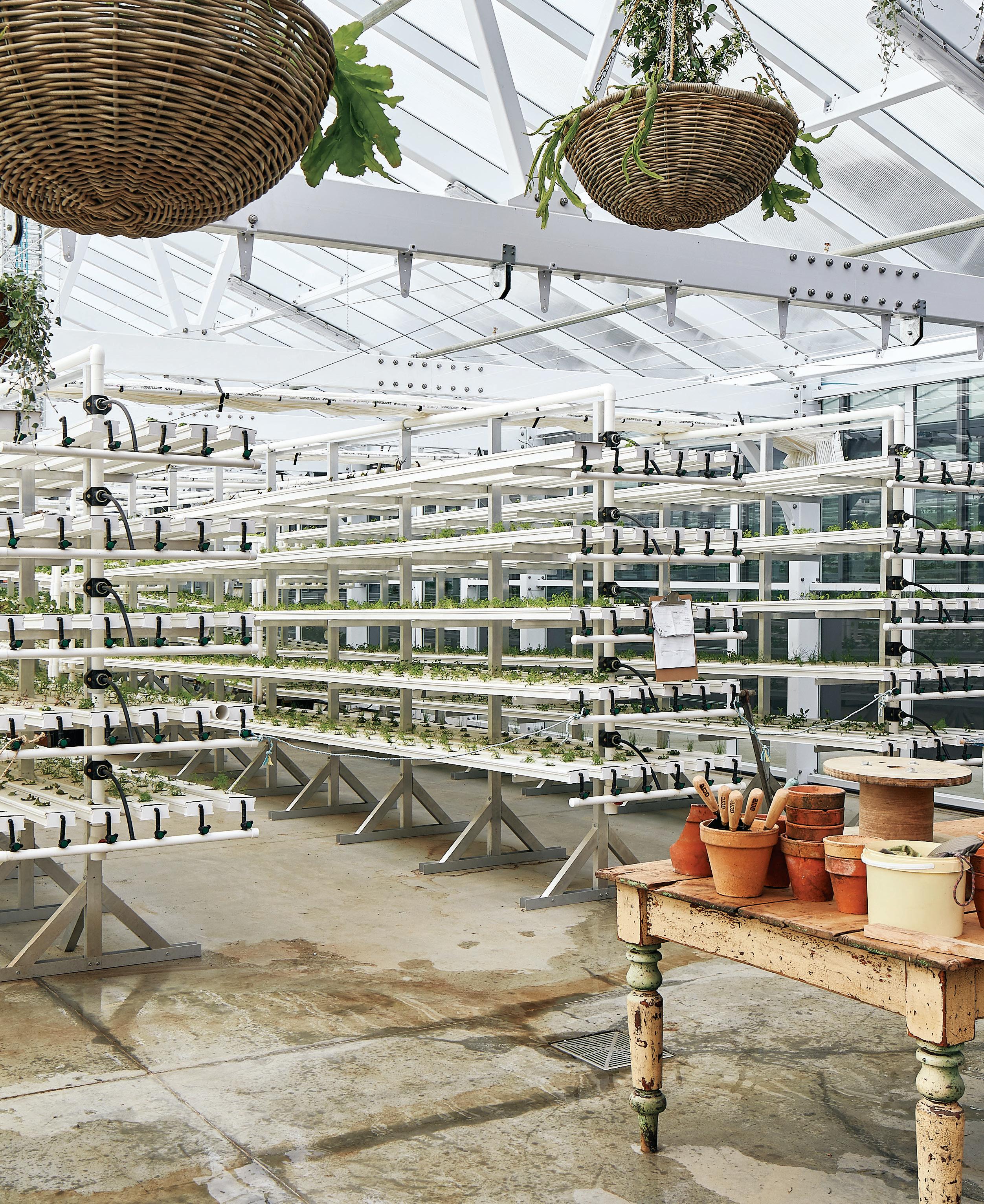
INDESIGN 101 IN SITU
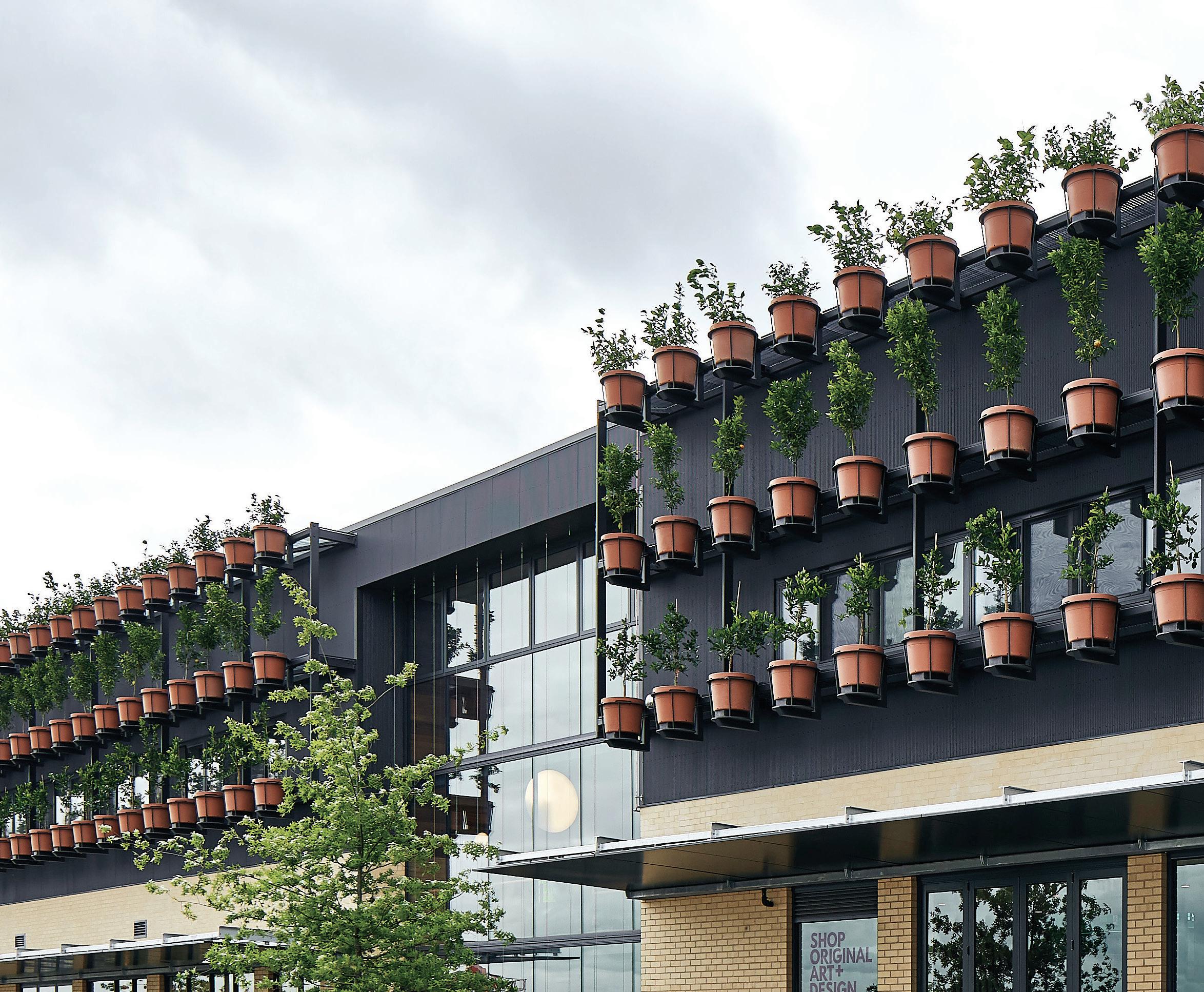
INDESIGNLIVE.COM 102 IN SITU
Hitting both environmental and social notes is the strong connection between outside and inside.
SYDNEY 5/50 Stanley Street
Darlinghurst +61 2 9358 1155
MELBOURNE 11 Stanley Street
Collingwood +61 3 9416 4822
ownworld.com.au/senior-living
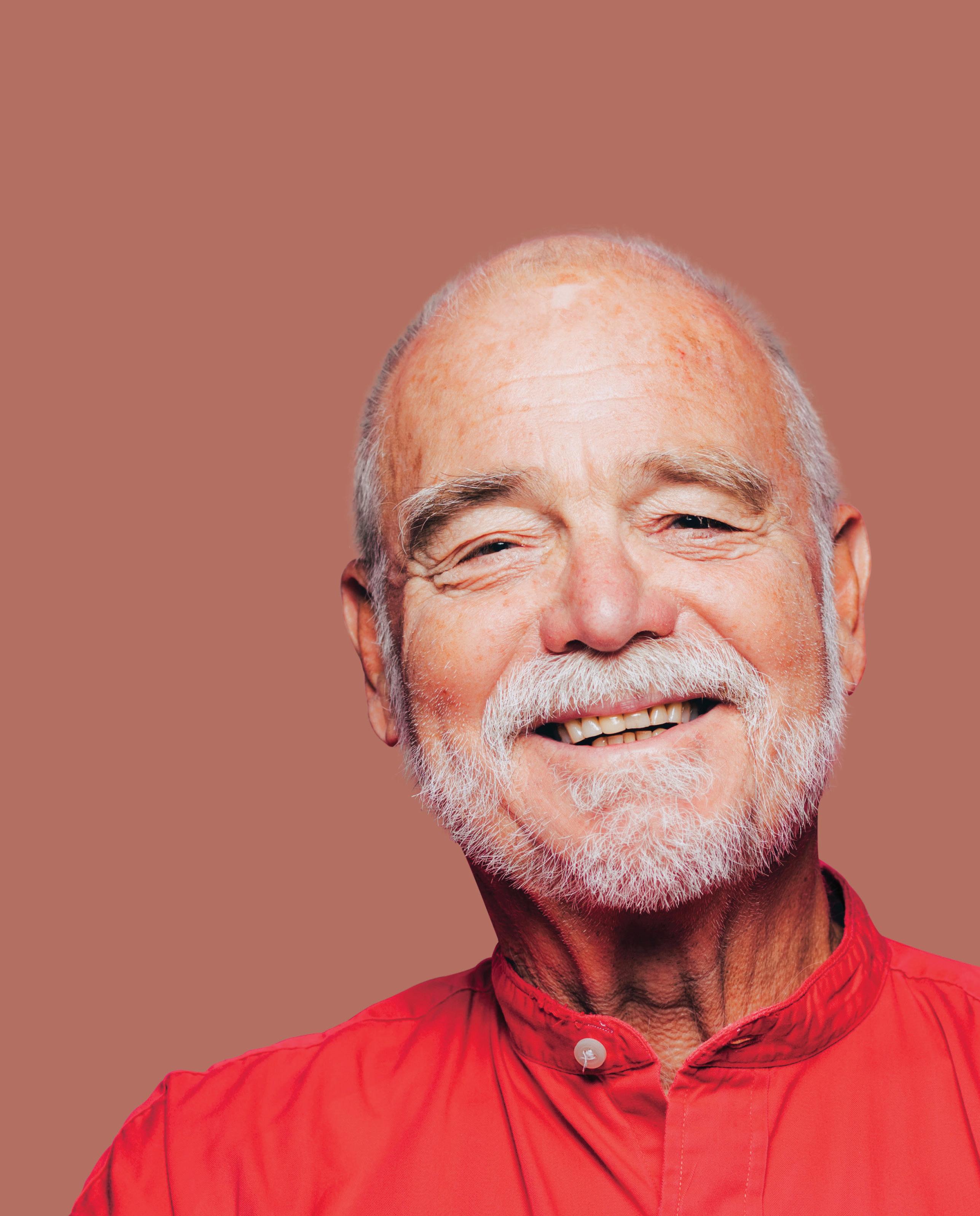
Purposefully fluid to provide for different learning environments, Davenport Campbell’s early learning centre is conceptually focused on nurturing a holistic family experience.
The Birds’ Nest
Informed by current pedagogical tenets, Davenport Campbell worked directly with all key stakeholders on The Nest Childcare Centre to ensure an impactful environment that would support a new typology in learning. Focusing on an inclusive approach that saw the family as intrinsic to better learning, The Centre effectively functions as an extension of the home environment. As such – and in keeping with commercial shifts that have seen the workplace aesthetic and layout become increasingly residential – Davenport Campbell’s response is far more domestic than the current typology, as Emma Davenport, Davenport Campbell Director and project lead explains: “The home is the environment that a small child is most familiar with, so the design brings cues from home into the childcare environment to make them feel safe and comfortable and enhances the whole experience for child and parent.”
Located within Japanese architect Kengo Kuma’s first Australian building, The Exchange, Darling Square (Australia’s first 6 Star Green Star Community), the building itself is wrapped in a breathtaking circular swirl of sustainably sourced timber. Earning a 6 Star Green Star rating, the interior surfaces are of a high sustainability value, with many design decisions informed
to meet this need. Nicknamed ‘The Birds Nest’, the centre caters to ninety children aged six weeks to six years with administrative staff and educators. The two-floor space is the fourth childcare centre Davenport Campbell has designed for The Commonwealth Bank. That said, each centre is a unique and standalone solution that responds directly to the building’s architecture and desired learning environment specific to each operator.
Drawing on the concept of bird eggs, the palette is informed by muted blues, greens and peach in soft rounded shapes, with something of the Memphis movement coming into play as the shapes interact. Moreover, it was imperative that overstimulating primary colours be avoided, with current pedagogy stating that muted colours are better for children.
“The whole idea behind the concept is to create contrast, provide colour, texture and pattern as the important things behind the environment for the children, particularly the babies, who are really picking up on contrast and texture.” says Lisa Munao, Davenport Campbell Head of Workplace Design and Innovation. In painting walls and adding graphics with muted colours, the focus remains on what the children are doing. Contrasts of black-and-white checks
INDESIGNLIVE.COM 104 IN SITU
The Nest Childcare Centre, Darling Exchange, Sydney by Davenport Campbell Words Gillian Serisier Photography Steve Brown


The Balancing Act
“Work and family life is blurred; they’re not two things, they’re integrated or blended with multiple opportunities for quality time.” – Emma Davenport –
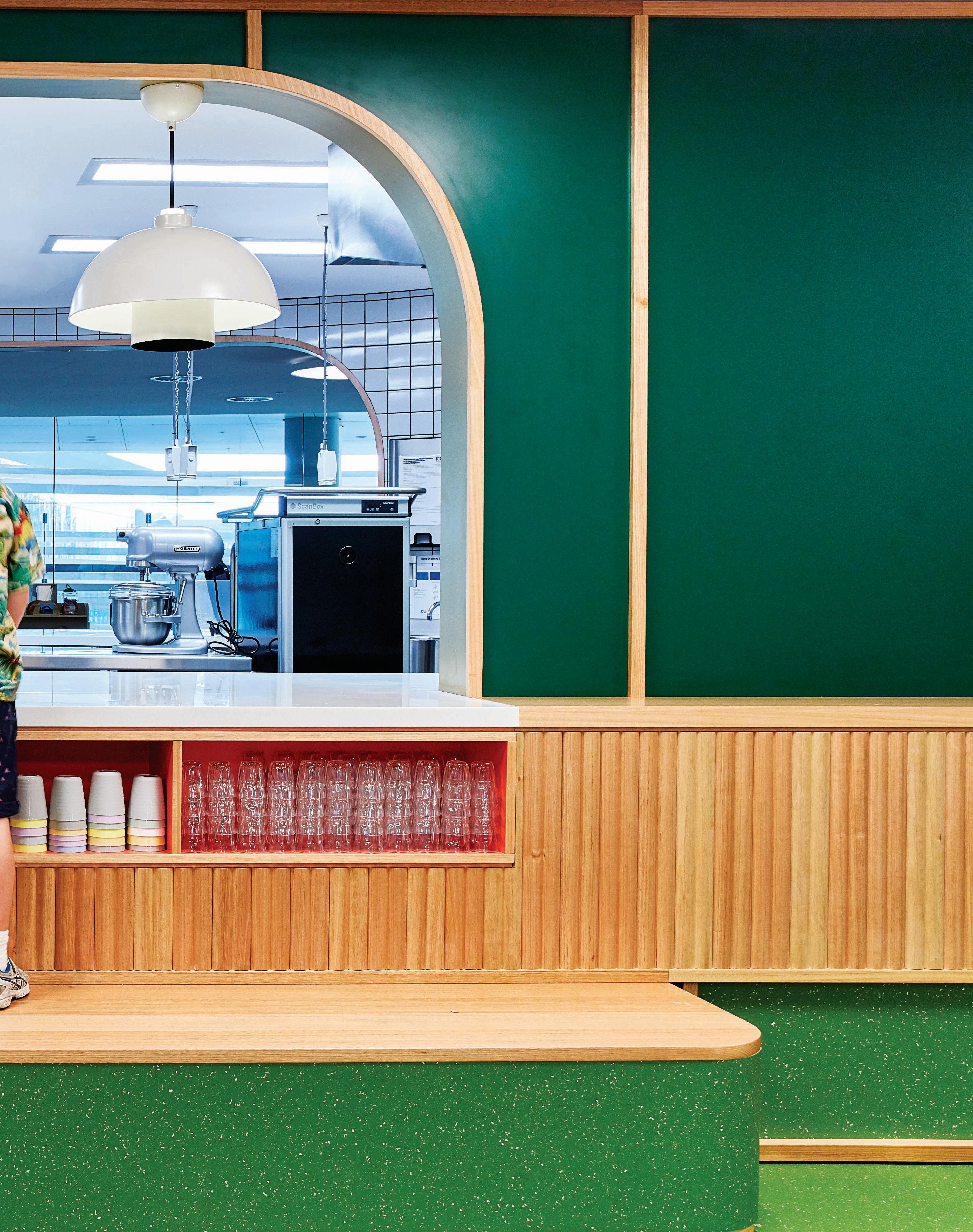
work with curves and colours and lyrical graphics to deliver an appropriately stimulating environment. “It was very important to not be overwhelming, but provide enough little things – images, colours, patterns and so forth – to prompt the children to engage with this extra world beyond the immediate,” says Davenport. Textural elements play a similar role. Importantly, in an environment where clutter is anathema to the calm learning environment, every element must be primarily selected for its ability to answer functional operational requirements.
Working with the architect and developer from inception allowed the best possible outcome in terms of light and security. Approaching the round layout as a clock, each space is a segment appropriate to scale and use. “The radial aspect meant all administration and inner workings happen against the core of the building to open all playrooms to as much natural light as possible,” says Munao.
In surveying the CBD location, it became apparent that in achieving this scenario security was potentially an issue, as many of the surrounding buildings overlook the building. To obfuscate the ingress of view, Davenport Campbell asked Kuma to reorient the building to afford the same optimisation of light while providing heightened security. Additional security measures were also addressed at this early stage, such as fire escapes, dedicated entries and secure technologies that were embedded and enabled. The glass balustrade, for example, is much higher than normal in the playground area to ensure no Tonka truck missiles find their way to the street. The whole project has in fact been engineered to ensure a highly secure environment, with no potential footholds, handholds or climbing risks.
Led by the circularity of the base build, Davenport Campbell has introduced a new childcare approach whereby a central shared

dining space creates an overlap with the home dining space. “The traditional childcare dining experience is changed into a space where lots of different people come together: parents come to spend time with children, and children use it as a learning opportunity where they can participate or watch food being prepared,” says Davenport.
Located on level four, where the older children are cared for, the dining room, while large, is welcoming. Here, the colours are high, with timber panelling, arched servery windows and feature lights conveying a sense of the domestic. Configured to entice movement forward, the space is open on the far side to allow the gaze to travel into the working space and out to the world beyond. More importantly, the role of the room is to provide a shared space for children and parents. Open from 7.30am to 6pm, it effectively gives families an opportunity to spend time together.
“Work and family life is blurred; they’re not two things, they’re integrated or blended with multiple opportunities for quality time. Quality blend time, breakfast, after school – the more time parents get to spend with their kids in this kind of environment the better,” says Davenport.
More of a home away from home than a drop off, the Nest Childcare Centre responds to the fact that the world and how we work has changed. Gender diversity with both parents working is increasingly the norm and this environment nurtures and supports that model. Moreover, the child is at the centre of thinking; their comfort and ease are considered primary to their ability to learn and flourish. davenport-campbell.com.au
INDESIGNLIVE.COM 108 IN SITU

INDESIGN 109 IN SITU
Page 105 – 108: Walls have been painted with muted colours and interacting shapes that deliver contrast and warmth within the interior. Above: Parents can spend time with their children in a welcoming and visually stimulating environment that has been designed with the child at the centre of thinking.
It’s A Wrap
Kengo Kuma’s first Australian building makes a spectacular design statement with the exterior wrapped in sustainably sourced timber and the building receiving a 6-Star Green Star Communities rating. Beautiful and sustainable, excellent!

INDESIGNLIVE.COM 110 IN SITU
–
Explore, digitally.
The Collection
The IndesignLive Collection is your gateway to the best design products in the world. We put the simplicity back into commercial speci cation by cutting through the clutter and showing you the most extraordinary design products available across the globe. The Collection puts the passion back into where it matters, o ering you a smarter way to specify, discover and converse.






Be inspired, on The Collection.
indesignlive.com/collection
Going Vertical
Richmond High School, Melbourne by Hayball
Words Stephen Crafti Photography Dianna Snape
Vertical schools are not a new phenomenon, particularly overseas in high-density areas such as New York, London and Hong Kong. However, in Australian cities such as Melbourne, the concept is relatively novel – that is, until now. Hayball recently completed its first multi-level primary school in South Melbourne. Richmond High School, located between Highett and Griffiths Streets in Richmond, is its latest. A number of government-run schools were closed during the 1990s, but with a new demographic settling into the inner city, this educational program to reintroduce inner-city public schools will strengthen. “High school students living in Richmond were previously required to travel to neighbouring suburbs. There just wasn’t an option,” says architect David Tweedie, a director at Hayball. This site, formerly occupied by Richmond Primary School, is now setting a precedent not only for Richmond, but other inner-city areas across Australia.
Hayball’s brief from the Victorian School Building Authority (VSBA) for this new school was not only to make maximum use of the relatively modest site (5000 square metres) but, importantly, to place the students at the heart of the school, meeting their needs from the outset. Conceived over four levels, the curvaceous twotone steel-clad building was clearly designed from the inside out. “We were mindful to create a series of pod-like environments that would cater for the various student cohorts, as much as integrating them within the entire volume,” says Tweedie, who was also conscious of students using the stairs rather than relying on lifts.
Central to Hayball’s design is a dramatic atrium that extends across all levels and allows for natural light to permeate the core. Mindful of the limited outdoor space (although there’s a generous northern garden), the atrium has a sense of the outdoors. A modest concrete auditorium at ground level allows for students to catch
INDESIGNLIVE.COM 112 IN SITU
With a series of closures throughout the 1990s and early noughties, students were forced to travel to other neighbourhoods. This trend is changing, as exemplified by Hayball’s new Richmond High School.
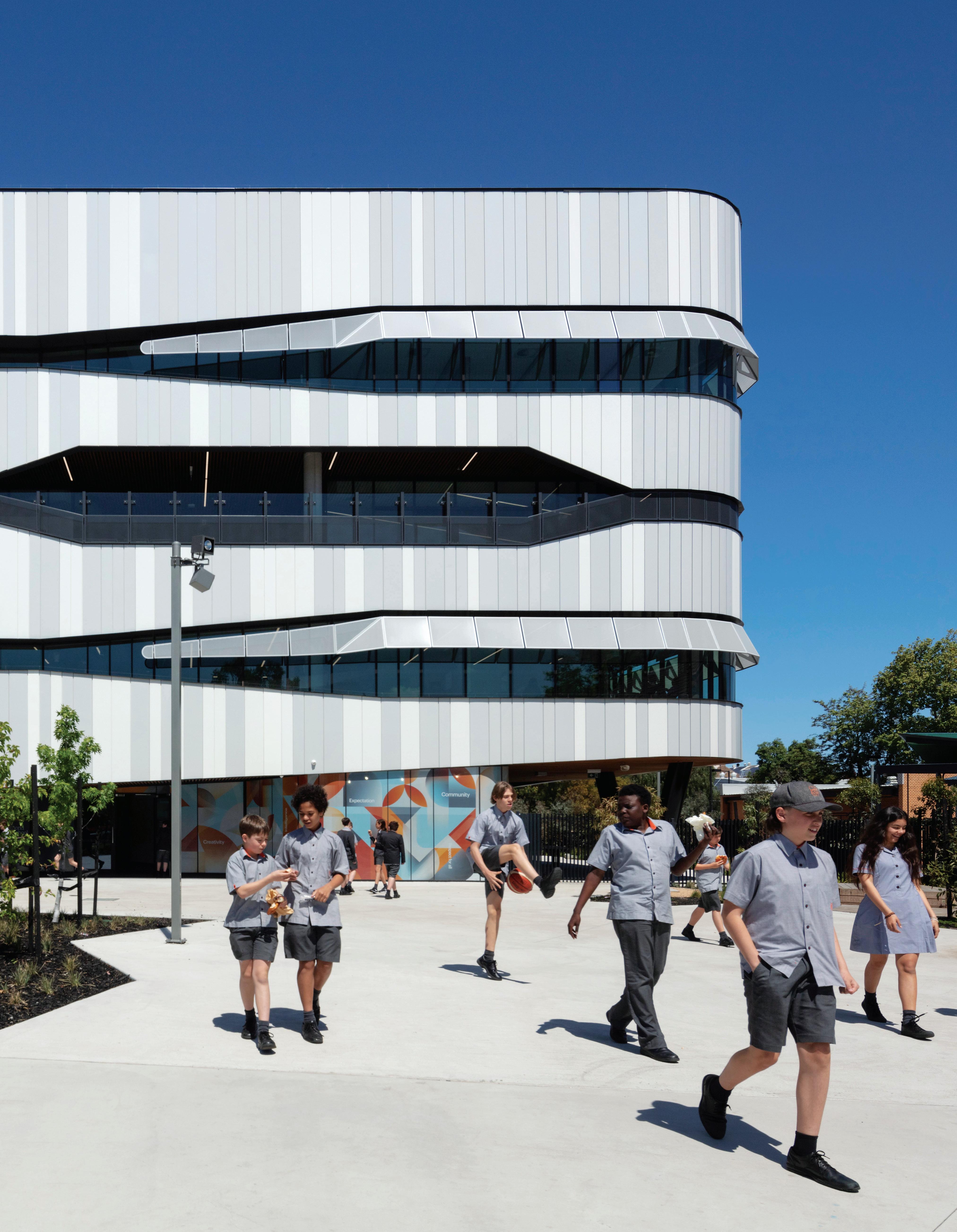
Stepping Up
The design of Richmond High School is a blueprint for the future with amenity provided over the four levels commencing on the ground floor with a concrete auditorium and meeting booths. The staircase also provides an informal gathering space that is accessible for all students.
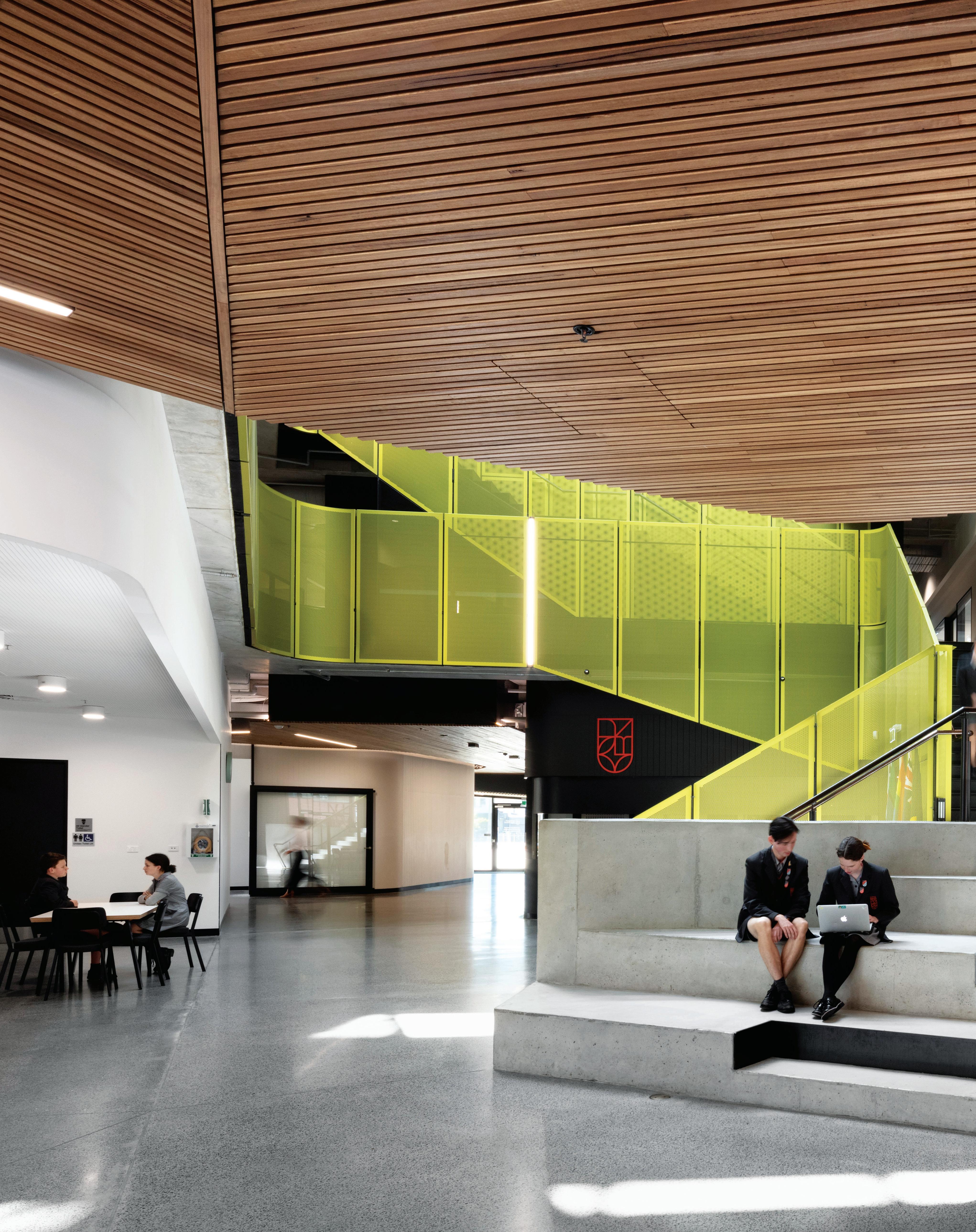
–
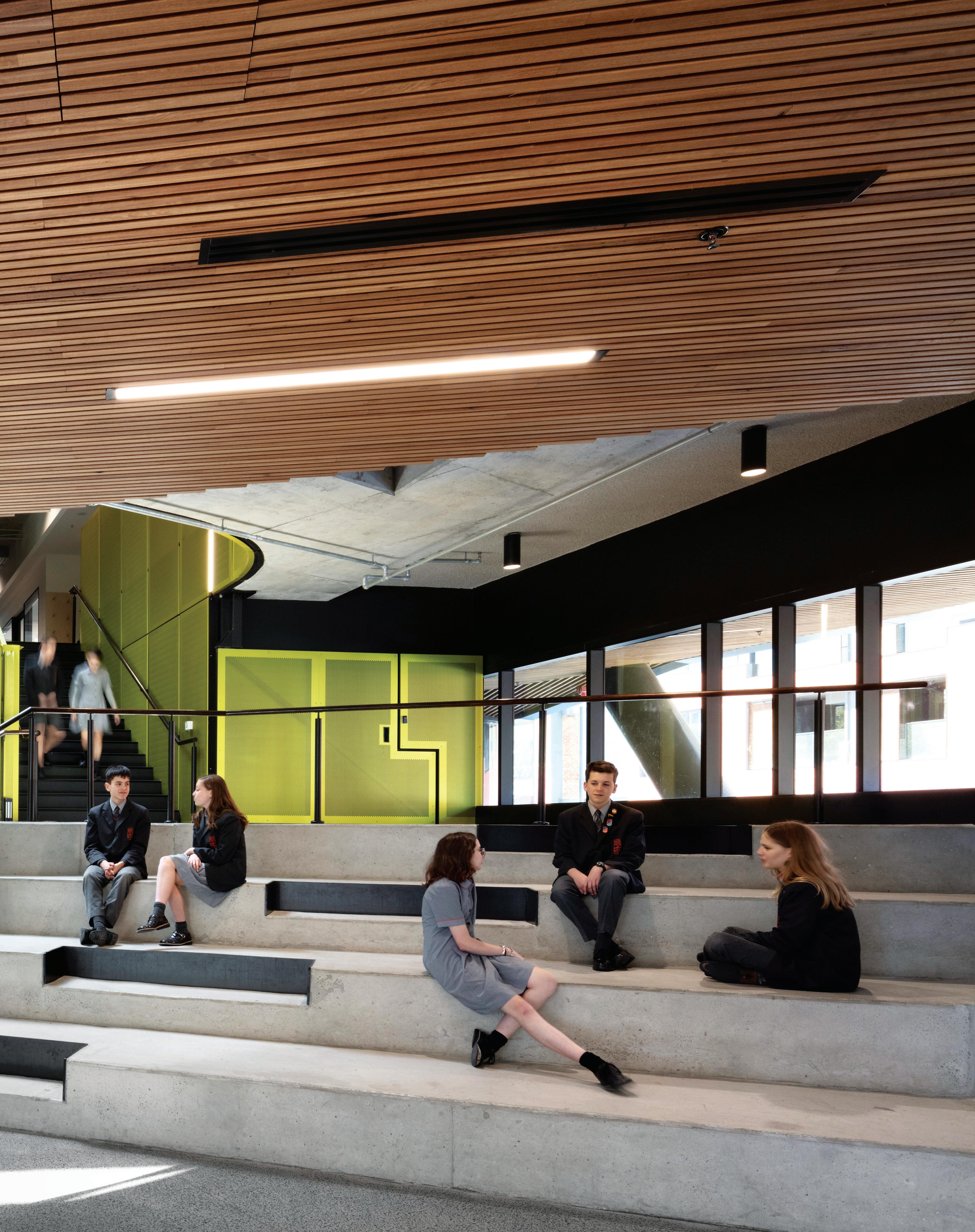
up informally, or alternatively meet in one of the banquette-style booths framing the atrium. And of course, the rise via the main staircase is gentle to allow for incidental meetings.
At ground level, there’s a library, performing arts space, a café and offices, located not only for the benefit of the students attending Richmond High School, but also for the local community, which occasionally uses these amenities. There was also a decision made from the outset to locate the two-year cohorts – years 7, 8 and 9 and years 10,11 and 12 – on different levels. The shared art studio, science laboratory and other ‘wet areas’ can be found on level two, creating cohesion within the building. “The last thing you want is to have children rushing up and down stairs or queuing up for the lifts to make it on time,” says Tweedie.

Richmond High School not only follows a vertical model, but a different floor plan to traditional schools. There are some enclosed areas, but generally spaces are defined by large sliding doors, lockers and, in some instances, simple pathways that subtly lead into a different student cohort. Acoustic walls have been strategically placed to ensure noise is contained in the areas where this is
most needed. And as the school grounds cannot be reached from classroom doors, generous terraces (varying in width from 2.5 to 4 metres) allow for immediate access to the outdoors. To diffuse the light, as well as create protection from the more inclement weather, Hayball created a series of steel ‘eyelashes’ or canopies. A large skylight at the apex of the atrium, complete with a heat exchange system, allows for continual fresh air, responding to the seasons. And rather than conceal services, Hayball has expressed the workings of the building, leaving them exposed where possible.
From the outset, the design for Richmond High School was always going to take a different educational path. The model of students sitting in rows listening to a teacher was never on the agenda. From the government’s perspective, as well as that of the architects, the objective was not about corralling students into set cubicles. “We see these students as young adults. They are mature and will accept greater responsibility if they’re allowed greater freedom to move around the building,” says Tweedie.
hayball.com.au
INDESIGNLIVE.COM 116 IN SITU
Above:
Page
Page
113: Richmond High School has been conceived over four levels and places the students at the heart of the design.
Collaborative
working has been encouraged through the creation of a series of pod-like environments that cater for a variety of uses.
117:
Spaces are defined by enclosed areas, large sliding doors, lockers and simple pathways that lead to different student areas.
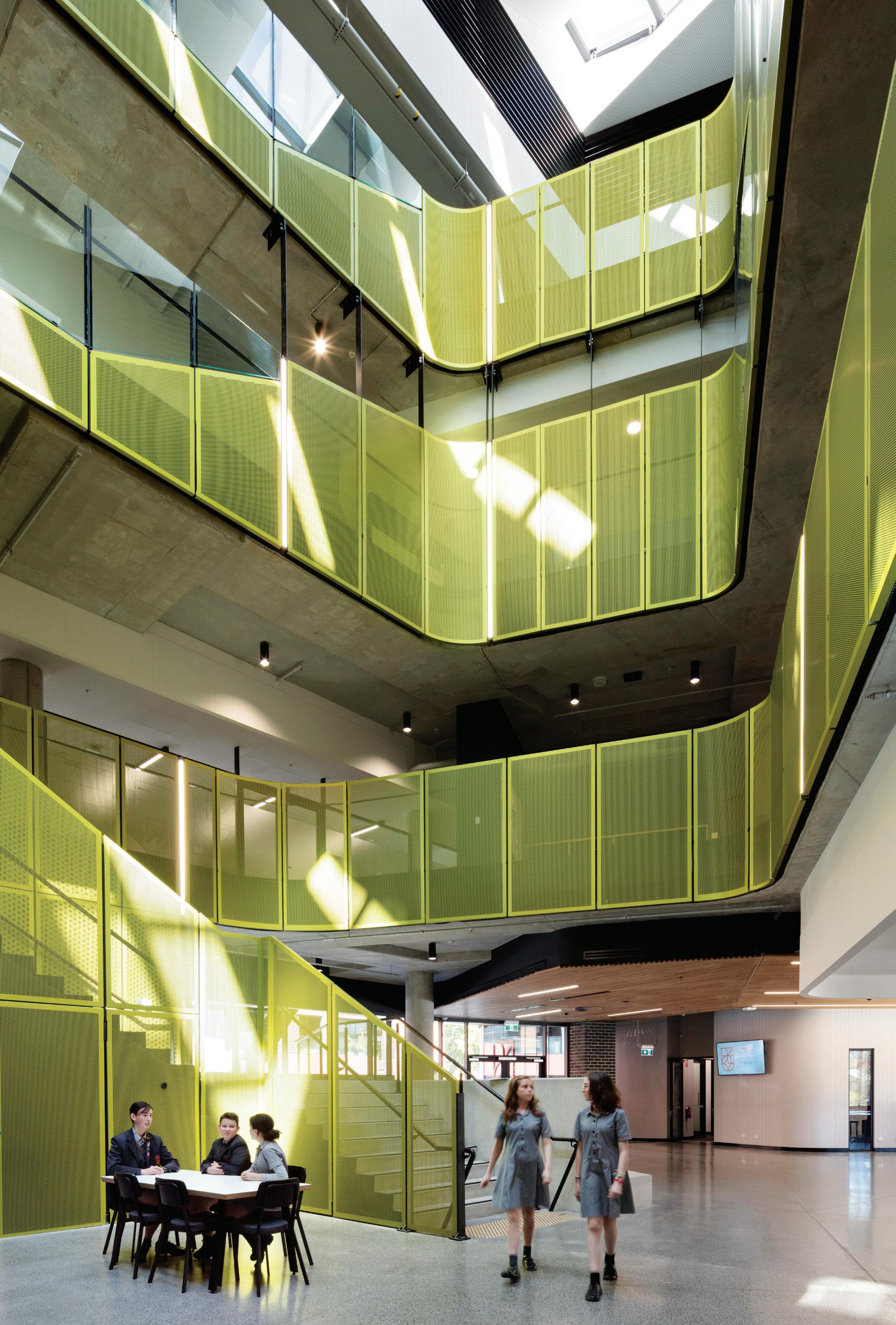
INDESIGN 117 IN SITU
New Tricks
My Grandfather always hated the idea of a retirement home. A horticulturalist and self-confessed handy-man, his days were spent in his garden: pruning roses; chopping wood; expanding his aviary. His life was one of open spaces and independent living, of Saturday tennis lessons and Sunday roasts.
And yet, as the years passed, the house grew impossibly large and increasingly empty. Staircases, cavernous baths and split-level living morphed from selling points to hindrances, obstacles that made his home an inherently challenging place to live. Despite this, he resisted moving into aged care. He was in good health –blessed with mobility, agility and quick wit – and in the battle of independence and risk versus safety and regulation, he was willing to hedge his bets.
With a population that is both older and healthier than ever before, my Grandfather’s experience is not a particularly unique one. He is just one of a growing number of people who face a residential purgatory where neither existing residences nor aged care provides an adequate solution to their needs.
Enter the Buxton Group, whose latest project The Granton, provides a re-education in how architecture can consider paradigms of aging and independent living. Spacious, seamless and sophisticated, this boutique development is designed specially for seniors, providing housing options where residents are not necessarily assisted, but empowered.
Located in the coastal Melbourne suburb of Brighton, The Granton is a collection of just 35 apartments, with 1, 2 and 3 bedroom variations available for purchase. Created to cater for a demographic of active and able seniors, the development o ers logical, practical and beautiful solutions for its speci c clientele, with Demaine Partnership (Architects), Carr (Interiors) and Tract
Consultants (Landscape Architects) ensuring each element of the project considers the lifestyle and residential requirements of future residents.
The Granton is an architectural re-education: a shi ing of pedagogies of aged-care and senior living. Age has been so carefully embedded in this project that it appears e ortless, where high-end, sumptuous apartments “just happen” to have kitchens wide enough for wheelchair access and drawers and private gardens that can be accessed even once mobility deteriorates.
More than just a question of spatiality, The Granton teaches the importance of intelligent product and xture selection; where apartment nishes play a vital role in facilitating independent living. Here, oversized and frameless showers account for maneuvering walking aids, mixers allow for water accessibility and other seamless details ensure an ease of use, whatever the need may be.
So too, appliance selection speaks to the continuation of a lifestyle without compromise. In the kitchen, Zip HydroTaps ensure residents have access to instant ltered boiling, chilled and sparkling water, minimising the need for super uous containers, gadgets and kitchen accessories. Speaking to an ethos of simplicity and sustainability, the Zip HydroTap complements the project’s wider ethos: the intersection between luxury and pragmatism made manifest.
The Granton is retirement-lite, where architecture treats age with grace and wisdom. It is not de ned by its residents, but is rather informed by them, actively arranging and manipulating space, products and design to allow them to live with their homes rather than in spite of them. This is architecture we need more of, a new way of thinking that provides tangible answers to the questions seniors are asking.
ZIPWATER.COM 118 INDESIGN ZIP WATER
Words Brydie Shephard Photography Render by Mr P Studios
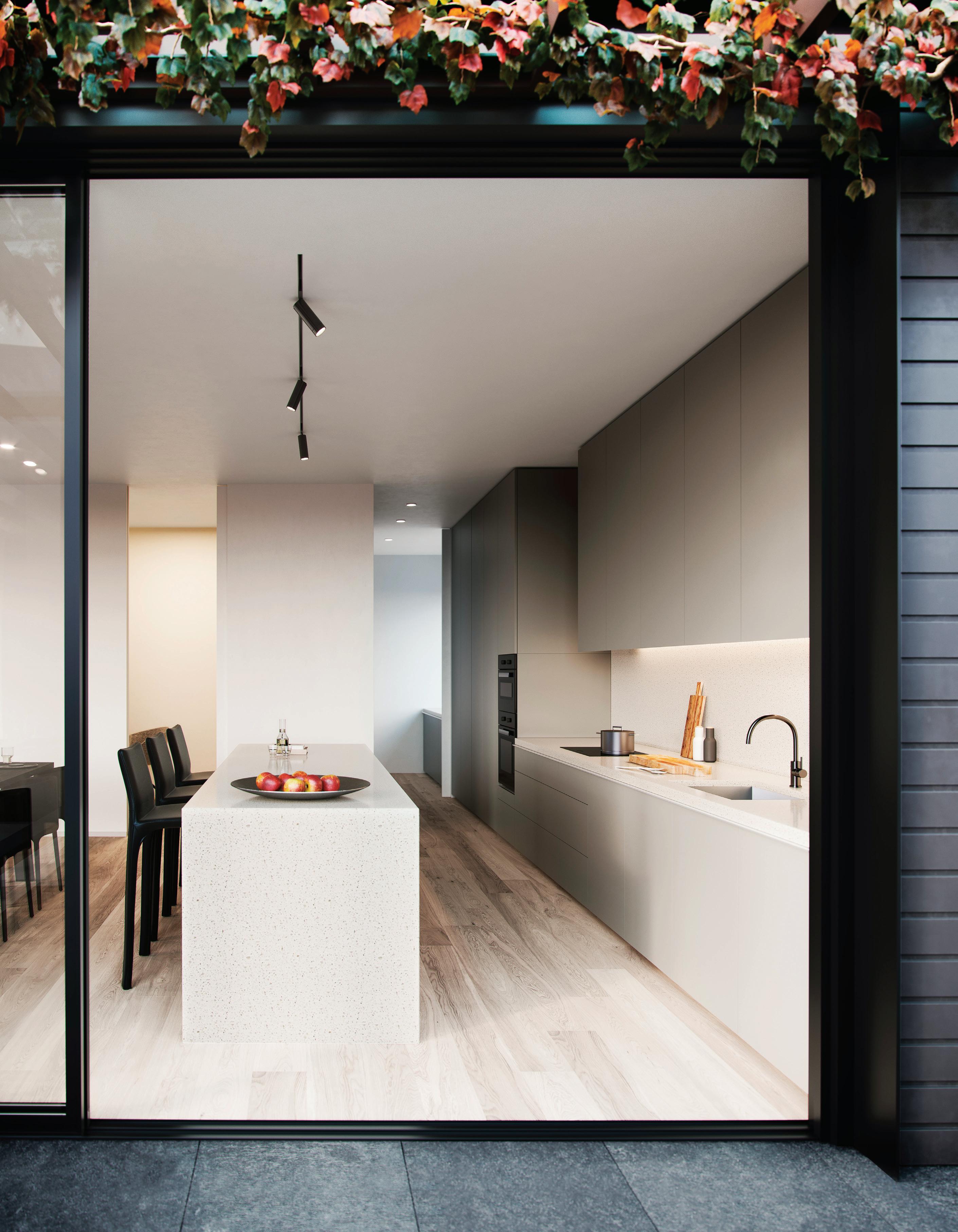
Bringing Designs to Life
AWM Transforming Workplaces
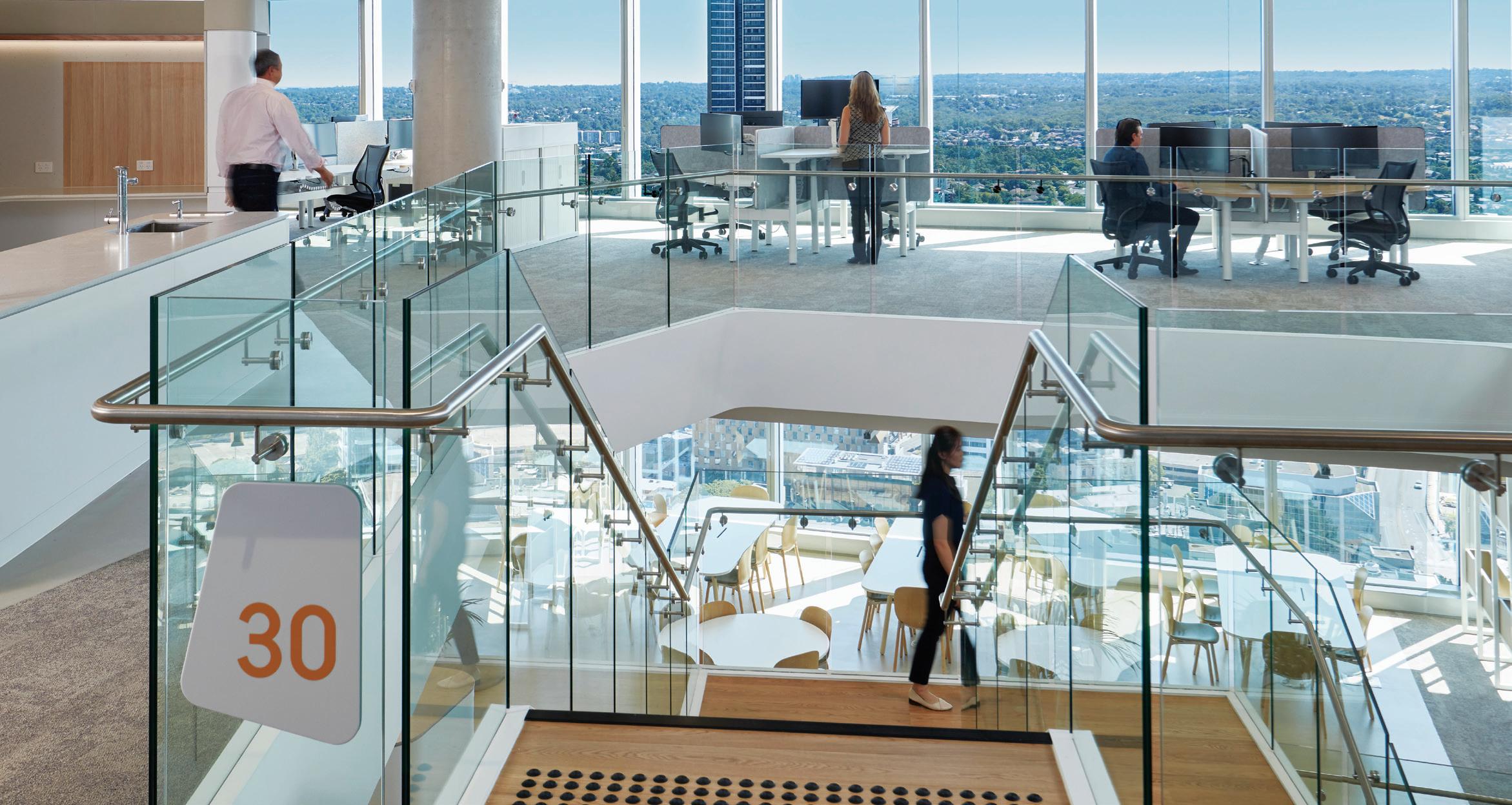
As an Australian manufacturer AWM has been making, supplying and installing commercial furniture and joinery in workplaces for the crème of corporate Australia for nearly three decades. Through a superior product range and commitment to excellence AWM has become an integral contributor to the architecture and design landscape, working with Australia’s foremost architects, designers and construction companies to achieve excellent design resolutions in myriad iconic commercial landmark projects.
One of AWM’s most recent projects is 4 Parramatta Square (4PS), part of the Walker Corporation development that is transforming the City of Parramatta in Western Sydney. AWM was engaged by construction company Built to manufacture, supply and install workstations, chairs, tables and storage units for all 33 oors of the showpiece building designed by Woods Bagot.
AWM co-founder Anthony Scotts describes 4PS as a workplace that ‘almost feels like home’, “Woods Bagot designed an environment for the NSW Government that takes leading edge to a whole new level. Beyond that, the thousands of Government employees working here are privy to something you rarely see - uninterrupted 360 degree views of Sydney through oor-to-ceiling windows that lter streams of natural light. ”
As with all projects undertaken by AWM, collaboration is key and working closely with Built ensured that 4PS was completed on time,
on budget and nished to the highest international standards in terms of both quality and Green Star ratings.
As a local manufacturer, AWM is agile, meeting the requirement for short lead times, tailoring product, developing prototypes and customising solutions for clients. Anthony explained, “Essentially we’re a supplier, but we like to think that the services and tailored solutions we o er along the way make us far more than that. As an Australian manufacturer, everything we need is under one roof in our Sydney factory. We have exibility in manufacturing, which in turn gives our clients freedom in design. Any concept they create, we can make and deliver with speed. We’re not reliant on imports and we take great pride in our team’s ability to bring every design to life.”
Of course care for the environment was uppermost in the building and supply of product to 4PS and Anthony commented that, “AWM has provided green star product so that the carbon footprint will be negligible. That’s probably what we’re most proud of, along with the technology, our sit-to-stand workstations that are app controlled. Sustainability and innovation underline everything we do at AWMwe’re always looking to the future.”
Proudly Australian, has been the manufacturer’s motto for the past 27 years and it’s captured in every aspect of AWM’s contribution to 4PS.
AWM.NET.AU 120 INDESIGN AWM
AWM’s
Words Jan Hendersen
recent
project
4 Parramatta Square in Western Sydney, photo: Tim Connolly Photography
INDESIGN’S DESIGN INTELLIGENCE THE EDUCATION REPORT
INDESIGN 121 IN DEPTH
DEPTH IN

INDESIGN 122 IN DEPTH
DESIGN FOR LEARNING
Not so long ago, the boundaries between people’s learning and working lives were very clear. High school students would complete their studies, typically transition into university and then enter the workforce. These days, with the rise of the millennial-age worker, they have become less distinct. This blurring of borders has seen the phenomenon of lifelong learning take effect as the younger generation of workers question the need for traditional university degrees, looping in and out of the workforce to complete them. As a result, co-working spaces that accommodate both learning and working are on the increase, incubators positioning industry experts within educational contexts are becoming more common and current pedagogies are being steered towards enabling students to get business focus.
These fluid frameworks have enabled architects and designers to deliver outcomes that are as innovative as they are unrestrictive –especially in the secondary education sector, where workplace values such as entrepreneurship, collaboration and inquisitiveness are being prioritised. The new Pembroke Middle School redevelopment in Adelaide’s leafy eastern suburb of Kensington exemplifies this.
Designed by Grieve Gillett Andersen (GGA), the three-storey facility features a variety of settings, comprising flexible learning spaces for art, science and technology, as well as maker spaces, industry-occupied enterprise spaces and an artist-in-residence studio. “The project’s design is based on the concept that learning isn’t constrained by curriculum, so students can see via different settings how it’s applied beyond campus, while at the same time developing relationships with ‘real world’ practitioners and
industry,” explains GGA Principal Dimitty Andersen. “It was also important to empower students on their high school journey and this easy access to a number of spatial experiences encourages diverse styles and modes of self-directed learning.”
The building is an undeniable hub of activity, articulated as a kind of vertical learning village, with a well-lit, naturally ventilated central atrium as its ‘town square’. Around this void are positioned various neighbourhoods that accommodate the different learning environments. These spaces in turn consist of break-out zones for informal gathering and links to outdoor landscaped and learning areas, including a ‘bio-deck’, which serves as an unconventional opening to the science laboratories.
A sense of openness extends throughout the rest of the building’s interiors, with extensive glazing utilised to facilitate visual connections and transparency across all three levels. While the learning, enterprise and maker spaces are very much defined by a straightforward horizontality, the scheme’s overall expression takes its lead from the triangulated site. So, dramatic angles and strong lines define the circulation areas and break-out zones, which are used by students and staff, as well as members of the community when the school hosts events, exhibitions and other functions.
As Andersen explains, “All the design decisions were made through a ‘building as teacher’ lens. The project’s form, along with the landscape design, detailing and services contribute to a story about construction and innovation that can be used to inspire the next generation of designers, builders and innovators.” Students
INDESIGN 123 IN DEPTH
Words Leanne Amodeo Photography Sam Noonan
In Adelaide a flexible learning space for high school students sets a new standard in both design and style.
Let’s Meet
The building is articulated as a vertical village where all areas emanate from the central atrium or ‘town square’. This is a place to meet and chat and becomes the central hub of school life.
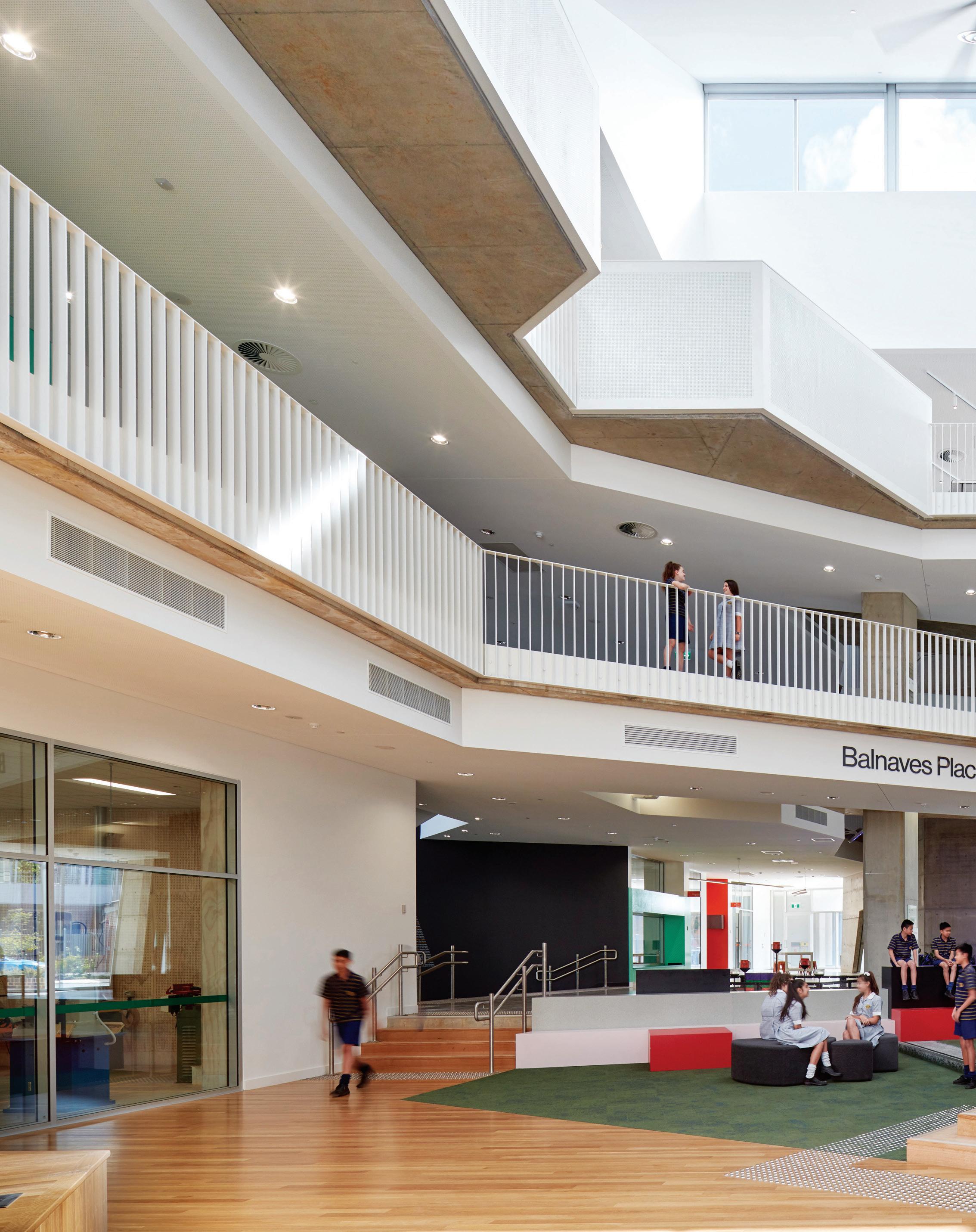
–
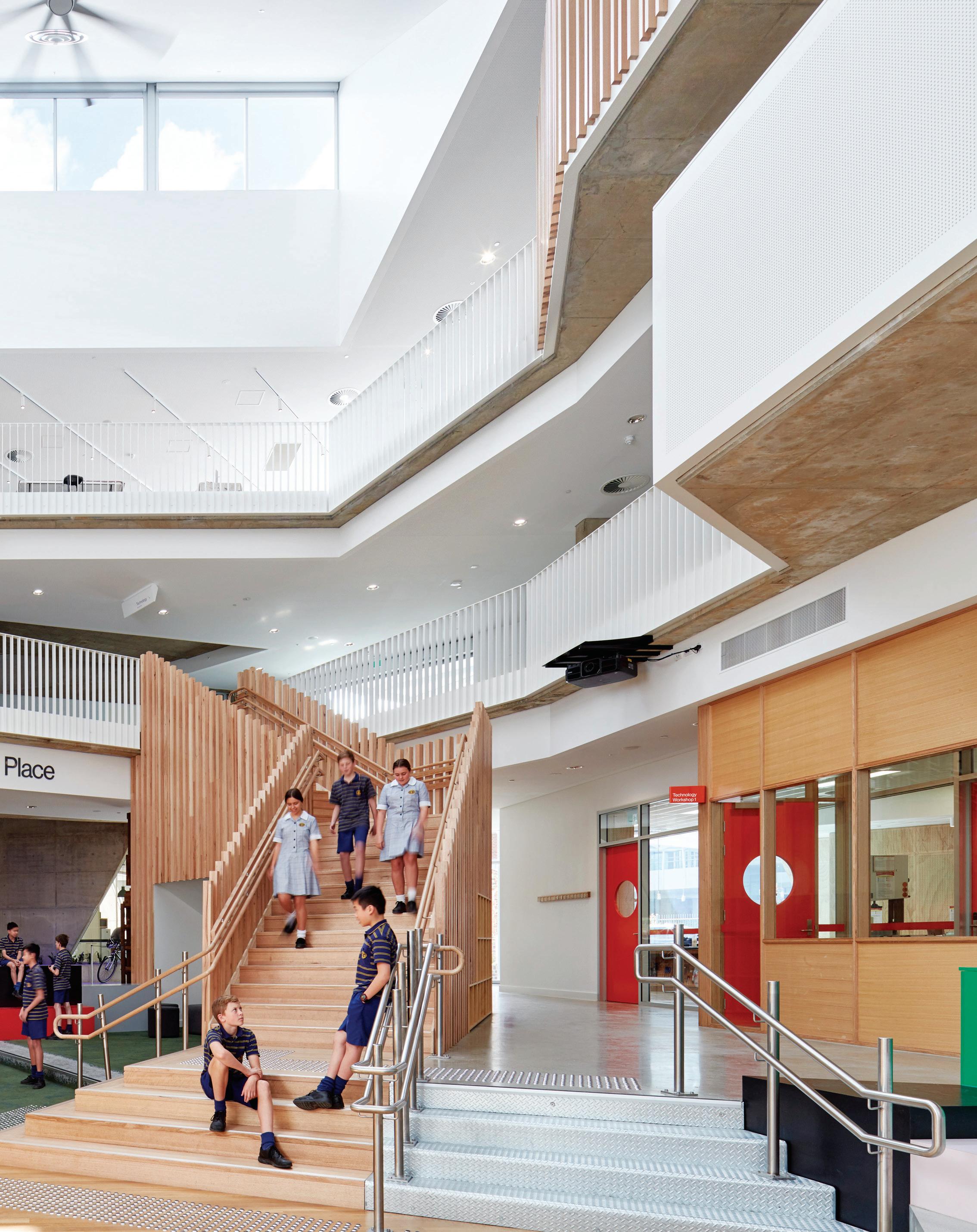
are therefore not only learning directly from visiting practitioners and industry, they’re also gaining indirect knowledge via engagement with the building itself.
Indeed, Andersen and the team deliberately used a mixed palette of materials and colours to create a kind of ‘sampler’ for student learning. Concrete is applied to great effect in the building’s entry and as floors and soffits throughout, while honey-coloured timber adds warmth via a central staircase and detailing in the internal Balnaves Place plaza. In the maker spaces, blackened form ply and perforated raw plywood walls lend interiors an industrial aesthetic with immense appeal. Colour is used judiciously: bright green joinery for the science laboratories’ benches, deep red doors to the maker spaces, a coral orange tabletop in the enterprise spaces. This adds visual interest and breaks up a relatively neutral palette without creating distraction.

Externally, the main stair’s balustrade and the bespoke shading device across the pedestrian bridge that connects the Middle
School to the main campus are both finished in purple, which delightfully plays off the area’s vibrant Jacaranda trees. But it’s the structure’s bold, triangular form that creates the strongest impact. Clad in matt blackened steel, it supports a variety of protrusions, including the bridge and tessellated framework that covers an outdoor seating area, making it appear all the more dynamic.
Modern design and intelligent planning ensure the students are prioritised and their learning experience is a memorable one, while the building’s impressive form champions their high school journey. As Andersen reflects, “We were inspired by this age group because they’re young enough not to be hamstrung by conventions and old enough to explore independent thought. The energy of youth is captured in the architecture and this project celebrates their optimism for the future.”
ggand.com.au
INDESIGN 126 IN DEPTH
Page 122: The building has been designed in a triangular form and the exterior is clad in matt blackened steel that is both practical and dramatic. Above: Concrete is vital to the material palette and has been used with great effect in the building’s entry and as floors and soffits throughout.



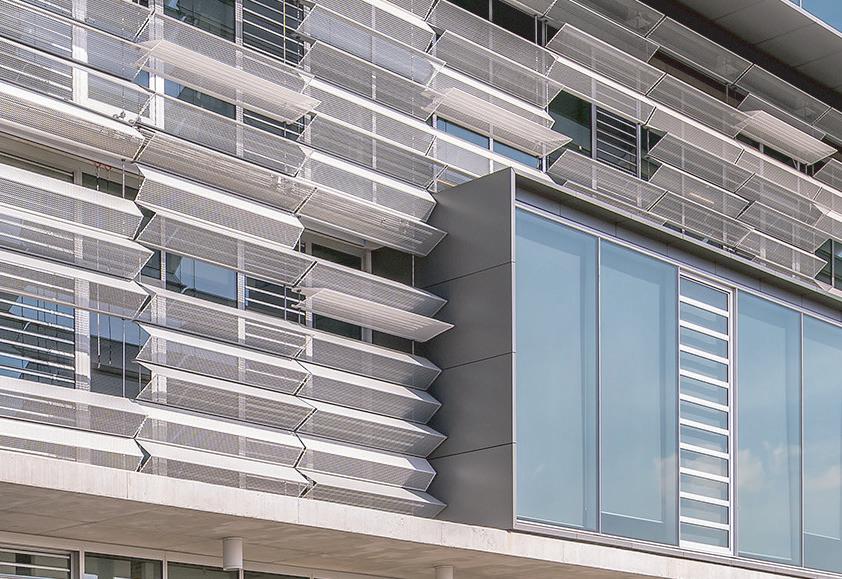


Precincts and STEMM
Words Sheree Proposch
Precincts: The engines of innovation
Cities are natural centres of innovation, with their concentration of people, organisations and activities providing the firepower to fuel change and growth. But that innovation doesn’t just happen on its own; it requires the right settings for big thinkers such as entrepreneurs, researchers and visionaries to come together with a common sense of purpose, focus and inspiration.
Precincts are those places, where the brightest minds and most enterprising people can pool their knowledge, skills and resources to deliver on important government, business and community objectives — and find solutions to some of the world’s most pressing challenges. From the creative industries to science, technology, engineering, mathematics and medicine (STEMM), precincts have the power to intensify innovation and enhance outcomes.
As hubs for great talent, universities — along with hospitals — are often anchors for these innovation precincts as long-established homes for research and the development of new products, services or processes.
It’s no surprise we expect these institutions to take on the thorniest issues, but there’s clear evidence showing they shouldn’t do this alone. To turn innovation into practice, universities need to work closely with industry, in both a literal and physical sense. When these institutions are located close together — sometimes alongside government bodies — it creates the optimum environment for an innovation ecosystem to flourish.
Many universities recognise this, and are looking beyond their traditional campus borders to build strong external connections with industry. These partnerships are not only paths to more funding and more productive research across the board, the organisations on both sides of the equation acquire specific, valuable benefits. On the one hand, commercial ventures gain more credibility through affiliation with a university, while academics enhance the commercial potential of their research through a business partnership.
The Brookings Institution, a world leader in the theory and practice of innovation precincts, identifies economic, networking and physical strengths as the keys to supporting an ecosystem that generates and commercialises new and important ideas. (Brookings 2014)
The recipe for success
As major landowners and place-makers, universities have historically played a big role in shaping the physical environments of their towns or city locations. In a globally competitive environment, universities are focusing much of that influence on campus amenities that attract and retain the best staff and students. That approach extends to off-campus precincts. With greater focus and investment, the once-typical industrial site or bland business park is becoming a livelier, more ‘magnetic’ place for innovation and collaboration. Many of these university developments are now walkable, accessible to the community, served by public transport (or drivers for it) and enhanced by retail, culture and green space. Those qualities are key ingredients in the Brookings Institution’s recipe for success, which identifies five critical characteristics of innovation precincts:
1. Critical mass
2. Innovation capacity
3. Diversity and inclusion
4. Quality of place
5. Leadership
The buildings, parks, streets and other infrastructure that determine the ‘quality of place’ — whether publicly or privately owned — can be designed and organised to stimulate new and higher levels of connection, collaboration and innovation. There are great examples of this, both internationally and closer to home. At Kendall Square in Cambridge, Massachusetts, significant private and government planning and investment have helped
INDESIGN 128 IN DEPTH
As education precincts develop around the country and overseas the benefits for the education sector, business and government are obvious. Working together, thinking big and innovating ensures future growth that contributes to the individual and the broader community.
create “the most innovative square mile on earth,” according to a Boston Consulting Group report, and the birthplace of the biotech industry. Once an industrial zone, this innovation precinct is co-located with MIT to tap into their stellar talent. It has good access to transport infrastructure and strong connections to the community, which had input on key elements of planning including housing, retail, open space, historic integration and innovation space.
The University of Melbourne is developing an industry-integrated precinct for advanced engineering at Fishermans Bend, one of the city’s designated urban renewal areas. Hassell recently completed the Stage 1 Functional Brief for the 55,000 square metre area, which includes an active ground-floor level, spaces for makers and exhibitors, an events area, retail and landscape. The Fishermans Bend Planning Authority is overseeing complementary developments including transport, schools, childcare and sports facilities.
The growth of STEMM
Across governments, media, schools and universities, STEMM is rising to the top of the agenda.
With global competition for resources, talent and trade at fever pitch, scientific and mathematical knowledge — and the engineering and technological advancements they can lead to — have become crucial for economic growth. They can fuel this growth by improving the productivity of existing industries and supporting the development of new professions and industries.
Separately, the disciplines of science, technology, engineering, mathematics and medicine make major contributions to society. Working together as a crossdisciplinary group their impact and influence increase exponentially.

In Australia, each of the country’s 42 universities is developing their own version of STEMM based on their:
• Disciplinary strengths
• Student or research focus
• Shortfalls in existing building stock
• Funding links
• Campus capacity
• Industry connections, or
• Other business drivers
This will create an exciting national network of STEMM collaborations of all shapes and sizes, from mini-precincts on campus to industrial zones for large, engineering-focused operations as space becomes more scarce on inner-city campuses.
Buildings within these precincts are also appearing in new and sometimes unexpected forms. Often cited
as hidden, insular places, science and engineering buildings are increasingly connected to their communities, both literally and figuratively. Through distinctive architecture and transparent surfaces, they engage people and highlight the work happening within their walls. They also convey a commitment to innovation and a sense of purpose, which support the university’s identity and attract greater talent and funding.
The way space is organised within these STEMM precincts can make or break a university’s chances of making the cultural and organisational changes they need to thrive. In buildings and campuses designed to foster genuine, cross-disciplinary culture, experimental or unconventional ways of working and interacting can become the ‘new normal’ and that can lead to unexpected results.
The setup of the Brainport Development in Eindhoven, Netherlands truly supports the entire innovation ecosystem, from start-ups to scale-ups to large multinationals. This technology and design hub, associated with Eindhoven University of Technology and the birthplace of Philips Electronics, houses research groups arranged around clusters such as food technology, high-tech software and augmented and virtual reality. There are also plans to add future clusters for 3D printing, advanced and smart manufacturing, robotics and plastics.
The old Philips factory complex on the site has been transformed into a multi-purpose cultural and residential complex called Strijp-S. It includes spaces for conferences, concerts or other events, a walking promenade, sports zones for BMX or bouldering, and lots of open, green space for festivals and recreation.
For the University of Melbourne’s on-campus STEMM Hub, Hassell developed a Strategic Plan and Functional Brief that supports the university’s new approach to the campus; a place that’s more active, open to all and easy to move through. These design drivers come through clearly in early artist impressions.
These examples are proof of how design can make a major difference. Lively, productive settings designed to power innovation can influence the growth and development of STEMM in both the education sector and society more broadly. The best environments can also attract and retain the best students and staff in the field, support innovative teaching and research practices and help academic and industry partnerships flourish.
Ultimately, that can lead to groundbreaking approaches to global challenges that affect our future prosperity.
hassellstudio.com
INDESIGN 129 IN DEPTH
Sheree Proposch is principal at Hassell.
PLAYTIME

INDESIGN 130 IN DEPTH
Words Leanne Amodeo Photography Trent Bell
With new technologies increasingly used to facilitate learning, it would seem logical to assume current pedagogies can’t be delivered without them. But this isn’t the case. Drones, robots and hi-tech devices are instrumental in today’s schooling, but there are other ways to encourage learning that don’t rely solely on an app or computer. Boosted by creative teaching methodologies and informal learning environments, analogue approaches are producing effective, positive outcomes too, as the recently published international report Innovating Pedagogy 2019 outlines.
Authored by The Open University in collaboration with the Centre for the Science of Learning and Technology (Norway), the report identifies the ten trends that will influence education across the globe moving forward. Interestingly, playful learning is one of the key themes expected to have great impact, with advantages for children (as well as adults) because it evokes creativity, imagination and happiness. This pedagogy focuses more on the process than the outcome and is in stark contrast to traditional methodologies that promote testing, performance and memorisation.
Certainly, architects and designers are having a lot of fun designing learning environments that facilitate play among young learners. And these spaces are providing a springboard for active participation, experimentation, exploration and development of wonder. There’s no one-size-fits-all solution when it comes to designing for children aged six weeks to five years. But the most outstanding outcomes are not only instantly engaging, they also instil a sense of reassurance in the little ones and their parents or carers. This is definitely the case with the new SolBe Learning Center in Chestnut Hill, a neighbourhood west of downtown Boston, Massachusetts.
Designed by Cambridge-based multidisciplinary practice Supernormal, the 550 square metre nursery and preschool was envisioned as a home away from home for young learners, with plenty of scope for play and connection, curiosity and interaction. “We wanted to redefine the classroom for 21st-century learning by reimagining its spatial character to better match more informal activity,” explains Supernormal Founding Principal Elizabeth Christoforetti. “The idea behind this new type of classroom is that it enables flexible modes of early learning, thus transforming the traditional double-loaded-corridor learning environment into something that feels more like a small town.”
Each classroom in the SolBe Learning Center is called a ‘dwelling’. All three of these essentially float within the facility’s open plan, paired with an adjacent unenclosed space called a ‘yard’. This clearly defined spatial planning allows for focused learning in the former, with free-play and group activities taking place in the latter. Each dwelling has its own distinct sculptural form to identify and accommodate the stage of learning being taught within, where oak floorboards and cream-coloured walls gently immerse the children, enabling them to concentrate without distraction.
“The diversity of forms also allows for greater sensitivity to the children’s energy and the curriculum’s activities over the course of an average day,” says Christoforetti. “Not every day is a good day and the design works hard to accommodate this as comfortably as possible, encouraging a sense of wonder and curiosity at every opportunity.” To this end, brightly coloured patterned wallpaper wraps the dwellings (in a show of engagement with the facility, the children have endearingly given each one a nickname – Ketchup, Mustard and Relish – after

INDESIGN 131 IN DEPTH

More Ketchup Please!
There are three classrooms or dwellings within SolBe each with an adjoining play space individually coloured red, yellow and green. In keeping with the playful nature of the design these areas have been affectionately named ketchup, mustard and relish.

–

INDESIGN 134 IN DEPTH
Page 130: Bright coloured patterned wallpaper has been used as a backdrop in the free-play yard areas where children interact and can safely explore their surrounds.
Page 131: The interior of the classrooms features oak floorboards and cream-coloured walls that enable concentration without distraction. Above: The 4.5 metre-high ceilings have been finished with acoustic baffles that are functional and provide visual interest. Opposite: Overview of one of the classrooms or dwellings with accompanying outdoor space.
its corresponding wallpaper colour) and this provides a bold backdrop to the free-play yard areas. These ‘outdoor’ spaces are instrumental in providing young learners with the informal activity needed to develop their capacity for independent thinking and social interaction. The yards are unobstructed and large enough to make them feel uninhibited yet demarcated enough to set behavioural boundaries. It’s here that the children can run, walk, talk, sit and eat with each other, all the while actively and safely exploring their surrounds.
Both the dwellings and yards receive an abundance of natural light, which is a crucial element in the overall scheme. Within the former, undulating ceilings temper direct sunlight, adding to the calmness of the spaces. The yards’ 4.5 metre-high ceilings feature a series of skylights and are finished with acoustic baffles, which not only serve multiple functional purposes, they also provide visual interest.
The strong connection to natural light brings the outside in and ensures a sense of wellbeing among the children, supporting the SolBe Learning Center’s seed-to-table curriculum. “It’s about tying learning back to natural cycles of the day and year and seeing the nursery and preschool as a microcosm of the world, both socially and in terms of the natural environment,” Christoforetti explains. “The incorporation of a commercial kitchen, designed to utilise the production of an attached garden and engage children in the process of creating from seed to table, also exemplifies how the learning model drives the overall design and curriculum.” After hours, the kitchen allows for community functions and events. This is a hardworking, multi-functional facility that’s compelling in many ways, but mostly for the inspired platform it provides children in preparing them to embrace a lifetime of learning.
supernormal.io

INDESIGN 135 IN DEPTH
A Digital Readiness
Developing future models of education, WMK Architecture incorporates technology and the ideas of connectivity within its projects. New ways of thinking are paramount and there is no time like the present to embrace change.
Words Kim Aleksandrowicz
INDESIGN 136 IN DEPTH
Our recent work within education design has been informed by a recognition that children are regularly engaging with technology before they commence formal education. Students are arriving at school pre-loaded with a digital skill set that is already being utilised by the pedagogy of today, so it must be supported by the education spaces we design for tomorrow.
Formal learning structures of the past can be accused of an arrogant approach to the student experience. When once we accepted the authority of our educational institutions and their didactic approaches, acquiescing that the student is shaped by the school, we have now entered an era where our schools are the ones learning, by adapting and responding to the needs of their students.
Learning is not an activity that takes place only inside a classroom. Today, our kids are willingly and happily spending their time actively engaging with digital media, and for some this happens as early as the cradle. Though we might not traditionally identify this interaction as ‘learning’, this digital engagement provides for autonomy, assists in defining identity, and allows for the development of alternative forms of expertise and ways of communication.
Utilising technology as a tool for teaching and learning is by now common practice. The speed at which technology develops, advances, and affects our existence means that the idea of ‘new’ exists for a very short period of time. ‘New’ schools that are being designed ‘now’ need to support the pedagogy of tomorrow.
At WMK our education portfolio spans early learning, junior through to senior school, as well as working and learning spaces for both teachers and students in higher education. The common link between all these spaces — regardless of typology, client or age of student — is the integrated technology that supports the pedagogy. Our design research has shown that this digitisation of school environments has promoted open models of learning; disruptions to the formal structures that allow both teacher and student to grasp opportunities that lie outside traditional (didactic) systems. These open models need a different set of tools, supported by an enhanced built environment. According to research conducted by the University of Utrecht’s Education for Learning Societies, education in all its phases will increasingly involve distance learning, interactive webinars, interactive applications, discussion forums, and the provision of curriculum materials, educational games and annotated demonstrations through the internet. Moreover, both students and teachers are increasingly using social media to engage in informal learning processes (subject-based Facebook study groups, for example).

These examples of open models of learning are best enabled by technology-rich environments. So the school building must be designed with tech at its core, allowing for spaces to be supported by the technology, not led by a technology overlay. Consideration to the design of the spatial relationship of the teacher to their students and between the students — the human centre — is paramount to foster connection, collaboration and communication. The technology must meld into this relationship and the physical space, enabling seamless connection. The physical fabric of the learning environment and its corresponding digital framework needs to be transparent and accessible if it is to nurture a positive and meaningful experience.
Our recent and ongoing work for the Northern Beaches Christian School, for example, embodies all of these elements. A cutting-edge campus for students K to 12, our design comprises a sequence of multi-level pavilion buildings with balconies, seating nodes, oversized steps, and timber platforms all wired for technology and allowing for endless configurations. Classrooms are superseded by indoor/outdoor interactive learning spaces, designed for multiple learning modes and non-hierarchical interaction. These learning spaces are created to flex for different configurations, the design intent allowing for different work areas and multiple uses, both concurrently and consecutively. Depending on the task, students can work together in groups or individually, these pliable spaces accommodating the needs of the class.
This approach to education design is connecting the physical with the digital, but it is also connecting the students to important frameworks that exist outside of school. Our design for the Northern Beaches Christian School was drawn from our activity-based design principles developed through our research for commercial workspaces. It is no accident that the evolution of these open models of learning echo contemporary agile workplace methodologies and their respective built environments, as the advancement of technology has seen workplace design and education design evolve in a similar direction. As if coming full circle, WMK is currently creating a work environment for a national client specifically designed to foster continuous professional learning, which is being enabled through an agile, technology-rich environment.
It is from these kinds of workspaces that our children will find employment post-graduation, and know exactly how it works.
wmkarchitecture.com
INDESIGN 137 IN DEPTH
Kim Aleksandrowicz is the marketing and client engagement officer at WMK Architecture
COLLABORATION FOR THE FUTURE

INDESIGN 138 IN DEPTH
Words Leanne Amodeo Photography Trent Bell
Today’s high schools don’t look like they once did – and this is a good thing. Box-like classrooms and an abundance of beige have no place in contemporary learning environments where the goal is to inspire and make students actually want to go to school. Prevailing pedagogies now place the learner well and truly at the centre of the education experience and architects and designers have responded accordingly. The best designs integrate plenty of green space and interiors that are open and agile, with an informality conducive to creativity, collaboration and communication.
This is most certainly what MLC School’s management had in mind when they approached BVN to prepare a masterplan for their campus in Burwood, an inner-west suburb of Sydney. The recently completed MLC Senior School is part of that ongoing development and stands as an impressive example of a future-
focused learning environment that can be adapted in response to changing pedagogies. “They wanted a space that would more easily transition the senior students into university or the workforce,” explains BVN Principal Phillip Rossington in relation to the brief. “Our resulting concept was informed by contemporary tertiary education and workplace designs.”
The four-storey building appears much like a modern office space. In this respect, it blurs the line between high school and the real world. The disengagement that characterised high schools of yesterday is gone, replaced with a sense of dynamism that makes the institution feel outward-looking rather than isolated and closed. As a practice, BVN has designed some of the best industrial-style workplaces around Australia and they have thoughtfully applied their signature aesthetic to the MLC Senior School. Concrete
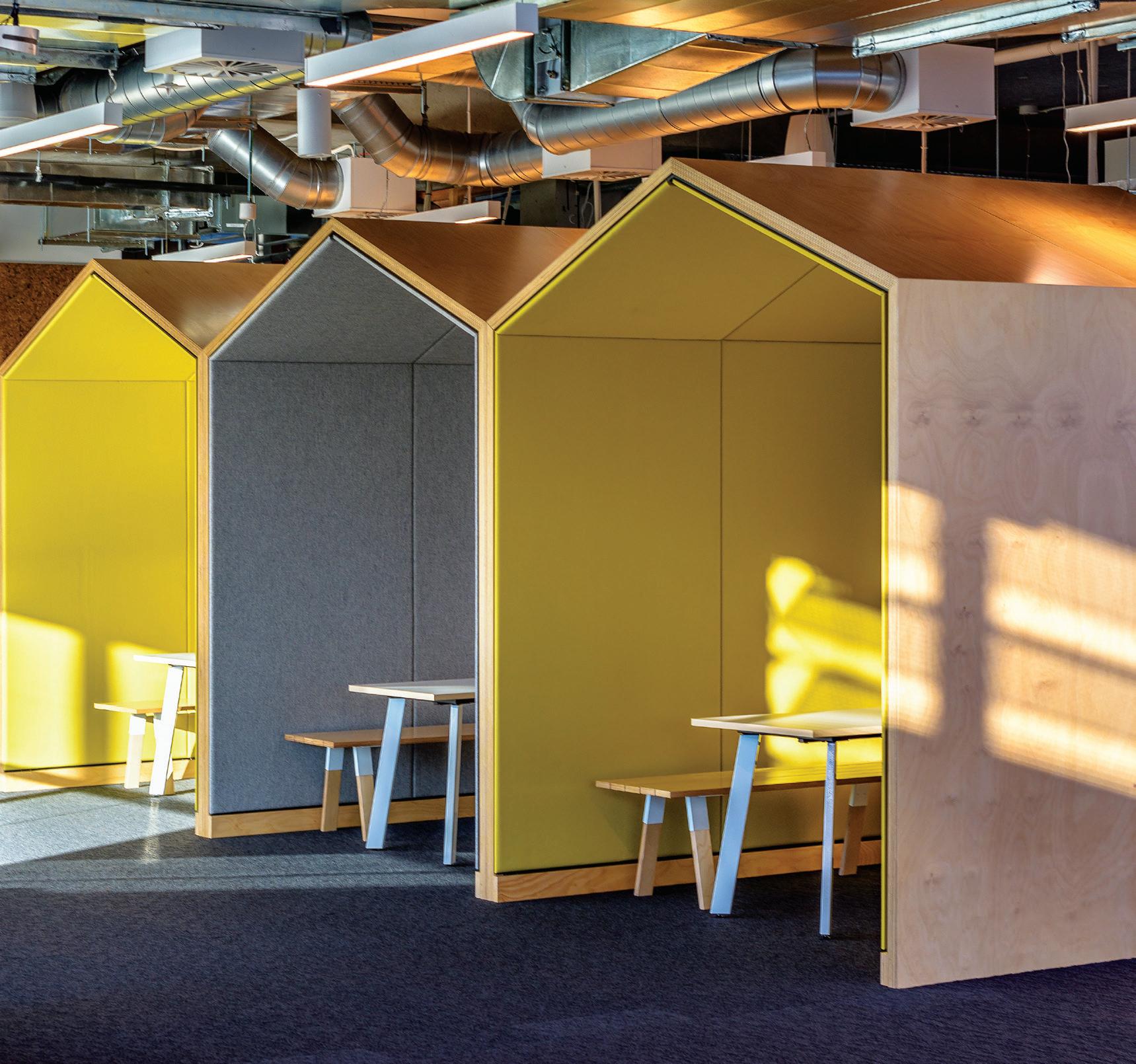
INDESIGN 139 IN DEPTH
predominates, providing a robust yet light framework into which a number of di erent se ings are e ectively accommodated.
All of these spaces, including enclosed and open learning areas, seminar rooms and science laboratories, are positioned around a central atrium. Not only does this generous internal void act as a lightwell, it functions as an anchor that works to visually connect all four levels plus a basement. “In our workplace design, BVN believes that a vertical connection is a way for employers in large organisations to facilitate be er engagement among their sta and the same principle applies here,” says Rossington. The atrium certainly does draw the eye up, as does the scheme’s sharp angles and clean lines, in particular the balustrades’ fi ne, pared back metalwork. Open, straight timber stairs also reinforce both the interior’s verticality and strong sense of connectivity, ensuring a logical circulation that encourages spontaneous interaction.
It’s a plan developed to increase visibility and introduce a transparency necessary within all educational institutions. The small, glazed meeting rooms that cantilever into the void perfectly articulate this need for openness, with their minimally furnished interiors essentially on show for all to see. However, Rossington and the team have tempered the potential fi sh bowl e ect by blocking out the entry-side wall, so those inside the rooms aren’t disturbed by anyone walking past. And if students require more privacy, they can utilise one of the study pods that feel all the more immersive and intimate because of their yellow or grey upholstered walls.
As Rossington notes, “The key expression uniting BVN’s contemporary workplace and tertiary education designs with this project is variety, because we want all end users to be able to reach
a level of comfort where they can achieve their best work.” Indeed, di erent se ings o er a degree of visual stimulation that keeps the learning process exciting. And having a range of study spaces to choose from supports current learner-centric pedagogies that permit students to take control of their own learning experience. It nurtures independent and critical thinking, both of which are highly valued at a tertiary education level and in the workplace.
The collaborative areas that house these small study pods are especially pertinent to the overall design in providing the flexibility needed to future-proof the building. These zones are reconfi gurable and as teaching models become less and less didactic, partitions can be removed to accommodate this. The kitchen facilities for both students and sta are already shared across each floor, transforming these areas into small hubs of social activity, with a view to strengthening relationships.
While the MLC Senior School very much looks to the future, the project is fi rmly embedded in its site too. A walkway links the building to other structures on campus, while two new outdoor areas ensure the interior receives an abundance of north-facing light. Rossington and the team have also explicitly acknowledged the past by positioning a two-storey feature window so that it takes in views of one of the school’s heritage buildings. Such sensitivity to context highlights the scheme’s potency, adding yet another level of sophistication to the design, which ultimately respects the students as young adults, giving them a positive taste of what lies beyond graduation.
bvn.com.au
INDESIGN 140 IN DEPTH
School 1:250 5 10M LONG SECTION
“In our workplace design, BVN believes that a vertical connection is a way for employers in large organisations to facilitate be er engagement among their sta and the same principle applies here.” Phillip Rossington
The Bigger Picture
BVN’s internal design for MLC School Senior Centre includes glazed meeting rooms that cantilever into the void to add transparancy however the entry-side walls are solid to temper a feeling of being ‘on show’.

–

INDESIGN 142 IN DEPTH
Page 138: Straight timber stairs reinforce the interior’s verticality and provides a logical circulation flow as well as increased student interaction.
Page 139: Students can choose from a range of areas in which to study including these very smart study pods.
Above: The internal void functions as an anchor that helps to visually connect the four levels and basement.
When Did Value Engineering Become a Design Stage?
 Words Max Thompson
Words Max Thompson
Project Manager: We have had a fee variation submitted by the engineers.
Client: Why’s that? I didn’t think we had changed the brief.
Project Manager: You haven’t. The VE process has changed the ceiling design so they need to re-document the services.
Client: Sorry, still not understanding. We haven’t changed anything.
On the well-worn path to design nirvana, we can all agree that you start broad, aspirational, and push boundaries. As things progress through design development and documentation, the design is refined, matched to the services and synchronised with the available budget so that when the tender set is issued it broadly matches. Of course, no one expects perfection but close enough is a reasonable goal… or it used to be. Can someone please explain when we added a new phase called value engineering (VE), and why the client should pay additional fees triggered by this process? Perhaps the fact that we use the euphemism “VE” in lieu of “cutting out the good stuff” tells us something about the approach some designers are adopting regarding their obligation to design to a budget. I have no desire to stifle creativity. However, the consequences of relying on late-stage VE to bring a job on budget are significant and impact upon everyone.
1. The designer spends more time, and therefore more fees, redrawing things that should have been addressed earlier.
2. The client incurs fee variations for associated consultants due to the consequential re-work.
3. The construction manager spends more time redoing cost estimates (they take time, you know).
4. The design is compromised in an uncontrolled way, and the low-hanging fruit deleted. These are often feature items that give the design joy: signature furniture pieces, specialist lighting, FF&E (furniture, fittings and equipment) and ceilings.
5. It places extreme pressure on increasingly tight programmes.
Perhaps most importantly it makes the whole team look faintly foolish and reinforces the commonly held belief that building jobs are never on budget.
Checking the design against a cost estimate is a valid activity. If there is a disconnect, the team works together to reduce that delta before launching into presentations and documentation. Checking it again is also prudent before documentation is completed. However, where things seem to be going of the rails of late is the third and even fourth round of VE, hastened by the failure of the design team to modify their work.
It isn’t particularly productive to assign blame here, and I can hear you screaming at the page: “It is the project manager’s job to manage the design and budget!”. This is perfectly true. We do have a buck-stops responsibility for this, and a good project manager (PM) will pre-empt a train wreck. Yet interior designers –and to a lesser extent engineers – also need to stand up and be counted. It is your role to design to a budget, and if you are not told what the budget is, then find out and cut your cloth accordingly. A $1250 per square metre budget will demand a very different design solution from a $2500 per square metre one. Here endeth the sermon. What do we do?
• Match your design solution to the available funds.
• Don’t sell a design until you know that you can afford it.
• Partition your available budget into the key buckets to limit the collateral damage of going over on any one bucket.
• Understand and adapt the design to the building.
• Finally, don’t rely on supplier pricing.
• So, there you have it. Easy to dismiss as the ramblings of a pompous dinosaur. But before you do, just ask yourself how many other project managers and clients (aka sources of work) share this opinion.
spitfirecontrol.com.au
INDESIGN 143 IN DEPTH
Max Thompson is project manager at Spitfire Control.
Stay in, Stay Connected and Save
The region’s most trusted voice in architecture and design is here to keep you in the know.



Indesign magazine is celebrating 20 years but the gifts are all for you!




We’re giving you 20% off. Get 4 issues of Indesign Magazine delivered to your door for just $55.


20% DISCOUNT
Indesign is for creative professionals who are hungry to continue the ideas and thought leadership that inform the best projects, products and practices in the Indo-Pacific region.










What’s Coming Up in
Issue #82
Issue #82: The Hospitable Issue
The idea of hospitality is ever-evolving and has organically become ‘hospitable’ design. Whether the project is a workplace, a retail store, public space or residence the concept of being generous or hospitable is a constant in today’s designs.
Indesign Our Supporters


It’s thanks to the support of our industry BFFs – that is, our valued advertisers – that we are 81 issues strong.
We like to symbolise our through the magazine and online, to acknowledge the valued partners with whom we work closely, every day. We thank you for your support and sharing in our passion for architecture and design in the Indo-Pacific region.





INDESIGNLIVE.COM 144 OBC Abey abey.com.au 120 AWM awm.net.au 48 Blu Dot bludot.com.au 60-61 Bolon bolon.com 28 Bosch bosch-home.com.au 6-7 Cult cultdesign.com.au 56-57 Cosentino cosentino.com/en-au/ 4-5 Gaggenau gaggenau.com.au 10-11 Harvey Norman harveynorman.com.au 86 Haworth haworth.com 8-9 ILVE ilve.com.au 47 INDE.Summit indeawards.com 84-85 James Richardson Furniture jrf.com.au 65 Krost krost.com.au 16-17 Laminex laminex.com.au 127 Locker Group locker.com.au 55 Lotus Doors lotusdoors.com.au 95 LuxxBox luxxbox.com IFC-1, 66-69 Miele miele.com.au/generation7000 27 Own World ownworld.com.au 103 Own World Senior Living ownworld.com.au/senior-living 53 Planex planex.com.au 14-15 Residentia inalto.house/care IBC Rocks On rockson.com.au 23 Space Furniture spacefurniture.com 70 Stylecra stylecra .com.au 111 The Indesign Collection indesignlive.com/collection 12-13 Tongue n Groove tngflooring.com.au 18-19 Wilkhahn wilkhahn.com.au 25 Woven Image wovenimage.com 2-3 Zenith zenithinteriors.com 20, 21, 118-119 Zip Water zipwater.com
SUBSCRIBE TO INDESIGN ADVERTISERS DIRECTORY
PROBLEMS OUR SOLUTION
Odour through surface biofilms
Common bacteria like Staph, E.coli & K. pneumoniae

Odour free
99.9% bacteria can’t survive
Bacteria breed between cleaning on normal tiles 24 hour lifetime protection from bacteria



Bacteria in commercial kitchens, bathrooms, change rooms, hospitals, aged care, childcare, gyms, medical centres, airports, train stations, shopping centres, etc



Integrated Microban technology is used by:



Australia’s diverse range of sinks provides you with a selection from around the world. Visit an Abey Selection Gallery to immerse yourself in the collection. Chambord Henri 1 & 3/4 Bowl VICTORIA Selection Gallery 335 Ferrars St Albert Park Ph: 03 8696 4000 WESTERN AUSTRALIA Selection Gallery 12 Sundercombe St Osborne Park Ph: 08 9208 4500 NEW SOUTH WALES Selection Gallery 1E Danks St Waterloo Ph: 02 8572 8500 QUEENSLAND Selection Gallery 94 Petrie Tce Brisbane Ph: 07 3369 4777 www.abey.com.au
Be immersed. Abey





















 The latest addition to the Laminex® Woodgrain range — three new decors designed
appeal of plywood, with the hardwearing performance of high-quality laminate.
The latest addition to the Laminex® Woodgrain range — three new decors designed
appeal of plywood, with the hardwearing performance of high-quality laminate.

























 Kim Aleksandrowicz Client Engagement
Kim Aleksandrowicz Client Engagement






































































 Photography, from top left: Doan Thanh Ha, Nguyen Tien Thanh, Katherine Lu, John Gollings, Creative Clicks, Sharrin Rees, Ameen Deen, Khoo Guo Jie, Rory Gardiner, Derek Swalwell, Mahesh Mendis, Peter Bennetts.
Blooming Bamboo Home H&P Architects VIETNAM
House68 DCA with EDI MALAYSIA
Redfern Warehouse Ian Moore Architects AUSTRALIA
Brick Cave H&P Architects VIETNAM
Indigo Slam Smart Design Studio with Khai Liew AUSTRALIA
St Vincent’s Place B.E Architecture AUSTRALIA
Clovelly Apartment James Garvan Architecture AUSTRALIA
Planter Box House formzero MALAYSIA
Studio Dwelling Palinda Kannangara Architects SRI LANKA
Croft House James Stockwell Architect AUSTRALIA
PROJECT #13 STUDIO WILLS + Architects SINGAPORE
Photography, from top left: Doan Thanh Ha, Nguyen Tien Thanh, Katherine Lu, John Gollings, Creative Clicks, Sharrin Rees, Ameen Deen, Khoo Guo Jie, Rory Gardiner, Derek Swalwell, Mahesh Mendis, Peter Bennetts.
Blooming Bamboo Home H&P Architects VIETNAM
House68 DCA with EDI MALAYSIA
Redfern Warehouse Ian Moore Architects AUSTRALIA
Brick Cave H&P Architects VIETNAM
Indigo Slam Smart Design Studio with Khai Liew AUSTRALIA
St Vincent’s Place B.E Architecture AUSTRALIA
Clovelly Apartment James Garvan Architecture AUSTRALIA
Planter Box House formzero MALAYSIA
Studio Dwelling Palinda Kannangara Architects SRI LANKA
Croft House James Stockwell Architect AUSTRALIA
PROJECT #13 STUDIO WILLS + Architects SINGAPORE











 Photography, from top left: Earl Carter, Richard Glover, Nicole England, Earl Carter, Shannon McGrath, Shannon McGrath, Peter Clarke, Nicole England, Owen Raggett, Nicole England, Paul Martin, E.K. Yap.
ANZ Centre - Interior Hassell with Lendlease Design AUSTRALIA
NAB 700 Bourke Street Woods Bagot AUSTRALIA
PwC Experience Centre Siren Design Group (Singapore) SINGAPORE
Carpe Diem Community, International Towers, Tower Two Geyer with International Towers AUSTRALIA
Paspaley Pearls Richards Stanisich AUSTRALIA
PwC Melbourne Client Collaboration Floors Futurespace AUSTRALIA
CBA Axle South Eveleigh Woods Bagot AUSTRALIA
PDG Studio Tate AUSTRALIA
Space & Time Russell & George AUSTRALIA
Medibank Place - Interior Hassell with K.P.D.O., Chris Connell Design, Russell & George AUSTRALIA
PwC Barangaroo Sydney Client Collaboration Floors Futurespace AUSTRALIA
Photography, from top left: Earl Carter, Richard Glover, Nicole England, Earl Carter, Shannon McGrath, Shannon McGrath, Peter Clarke, Nicole England, Owen Raggett, Nicole England, Paul Martin, E.K. Yap.
ANZ Centre - Interior Hassell with Lendlease Design AUSTRALIA
NAB 700 Bourke Street Woods Bagot AUSTRALIA
PwC Experience Centre Siren Design Group (Singapore) SINGAPORE
Carpe Diem Community, International Towers, Tower Two Geyer with International Towers AUSTRALIA
Paspaley Pearls Richards Stanisich AUSTRALIA
PwC Melbourne Client Collaboration Floors Futurespace AUSTRALIA
CBA Axle South Eveleigh Woods Bagot AUSTRALIA
PDG Studio Tate AUSTRALIA
Space & Time Russell & George AUSTRALIA
Medibank Place - Interior Hassell with K.P.D.O., Chris Connell Design, Russell & George AUSTRALIA
PwC Barangaroo Sydney Client Collaboration Floors Futurespace AUSTRALIA

 Juan Du
Juan Du



 KONG
KONG







 Kirsten Stanisich &
Kirsten Stanisich &













 Ross Gardam Founder, Ross Gardam Studio AUSTRALIA
Ross Gardam Founder, Ross Gardam Studio AUSTRALIA










 Aaron Nicholls &
Aaron Nicholls &







 Regional Design Service AUSTRALIA
Regional Design Service AUSTRALIA



 David Flack & Mark Robinson Flack Studio AUSTRALIA
David Flack & Mark Robinson Flack Studio AUSTRALIA


























 Photography, from top left: Dianna Snape, Haiting Sun, LAAB Architects, Tom Roe, Patrick Reynolds, Katherine Lu, Peter Bennetts, Derek Swalwell, Hui Zhang, W Workspace, Barton Taylor, Murray Fredericks.
Burwood Brickworks NH Architecture with Russell & George AUSTRALIA
Nelson School of Music Irving Smith Architects with Ian Bowman, Architect & Conservator NEW ZEALAND
Renovation of Tianjin Tractor Factory Archiland with Tianjin Architecture Design Institute CHINA
Garden as Before –Gallery and Studio of WYS office PROJECT CHINA
North Bondi House James Garvan Architecture with Lisa Tackenburg Interior Design AUSTRALIA
Samsen STREET Hotel Chat Architects THAILAND
Habour Kiosk LAAB Architects with Ronald Lu & Partners HONG KONG
Parks Victoria Albert Park Office & Depot Harrison and White with Archier AUSTRALIA
Up Side Down Akubra House Alexander Symes Architect AUSTRALIA
Marrickville Library BVN AUSTRALIA
Point Nepean Residence B.E Architecure AUSTRALIA
Photography, from top left: Dianna Snape, Haiting Sun, LAAB Architects, Tom Roe, Patrick Reynolds, Katherine Lu, Peter Bennetts, Derek Swalwell, Hui Zhang, W Workspace, Barton Taylor, Murray Fredericks.
Burwood Brickworks NH Architecture with Russell & George AUSTRALIA
Nelson School of Music Irving Smith Architects with Ian Bowman, Architect & Conservator NEW ZEALAND
Renovation of Tianjin Tractor Factory Archiland with Tianjin Architecture Design Institute CHINA
Garden as Before –Gallery and Studio of WYS office PROJECT CHINA
North Bondi House James Garvan Architecture with Lisa Tackenburg Interior Design AUSTRALIA
Samsen STREET Hotel Chat Architects THAILAND
Habour Kiosk LAAB Architects with Ronald Lu & Partners HONG KONG
Parks Victoria Albert Park Office & Depot Harrison and White with Archier AUSTRALIA
Up Side Down Akubra House Alexander Symes Architect AUSTRALIA
Marrickville Library BVN AUSTRALIA
Point Nepean Residence B.E Architecure AUSTRALIA














 Photography, from top left: Peter Bennetts, KyleYu
Photo Studio, Peter Clarke, Nicole England, Peter Clarke, Spaceshift Studio/Kesiree Wongwan, Brett Boardman, Nicole England, Dion Robeson, Steve Brown Photography, E.K. Yap, Earl Carter.
Albert Park Office & Depot Harrison and White with Archier AUSTRALIA
Hallmarc Offices Collins Street Hallmarc with Malcolm Elliott Architecture AUSTRALIA
South Terrace Mezzanine House Philip Stejskal Architecture AUSTRALIA
Anti Chamber Chain10 Architecture & Interior Design Institute TAIWAN
IDIN Architects Office IDIN Architects THAILAND
The Launch Pad The Studio* Collaborative AUSTRALIA
Australian Unity Bates Smart AUSTRALIA
Munupi Art Centre Workshop Kaunitz Yeung Architecture with Di Emme Creative Solutions AUSTRALIA
The Work Project - Asia Square Hassell SINGAPORE
CBA Axle South Eveleigh Woods Bagot AUSTRALIA
Norton Rose Fulbright Sydney Carr AUSTRALIA
Photography, from top left: Peter Bennetts, KyleYu
Photo Studio, Peter Clarke, Nicole England, Peter Clarke, Spaceshift Studio/Kesiree Wongwan, Brett Boardman, Nicole England, Dion Robeson, Steve Brown Photography, E.K. Yap, Earl Carter.
Albert Park Office & Depot Harrison and White with Archier AUSTRALIA
Hallmarc Offices Collins Street Hallmarc with Malcolm Elliott Architecture AUSTRALIA
South Terrace Mezzanine House Philip Stejskal Architecture AUSTRALIA
Anti Chamber Chain10 Architecture & Interior Design Institute TAIWAN
IDIN Architects Office IDIN Architects THAILAND
The Launch Pad The Studio* Collaborative AUSTRALIA
Australian Unity Bates Smart AUSTRALIA
Munupi Art Centre Workshop Kaunitz Yeung Architecture with Di Emme Creative Solutions AUSTRALIA
The Work Project - Asia Square Hassell SINGAPORE
CBA Axle South Eveleigh Woods Bagot AUSTRALIA
Norton Rose Fulbright Sydney Carr AUSTRALIA











 Photography, from top left: Robert Kleiner Photography, Depth of Field, Peter Bennetts, Arch Exist, Ben Hosking, Ben Hosking, W Workspace, Zhao Yilong/Chen Lin, Fabian Ong, Peter Bennetts, Khoo Guo Jie, Brett Boardman.
Alila Villas Koh Russey STUDIOGOTO CAMBODIA
For Our Country Edition Office and Daniel Boyd AUSTRALIA
Sukasantai Farmstay Goy Architects INDONESIA
Choui Fong Tea Cafe IDIN Architects THAILAND
In Absence Edition Office and Yhonnie Scarce AUSTRALIA
The Link at Chadstone Make Architects with Cera Stribley AUSTRALIA
Di Stasio Citta Hassell AUSTRALIA
Little Shelter Hotel Department of Architecture Co. THAILAND
Voids Cafe – Grace Espresso Studio SKLIM SINGAPORE
Fang Tang Hotel A9Architects CHINA
Mountain House in Mist Shulin Architectural Design CHINA
Photography, from top left: Robert Kleiner Photography, Depth of Field, Peter Bennetts, Arch Exist, Ben Hosking, Ben Hosking, W Workspace, Zhao Yilong/Chen Lin, Fabian Ong, Peter Bennetts, Khoo Guo Jie, Brett Boardman.
Alila Villas Koh Russey STUDIOGOTO CAMBODIA
For Our Country Edition Office and Daniel Boyd AUSTRALIA
Sukasantai Farmstay Goy Architects INDONESIA
Choui Fong Tea Cafe IDIN Architects THAILAND
In Absence Edition Office and Yhonnie Scarce AUSTRALIA
The Link at Chadstone Make Architects with Cera Stribley AUSTRALIA
Di Stasio Citta Hassell AUSTRALIA
Little Shelter Hotel Department of Architecture Co. THAILAND
Voids Cafe – Grace Espresso Studio SKLIM SINGAPORE
Fang Tang Hotel A9Architects CHINA
Mountain House in Mist Shulin Architectural Design CHINA











 Photography, from top left: Studio Periphery, Bean Buro, Anthony Richardson, Sui Sicong, Daniel Chia, K11 MUSEA/LAAB Architects/Edmon Leong/Henry TC/ DCinemati, Traianos Pakioufakis, Christopher Frederick Jones, Thomas Seear-Budd, Steven Ko, Traianos Pakioufakis, Dave Kulesza.
AESOP 1 UTAMA FARM MALAYSIA
In Good Company Jewel Changi Airport Store Produce SINGAPORE
Superette International DesignOffice NEW ZEALAND
Beautysaur Organics / “Eclectic Bodies” Bean Buro HONG KONG
K11 MUSEA LAAB Architects with KBF and AB concept HONG KONG
The Green M.R.Studio CHINA
Chiseled Hair Melbourne Elvin Tan with OLSK AUSTRALIA
Ozlana Flagship Pattern Studio AUSTRALIA
Urbnsurf Precinct Pattern Studio with MJA Architects AUSTRALIA
Guiniang Experience Store Ippolito Fleitz Group CHINA
Salon X Papas Hogg & Lamb AUSTRALIA
Photography, from top left: Studio Periphery, Bean Buro, Anthony Richardson, Sui Sicong, Daniel Chia, K11 MUSEA/LAAB Architects/Edmon Leong/Henry TC/ DCinemati, Traianos Pakioufakis, Christopher Frederick Jones, Thomas Seear-Budd, Steven Ko, Traianos Pakioufakis, Dave Kulesza.
AESOP 1 UTAMA FARM MALAYSIA
In Good Company Jewel Changi Airport Store Produce SINGAPORE
Superette International DesignOffice NEW ZEALAND
Beautysaur Organics / “Eclectic Bodies” Bean Buro HONG KONG
K11 MUSEA LAAB Architects with KBF and AB concept HONG KONG
The Green M.R.Studio CHINA
Chiseled Hair Melbourne Elvin Tan with OLSK AUSTRALIA
Ozlana Flagship Pattern Studio AUSTRALIA
Urbnsurf Precinct Pattern Studio with MJA Architects AUSTRALIA
Guiniang Experience Store Ippolito Fleitz Group CHINA
Salon X Papas Hogg & Lamb AUSTRALIA











 Photography, from top left: Finbarr Fallon, Nicholas Wilkins, Luc Remond, Ketsiree Wongwan, Peter Clarke, Lillie Thompson, Ethan Li, Shannon McGrath, Rhiannon Slatter, Brett Boardman, Andrewphuaphotos, Mahesh Mendis.
Photography, from top left: Finbarr Fallon, Nicholas Wilkins, Luc Remond, Ketsiree Wongwan, Peter Clarke, Lillie Thompson, Ethan Li, Shannon McGrath, Rhiannon Slatter, Brett Boardman, Andrewphuaphotos, Mahesh Mendis.











 Photography, from top left: Mr.P Studios, Mike Baker, David Curzon – DC photographic designs, Pete Daly, Earl Carter, Simone Fiorini, Haydn Cattach, Mike Baker Photography, Haworth, Mike Baker, Haydn Cattach, Dennis Cheung.
Avion Keith Melbourne Studio AUSTRALIA
Horizon Vase Chris Connell Design AUSTRALIA
Sakuru Haworth through CoCreate with Gavin Harris AUSTRALIA
Edo Wall Lamp Collection ISM OBJECTS AUSTRALIA
Jeanette Range Tom Fereday Design for SPO1 AUSTRALIA Stack Zachary Hanna for nau AUSTRALIA
ERGO ARMALUGI AUSTRALIA
Place Lounge Collection Ross Gardam AUSTRALIA
Tait Scape Collection Adam Goodrum for Tait AUSTRALIA
Fenster Collection by GibsonKarlo for DesignByThem DesignByThem AUSTRALIA
Puffalo Didier AUSTRALIA
Photography, from top left: Mr.P Studios, Mike Baker, David Curzon – DC photographic designs, Pete Daly, Earl Carter, Simone Fiorini, Haydn Cattach, Mike Baker Photography, Haworth, Mike Baker, Haydn Cattach, Dennis Cheung.
Avion Keith Melbourne Studio AUSTRALIA
Horizon Vase Chris Connell Design AUSTRALIA
Sakuru Haworth through CoCreate with Gavin Harris AUSTRALIA
Edo Wall Lamp Collection ISM OBJECTS AUSTRALIA
Jeanette Range Tom Fereday Design for SPO1 AUSTRALIA Stack Zachary Hanna for nau AUSTRALIA
ERGO ARMALUGI AUSTRALIA
Place Lounge Collection Ross Gardam AUSTRALIA
Tait Scape Collection Adam Goodrum for Tait AUSTRALIA
Fenster Collection by GibsonKarlo for DesignByThem DesignByThem AUSTRALIA
Puffalo Didier AUSTRALIA









 Photography, from top left: Fabian Ong, Peter Bennetts, Nicole England, Suryan & Dang, Jovian Lim, John Gollings, Stefano Scata, Krishna Aditya, Fabian Ong, Murray Fredericks.
AIRMESH AIRLAB @SUTD SINGAPORE
Love Bonito Wynk Collaborative SINGAPORE
Sukasantai Farmsatay Goy Architects THAILAND
Burwood Brickworks Russell & George with NH Architecture AUSTRALIA
MPavilion Glenn Murcutt AUSTRALIA
CBA Axle South Eveleigh Woods Bagot AUSTRALIA
Riverbend, Bambu Indah IBUKU INDONESIA
Welcome to the Jungle House CplusC Architectural Workshop AUSTRALIA
KOODAARAM: The KochiMuziris Biennale Pavilion Anagram Architects with B L Manjunath & Studio Wood INDIA
Photography, from top left: Fabian Ong, Peter Bennetts, Nicole England, Suryan & Dang, Jovian Lim, John Gollings, Stefano Scata, Krishna Aditya, Fabian Ong, Murray Fredericks.
AIRMESH AIRLAB @SUTD SINGAPORE
Love Bonito Wynk Collaborative SINGAPORE
Sukasantai Farmsatay Goy Architects THAILAND
Burwood Brickworks Russell & George with NH Architecture AUSTRALIA
MPavilion Glenn Murcutt AUSTRALIA
CBA Axle South Eveleigh Woods Bagot AUSTRALIA
Riverbend, Bambu Indah IBUKU INDONESIA
Welcome to the Jungle House CplusC Architectural Workshop AUSTRALIA
KOODAARAM: The KochiMuziris Biennale Pavilion Anagram Architects with B L Manjunath & Studio Wood INDIA











 Photography, from top left: Fabian Ong, Anson Smart/Felix Forest/Tom Ferguson, Krishna Adithya, Armelle Habib, Emily Bartlett Photography, Penny Lane, Zhi Geng, Otto Ng, Eric Dinardi/Sefval Mogalana/Realrich Sjarief, Felix Forest, studioplusthree, Kris Paulsen.
AIRLAB-Singapore SINGAPORE
Cera Stribley AUSTRALIA
RAW Architecture - Realrich Architecture Workshop INDONESIA
Alexander &CO. AUSTRALIA
Foolscap Studio AUSTRALIA
Russell & George AUSTRALIA
BENSLEY THAILAND & INDONESIA
Interval Architects CHINA studioplusthree AUSTRALIA
Biasol Studio AUSTRALIA
LAAB Architects HONG KONG
Photography, from top left: Fabian Ong, Anson Smart/Felix Forest/Tom Ferguson, Krishna Adithya, Armelle Habib, Emily Bartlett Photography, Penny Lane, Zhi Geng, Otto Ng, Eric Dinardi/Sefval Mogalana/Realrich Sjarief, Felix Forest, studioplusthree, Kris Paulsen.
AIRLAB-Singapore SINGAPORE
Cera Stribley AUSTRALIA
RAW Architecture - Realrich Architecture Workshop INDONESIA
Alexander &CO. AUSTRALIA
Foolscap Studio AUSTRALIA
Russell & George AUSTRALIA
BENSLEY THAILAND & INDONESIA
Interval Architects CHINA studioplusthree AUSTRALIA
Biasol Studio AUSTRALIA
LAAB Architects HONG KONG











 Photography, from top left: Tian Fangfang, Tom Ross, Rory Gardiner, Dianna Snape, Tommaso Riva, Tom Ross, Carlina Teteris, Tatjana Plitt, Derek Swalwell & Andy Macpherson, Sharyn Cairns, Barton Taylor, Brett Boardman.
A U-shaped room Atelier tao+c CHINA
Eclipse House, Green Villag IBUKU INDONESIA
Mermaid Beach Residence B.E Architecture AUSTRALIA
Bardolph Gardens Breathe Architecture AUSTRALIA
Edgar’s Creek House Breathe Architecture AUSTRALIA
Three Stories North Splinter Society Architecture AUSTRALIA
Clinker Brick House Studio Bright AUSTRALIA
Expandable House Future Cities Laboratory, SingaporeETH Centre INDONESIA
Up Side Down Akubra House Alexander Symes Architect AUSTRALIA
CLT House FMD Architects AUSTRALIA
Laurel Grove Kirsten Johnstone Architecture AUSTRALIA
Photography, from top left: Tian Fangfang, Tom Ross, Rory Gardiner, Dianna Snape, Tommaso Riva, Tom Ross, Carlina Teteris, Tatjana Plitt, Derek Swalwell & Andy Macpherson, Sharyn Cairns, Barton Taylor, Brett Boardman.
A U-shaped room Atelier tao+c CHINA
Eclipse House, Green Villag IBUKU INDONESIA
Mermaid Beach Residence B.E Architecture AUSTRALIA
Bardolph Gardens Breathe Architecture AUSTRALIA
Edgar’s Creek House Breathe Architecture AUSTRALIA
Three Stories North Splinter Society Architecture AUSTRALIA
Clinker Brick House Studio Bright AUSTRALIA
Expandable House Future Cities Laboratory, SingaporeETH Centre INDONESIA
Up Side Down Akubra House Alexander Symes Architect AUSTRALIA
CLT House FMD Architects AUSTRALIA
Laurel Grove Kirsten Johnstone Architecture AUSTRALIA











 Photography, from top left: W Workspace, Tom Ferguson, Edmon Leong, John Gollings, Tom Roe, John Gollings, Finbarr Fallon, Henry Lam, Trevor Mein, John Gollings, Fiona Bao, Emily Bartlett.
Architecture Library, Chulalongkorn University Department of ARCHITECTURE Co. THAILAND
Marrickville Library BVN AUSTRALIA
The Ian Potter Southbank Centre, University of Melbourne John Wardle Architects AUSTRALIA
Bardia Public School TKD Architects AUSTRALIA
Molecular Horizons, University of Wollongong Jacobs and Denton Corker Marshall AUSTRALIA
The Swift Science and Technology Centre McBride Charles Ryan AUSTRALIA
HKU Li Ka Shing Faculty of Medicine Main Lobby Atelier Nuno Architects HONG KONG
Pathfinder Zarch Collaboratives SINGAPORE
The Wallflower Music Hall - Alliance Primary School Extension Groundwork Architects & Associates HONG KONG
Marie Reay Teaching Centre, ANU BVN AUSTRALIA
Richmond High School Hayball AUSTRALIA
University of Melbourne Veterinary School, Werribee Billard Leece Partnership AUSTRALIA
Photography, from top left: W Workspace, Tom Ferguson, Edmon Leong, John Gollings, Tom Roe, John Gollings, Finbarr Fallon, Henry Lam, Trevor Mein, John Gollings, Fiona Bao, Emily Bartlett.
Architecture Library, Chulalongkorn University Department of ARCHITECTURE Co. THAILAND
Marrickville Library BVN AUSTRALIA
The Ian Potter Southbank Centre, University of Melbourne John Wardle Architects AUSTRALIA
Bardia Public School TKD Architects AUSTRALIA
Molecular Horizons, University of Wollongong Jacobs and Denton Corker Marshall AUSTRALIA
The Swift Science and Technology Centre McBride Charles Ryan AUSTRALIA
HKU Li Ka Shing Faculty of Medicine Main Lobby Atelier Nuno Architects HONG KONG
Pathfinder Zarch Collaboratives SINGAPORE
The Wallflower Music Hall - Alliance Primary School Extension Groundwork Architects & Associates HONG KONG
Marie Reay Teaching Centre, ANU BVN AUSTRALIA
Richmond High School Hayball AUSTRALIA
University of Melbourne Veterinary School, Werribee Billard Leece Partnership AUSTRALIA











 Photography, from top left: Ross Honeysett and Ben Hosking, Trevor Mein, Tom Blachford, John Gollings, Peter Clarke, Dion Robeson, Shantanu Starick, Gavin Green, Emily Bartlett Photography, Peter Bennetts, Anna Zhu, Tom Ferguson.
97 Mathoura Road Toorak Carr AUSTRALIA
Gillies Hall, Monash University Jackson Clements Burrows Architects AUSTRALIA
Pine Ave Cera Stribley with The Stella Collective AUSTRALIA
537 Elizabeth Street Woods Bagot AUSTRALIA
Mary Lane / The Westin Brisbane Woods Bagot AUSTRALIA
Scarborough and Welkin Justin Mallia Architecture AUSTRALIA
Elm and Stone DKO Architecture AUSTRALIA
Mermaid Multihouse Partners Hill with Hogg & Lamb AUSTRALIA
The Fern Steele Associates Architects AUSTRALIA
Fenner Hall Student Accommodation, ANU BVN AUSTRALIA
Napier Street for Milieu Freadman White AUSTRALIA
Photography, from top left: Ross Honeysett and Ben Hosking, Trevor Mein, Tom Blachford, John Gollings, Peter Clarke, Dion Robeson, Shantanu Starick, Gavin Green, Emily Bartlett Photography, Peter Bennetts, Anna Zhu, Tom Ferguson.
97 Mathoura Road Toorak Carr AUSTRALIA
Gillies Hall, Monash University Jackson Clements Burrows Architects AUSTRALIA
Pine Ave Cera Stribley with The Stella Collective AUSTRALIA
537 Elizabeth Street Woods Bagot AUSTRALIA
Mary Lane / The Westin Brisbane Woods Bagot AUSTRALIA
Scarborough and Welkin Justin Mallia Architecture AUSTRALIA
Elm and Stone DKO Architecture AUSTRALIA
Mermaid Multihouse Partners Hill with Hogg & Lamb AUSTRALIA
The Fern Steele Associates Architects AUSTRALIA
Fenner Hall Student Accommodation, ANU BVN AUSTRALIA
Napier Street for Milieu Freadman White AUSTRALIA


















































































 Indesign Krost
Indesign Krost

















 Words Vicki Wilson Photography Courtesy of Miele
Words Vicki Wilson Photography Courtesy of Miele




























































































 Words Max Thompson
Words Max Thompson

































